

10 of The Best Ways to Teach Your Preschoolers Problem Solving
By: Author Tanja McIlroy
Posted on Last updated: 2 August 2024
Categories Child Development
During the first years of a child’s life, an important set of cognitive skills known as problem-solving abilities are developed. These skills are used throughout childhood and into adulthood.
Find out what problem solving is, why it’s important and how you can develop these skills with 10 problem-solving games and activities.
What is Problem Solving in Early Childhood?
So, what exactly is problem solving? Quite simply, it refers to the process of finding a solution to a problem .
A person uses their own knowledge and experience, as well as the information at hand to try and reach a solution. Problem solving is therefore about the thought processes involved in finding a solution.
This could be as complex as an adult working out how to get out of a financial crisis or as simple as a child working out how two blocks fit together.
Problem Solving Skills for Kids
Problem-solving skills refer to the specific thinking skills a person uses when faced with a challenge. Some problems require the use of many skills, while others are simple and may only require one or two skills.
These are some examples of problem-solving skills for preschoolers , as listed by kent.ac.uk .
- Lateral thinking
- Analytical thinking
- Decision-making skills
- Logical reasoning
- Persistence
- Communication skills
- Negotiation skills
The Importance of Developing Problem-Solving Skills in Early Childhood
Problem solving is a skill that would be difficult to suddenly develop as an adult. While you can still improve a skill at any age, the majority of learning occurs during the early years.
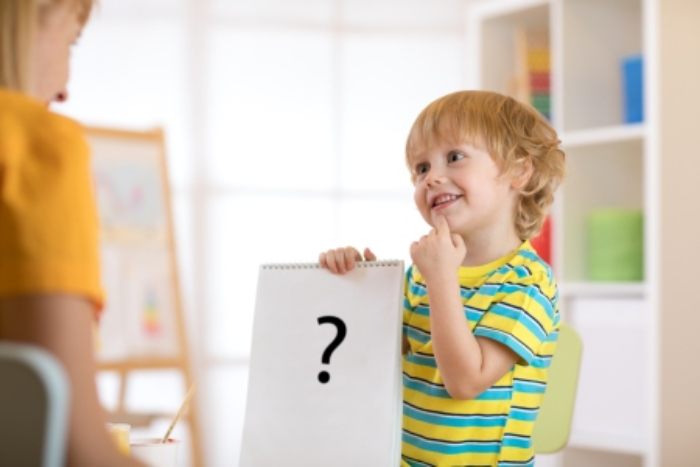
Preschool is the best time for a child to learn to problem solve in a fun way. The benefits of learning early will last a lifetime and the beauty of learning anything at a young age is that it is effortless .
It is like learning to play an instrument or picking up a new language – it’s just much easier and more natural at an early age.
Of all the many things preschoolers need to learn , what makes problem solving so important?
There aren’t many situations in life, at work or at school that don’t require some level of problem resolution.
Child’s play itself is filled with opportunity upon opportunity to solve all kinds of tricky situations and come up with solutions to challenges.
Problem Solving in Preschool
During the foundational years, children are constantly solving problems as they play .
Here are just a few examples of problem solving in early childhood :
- Resolving a fight over the same toy
- Reaching a ball that’s stuck in the tree
- Forming a circle while holding hands
- Making a bridge to connect two block towers
- Tying or untying a shoe
- Making up rules for a new game
- Trying to get the consistency of a mud cake right so it stops falling over
The more creative play opportunities and challenges children are given, the more they get to exercise their problem-solving muscles.
During free play , there are non-stop experiences for this, and parents and teachers can also encourage specific problem-solving skills through guided activities .
Problem Solving for Older Children
During the grades, children experience problems in many forms, some of which may be related to their academic, social and emotional well-being at school. Problems may come in the form of dealing with life issues, such as:
- Problems with friendships
- Struggling to understand something during a lesson
- Learning to balance the demands of sport and homework
- Finding the best way to study for a test
- Asking a teacher for help when needed
Problems will also form a large part of academic life as teachers will be actively developing this skill through various activities, for example:
- Solving a riddle or understanding a work of literature
- Working on projects with a friend
- Finding solutions during science experiments
- Solving mathematical problems
- Solving hypothetical problems during lessons
- Answering questions and completing exam papers
Children who have had practice during preschool will be a lot more capable when facing these challenges.
Solving Problems in Mathematics
Mathematics needs to be mentioned separately as although it is part of schooling, it is such a huge part and it depends heavily on a child’s ability to solve problems.
The entire subject of mathematics is based on solving problems. Whether you are adding 2 and 3, working out how many eggs will fit into each basket, or solving an algebraic expression, there is a problem in every question.
Mathematics is just a series of problems that need to be solved.
What we refer to as problem solving in Maths is usually answering word problems .
The reason many children find these so difficult to answer is that the question is presented as a problem through a story, rather than just numbers with symbols telling you what operation to use (addition, division, etc.)
This means a child is forced to think carefully, understand the problem and determine the best way to solve it.
These problems can involve various units (e.g. mass, capacity or currency) as well as fractions, decimals, equations and angles, to name a few. Problems tend to become more and more complex over the years.
My experience in the classroom has shown that many, many children struggle with solving word problems, from the early grades right into the senior years.
They struggle to analyze the question, understand it, determine what information they’ve been given, and what exactly they are required to solve.
The good news is that exposing a child to regular problem-solving activities and games in preschool can greatly help him to solve word problems later on in school.
If you need one good reason to do these kinds of activities, let it be for a smoother experience in mathematics – a subject so many children unnecessarily fear.
Problem Solving in the Workplace

Adults in the workplace seldom thrive without problem-solving skills. They are required to regularly solve problems .
As adults, employees are expected to independently deal with the frequent challenges, setbacks and problems that are a big part of every working environment.
Those who can face and solve their own problems will go further and cope better than those who seek constant help from others or cannot show initiative.
Some career websites even refer to problem solving as a universal job skill. They also mention that many employees are not good at it.
Again, although it may seem far removed, learning this skill at a young age will help a child cope right into adulthood and in the working world.
How to Teach Children Problem-Solving Skills
If early childhood is the best time to grow these skills in your young children, then how does one go about teaching them to toddlers, preschoolers and kindergarteners?
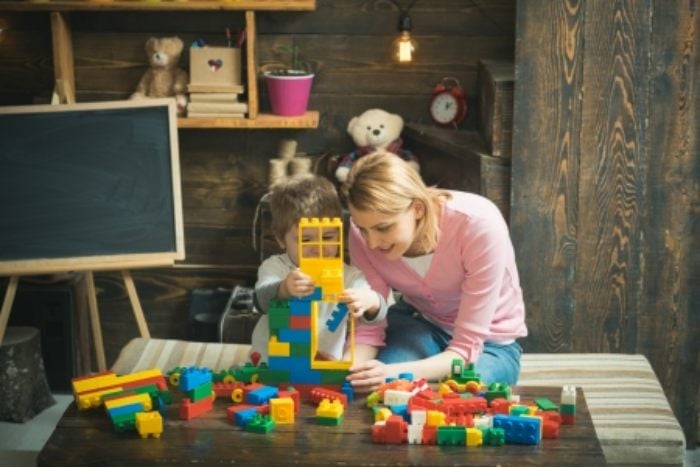
Problem solving can be taught in such a way that you expose your child to various opportunities where they will be faced with challenges.
You would not necessarily sit your 3-year-old down and tell or “teach” him all about fixing problems. Instead, you want to create opportunities for your child to grow this skill .
Using the brain to think and find solutions is a bit like working a muscle over time. Eventually, your muscle gets stronger and can handle more “ weight. ” Your child will learn to problem solve in two ways:
- Incidentally – through free play
- Through guided opportunities provided by a parent or teacher
If you make a point of encouraging thinking through games and activities, your child will develop stronger skills than if you let it all happen incidentally.
Problem-Solving Strategies and Steps
If we take a look at the steps involved in solving a problem, we can see that there are many layers involved and different types of skills. Here are the problem-solving steps according to the University of Ken.
Step 1: Identify the problem
Step 2: Define the problem
Step 3: Examine the options
Step 4: Act on a plan
Step 5: Look at the consequences
Therefore, activities at a preschool level need not present complicated high-level problems.
- A simple activity such as identifying differences in a picture can work on the first skill needed – identifying a problem.
- Playing with construction toys can develop a child’s ability to try various solutions and examine the options when faced with a problem such as trying to find the best way to build something.
- Playing Tic-Tac-Toe would make a child predict the consequences of placing their mark in a particular square.
The most basic of activities can work on all these skills and make children competent solution finders.
How to Teach Problem Solving with Questions
The language you use around your child and your questioning technique will also greatly affect their understanding of a problem or challenge as merely something waiting for a solution to be found .
While your child is playing or when she comes to you with a problem, ask open-ended questions that will guide her in finding a potential answer independently. Use the steps listed above to formulate your questions.
Here are some examples of questions:
- What do you think made the tower of blocks fall down?
- If we build it again, how can we change the structure so that it won’t fall down next time?
- Is there a better way we can do it? If you think of a different way, we can both try it and see which works better.
- Did that work? The tower fell again so let’s try another solution.
Resist the temptation to fix every one of your child’s problems, including conflict with friends or siblings. These are important opportunities for children to learn how to resolve things by negotiating, thinking and reasoning.
With time, your child will get used to seeing a problem, understanding it, weighing up the options, taking action and evaluating the consequences.
Problems will be seen as challenges to be faced logically and not “problems.”
10 Problem-Solving Activities for Preschoolers
Here are 10 simple, easy games and problem solving activities for kids at home or at school. Many of them are the kinds of activities children should have daily exposure to.
Puzzles are one of the best thinking activities out there. Each puzzle is basically one big set of muddled-up things to be sorted out and put back together again. Find out why puzzles are important for development .
Children should have regular exposure to puzzles. They are great for developing thinking skills.
The best types to choose are sturdy, wooden puzzles with a board. They last longer and the frame provides a structure to guide children when building.
2. Memory games
Memory games will develop your child’s memory and attention to detail.
Use pairs of matching pictures and turn them all face down, shuffled, on a table. Take turns choosing any two cards and turning them face up on the table. If you turn over a matching pair you keep the cards and if the pair doesn’t match, turn the cards back over until it is your turn to try again.
Encourage your child to concentrate and pay attention to where the pictures are and try to find a matching pair on each turn.
(Get your own set of printable memory card games here!)
3. Building with Construction Toys
Construction toys such as engineering blocks, a proper set of wooden blocks or Legos (shown below) should be a daily staple in your home.
Everything your child builds is a challenge because it requires thinking about what to build and how to put the pieces together to get a design that works and is functional.
Leave your child to construct freely and occasionally set a challenge and ask him to build a specific structure, with conditions. For example:
- Make two towers with a bridge joining them together
- Build a creature that stands on its own and has 3 arms.
Then watch your child wracking his brain until he finds a way to make his structure work.
4. Activity Books
These activity books are really fun and develop a child’s ability to identify problems and search for information.
5. Following Patterns
This simple activity can be played with a set of coloured blocks, shapes or counters.
Simply make a pattern with the blocks and ask your child to continue it. Vary the pattern by changing the colours, shapes or sizes.
This activity will train your child to analyse the given information, make sense of it, recognise the pattern and re-create it.
6. Story Time Questions
Get into the habit of asking questions during your daily story time that develop higher-order thinking skills . Instead of just reading and your child passively listening, ask questions throughout, concentrating on solving problems.
Here are some examples:
- Why do you think the bear did that?
- Do you think his friend will be happy? Why?
- What would you do if you were the monkey?
- How do you think Peter can make things better with his friend?
- If the crocodile had decided not to eat the rabbit, how could the story have ended?
7. Board Games
Board games are an excellent way to develop problem-solving skills.
Start off with simple games like Ludo and Snakes and Ladders to teach the skill of following rules and moving in a logical sequence.
Card games like Go Fish are also great for teaching young children to think ahead and solve problems.
8. Tic-Tac-Toe
This is a perfect game to teach decision-making skills , thinking before acting and weighing up the possible consequences.

Use a Tic Tac Toe Board or d raw a simple table like the one above on paper or a chalkboard.
Take turns to add a nought or a cross to the table and see who can make a row of three first.
Your child will probably catch on in no time and start thinking carefully before placing their symbol. This game can also be played with coloured counters or different objects.
9. Classifying and Grouping Activities
This activity can be done with a tin of buttons or beads or even by unpacking the dishwasher. The idea is to teach the skill of classifying and categorizing information by learning with physical objects. Here are some other ideas for categorizing:
- Separate the washing – mom’s clothes, dad’s clothes, etc; or socks, tops, shorts, etc.
- Empty out the cutlery drawer for cleaning, mix all the utensils up and then sort into knives, tablespoons, teaspoons, etc.
- Classify and sort out the toys in your child’s bedroom together – all books, construction toys, soft toys, etc.
- Play category games .
Here are more button activities for kids .
10. Building a Maze
This activity is lots of fun and suitable for any age. It is also going to be way more fun than doing a maze in an activity book, especially for younger children.
Draw a big maze on the paving with sidewalk chalk . Make passages, including one or two that end in a dead-end. Teach your kids to find their way out .
As your child gets better at figuring out a route and finding the way out, make the maze more complex and add more dead-end passages.
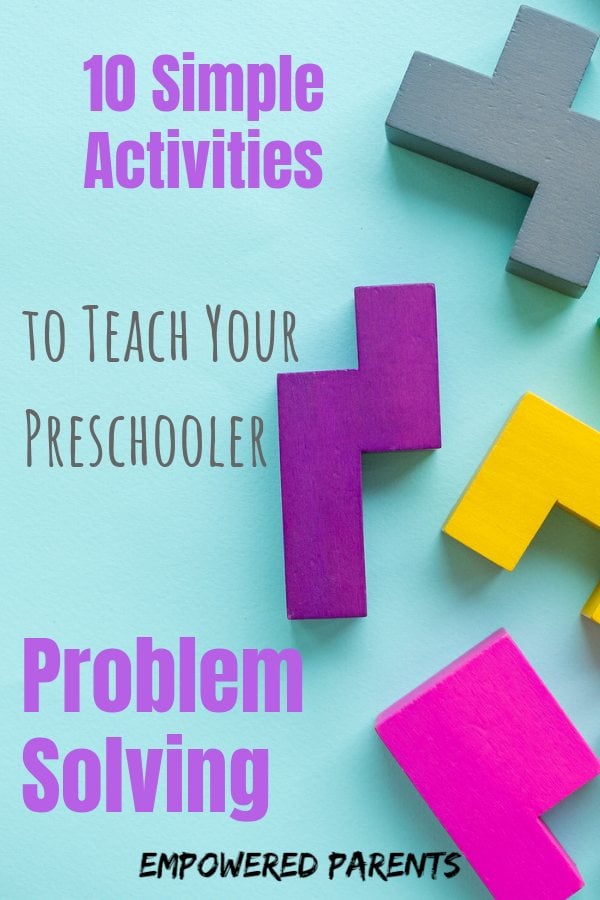
This site uses Akismet to reduce spam. Learn how your comment data is processed .
Friday 3rd of June 2022
hi maam , This Is Uma from India,Can i get this in pdf format or a book. Thank You
Tanja Mcilroy
Monday 6th of June 2022
Hi Uma, thanks for your message. These articles are not available in PDF, but you are welcome to copy and paste them from the website, as long as you add the reference: https://empoweredparents.co/problem-solving-activities-preschoolers/ Thanks for reading!
Wednesday 20th of May 2020
Very very useful content. Good work. Thank you.
Friday 22nd of May 2020
Thanks Ann.
Tuesday 19th of May 2020
Would like to download the free activity pack please.
Hi Kelly, Please download the activity pack on this page: www.empoweredparents.co
We use cookies on our website to support technical features that enhance your user experience, and to help us improve our website. By continuing to use this website, you accept our privacy policy .
- Student Login
- Call Us: 888-549-6755
- 888-559-6763
- Search site Search our site Search Now Close
- Request Info
Skip to Content (Press Enter)
Problem Solving for Preschoolers: 9 Ways to Strengthen Their Skills
By Carrie Mesrobian on 12/20/2021
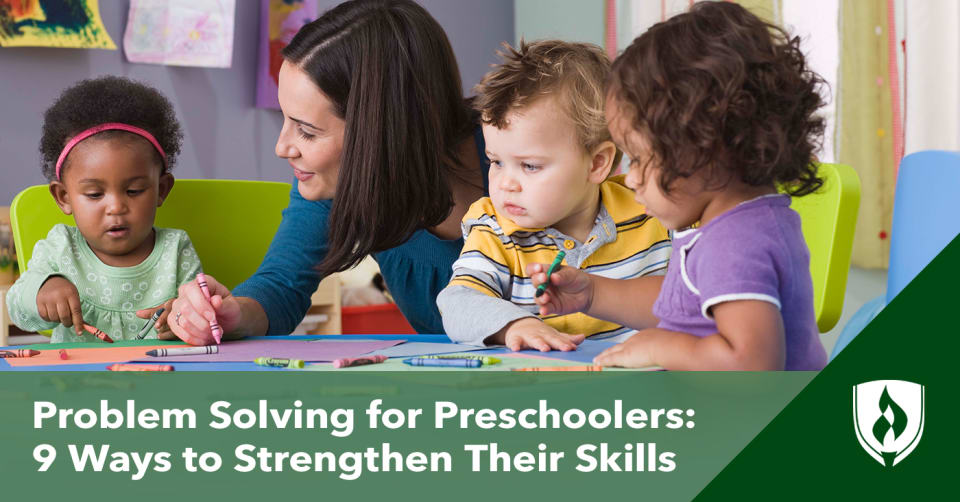
As an adult, you likely run into dozens of small issues every day that require problem-solving skills. While you might not give much thought to the process of figuring out the best way to put groceries away or how to run errands without backtracking all over town anymore, these basic problem-solving abilities weren’t always so simple. You refined these skills as a child with practice and guidance from adults.
Building problem-solving skills in preschool-age children is a foundational duty of all parents and early childhood educators. But it can be easy to lose sight of how to incorporate these skills, especially when family life gets hectic or classrooms become busy.
For some fresh perspective on how to look at problem solving from a preschooler lens, we asked several experts in the early childhood education (ECE) field how they teach skills in their own classrooms. Read on for some insight on helping the young ones in your life figure out creative and workable solutions.
9 Tried-and-true ways to develop problem-solving skills in preschoolers
1. use everyday moments.
The handy thing about teaching problem-solving skills at this age is that there are no textbooks, worksheets or special equipment involved. Every day, normal situations provide all the materials you’ll need to practice.
“Parents can help their children develop problem-solving skills through ongoing interactions with their children throughout their day,” explains Paula Polito, owner of Beary Cherry Tree Child Development Center. “At home, in the grocery store and in everyday routines, such as mealtime or bath time.”
Rebecah Freeling, parent coach and child behavior expert at Wits’ End Parenting ®, believes household chores are an excellent way to teach problem solving.
“Housework is a matter of solving one problem after another. All these things go wrong when you’re doing housework,” Freeling explains. “Kids get this idea that problems are no big deal. Problems happen all the time and we just solve them.”
That doesn’t necessarily mean making a chore chart, though Freeling says some kids respond well to them. Instead, she encourages parents to try to integrate kids into the everyday maintenance of the home, and when possible, work alongside them.
“Say, ‘What would you like to be in charge of today?’” Freeling advises. “It’s the difference between getting to do something versus having to do it.”
While a grocery store trip can sometimes be a stressful rush, there are infinite opportunities to practice problem solving, says Dr. Elizabeth DeWitt, senior curriculum and implementation specialist at Learning Without Tears . DeWitt suggests using a list or a recipe of ingredients and asking your child to help you find certain items.
“Say, ‘I have this recipe that says we need chicken, rice and soup. I see chicken and soup in our cart. What are we missing? What could we or should we add?’” DeWitt says.
Taking the time to simply talk children through the thought process—no matter how simple it seems—helps reinforce and show them how you came to that conclusion.
2. Ask open-ended questions
As in the grocery store situation, just asking questions is a powerful way to foster both problem solving and creativity in young children.
“When your child comes across a difficult task, like zipping their coat, it can often be faster and easier to stop what you're doing and zip it for them,” says Becky Loftfield, an ECE teacher at Community of Saints Preschool .
If a child says, “I can't do this,” Loftfield advises asking “how come?” This lets them answer in their own words. “Asking ‘how come’ usually works better than ‘why’ for young children,” Loftfield adds.
Pausing to listen to the child’s explanation of the problem in their own words guides what happens next.
“Perhaps they don't know how zippers line up at the bottom for the mechanism to slide,” says Loftfield. “Maybe the zipper itself is too small for them to grip. Encourage your child to explore what the problem actually is beyond ‘I can't zip my coat.’”
Polito also believes in the power of conversational questions to build problem-solving skills.
“For example, parents can ask a child to explain why they did something a certain way,” Polito explains. “Providing hints to children as opposed to giving them the answer is also another way for children to think deeper about a concept.”
“We promote more learning when we allow them to think through the question,” Polito says.
3. Center emotions
All problem solving involves emotions. In the zipping-up-the-coat situation, a child might act frustrated, get angry or start crying. Handling the emotion is often the key to the child sorting out the situation, as well as learning that they are capable of finding solutions.
“We are not born knowing how to solve problems or having the vocabulary to express our feelings,” says Torri Parker, a pre-K instructor at Aspen Academy . “Often I hear a student telling another child ‘You’re not my friend,’ when what the child is meaning is that they are hurt by something their friend did, or they would like some space.”
Parker suggests picture books that focus on emotions and offer multiple ways to express them can be a powerful way to help kids not only problem solve but also identify emotions in their peers and develop greater empathy.
“By providing the words needed to convey those feelings, a child learns what that feeling feels like and can then have the vocabulary in the future to solve a conflict like that,” Parker says.
4. Read books and tell stories
Sometimes, not having to tackle a problem that’s happening in the moment is a good way to practice these skills. This is where reading books and telling stories come into play.
“Books have the opportunity to build incredible social-emotional skills,” DeWitt says. Not only are kids looking for solutions to the characters’ problems, they’re also building vocabulary, narrative skills and critical thinking as well.
Nicole Evert, a pre-K teacher and ECE trainer at Creating Butterflies, recommends the use of “ social stories ” for preschool problem solving.
“A social story introduces a problem, then shows successful ways to solve the problem,” Evert explains. “Sometimes a social story will include silly pages that show how to not solve the problem.”
Social stories can be especially helpful for children with anxiety about certain activities or routines, as well as kids with disabilities.
“Parents and educators can even make their own social stories using pictures of the specific child and their environment, which can be so powerful,” adds Evert.
5. Take advantage of natural curiosities and interests
One approach to helping young children practice problem-solving skills is in the discovery of something they are authentically interested in learning about. Adam Cole, music director at The Willow School , explains his school’s Reggio Emilia -inspired philosophy where a teacher gives students “provocations.”
“Provocations are opportunities for them to encounter something for which they may then express further interest,” Cole explains. “For instance, a teacher may set up a drawing provocation, and the children may draw buildings. The teacher may pick up on this and talk with the children about buildings, asking how they are built and where they can find more. This may lead to research or trips to see buildings and will continue on until the thread plays itself out.”
Because the focus is centered on topics or activities that already capture the child’s interest, the problem-solving aspect is more meaningful and compelling for many children. Because the teacher works alongside the child to problem solve, it offers space for the teacher to ask questions and encourage further creativity.
“This is an organic way to learn to solve problems, bolstered by the intrinsic desire of the child to learn more,” Cole adds.
6. Model problem solving
Preschoolers are always observing our behavior as parents and teachers.
“Given that 90% of brain development occurs between birth and four years of age, we have an opportunity during these preschool years to set our children up for success,” says Polito.
It may seem obvious, but our strategies and methods provide kids with in-the-moment examples of how to handle life with things go wrong.
“From a teaching perspective, you can think, ‘I’m teaching this child how to be who they are, how to live life,’” says Freeling. “A spill derails you a bit. So, stop and ask the child, ‘How should I clean this up?’”
Loftfield agrees. “Parents and educators can act as guides for a child’s experience, demonstrating how they problem solve and modeling what they want to see.”
This doesn’t mean that the adult must do everything perfectly or without emotions, however. Managing feelings is all part of learning to problem solve. “Allow time for mistakes, time for meltdowns and time for celebration,” Loftfield advises.
7. Look to the child for the solution
This last one might seem counter to number six above, but Freeling believes that parents and teachers can help children learn to problem solve by removing themselves from the process.
“Moving past your instincts to fix or smooth over problems helps a lot,” Freeling says. “Project the kid’s age in your mind. Think of a 25-year-old graduating from college. I want them to be able to ask for a higher salary, to vocalize what they want. You’re not just getting kids to be obedient—you’re teaching them how to negotiate the world.”
This is why Freeling advises adults to try coming into a problem-solving situation with children without a ready-made solution. She offers an example: there’s only one red truck, and two children both want to play with it.
“You’re really looking to the child and trusting their thinking and intelligence for solutions you hadn’t thought of,” Freeling says. She recommends repeating questions until the kids come to a decision and as long as no one’s at risk of injury, standing by the children’s solution.
“They might say, ‘We have to paint all the trucks red, since everyone wants a red truck,’” Freeling says. This might seem odd to an adult. But the point is to make the children a vital part of the creative process instead of just getting them to comply with the adult’s idea.
Developing empathy also factors into this scenario, especially in situations where problems stem from hurt feelings or other emotional conflicts. Freeling believes that finding ways to make restitution to others they’ve hurt is a better practice than forcing kids to apologize. She suggests having a child draw a picture of something the upset child likes as a way to make amends and help them recognize the other’s individuality.
“We don’t want kids to feel guilt for hurting someone; we want them to feel compassion,” Freeling says. “And solving problems in a relationship requires empathy.”
Is an early childhood education career right for you?
Enjoying the process of seeing life through a little one’s eyes? Early childhood education is an exciting, dynamic field full of creativity and potential to positively impact the lives of children and their families. If helping kids learn and grow sounds like something you’d be good at, check out our article “9 Signs You Should Be Teaching Preschool.”
Related Articles:
- Working with Defiant Preschoolers: What Educators Should Know
- 10 Fun Exercises for Preschoolers That Do More Than Just Burn Energy
Wits’ End Parenting is a registered trademark of Wits’ End Parenting, Inc. This program does not prepare students for licensed teaching positions in elementary or secondary schools . A Bachelor’s degree and a state teaching license are typically required to work as a teacher in most school settings; however, states, municipalities, districts or individual schools may have more stringent licensing requirements. Childcare facilities and states establish qualifications for staff who work with children, and often implement guidelines regarding age, education, experience and professional development. Students must determine the licensure requirements for the state and facilities in which they intend to work.
- Share on Facebook
- Share on Twitter
- Share on Pinterest
- Share on LinkedIn
Request More Information
Talk with an admissions advisor today.
Fill out the form to receive information about:
- Program Details and Applying for Classes
- Financial Aid (for those who qualify)
- Customized Support Services
- Detailed Program Plans
There are some errors in the form. Please correct the errors and submit again.
Please enter your first name.
Please enter your last name.
There is an error in email. Make sure your answer has:
- An "@" symbol
- A suffix such as ".com", ".edu", etc.
There is an error in phone number. Make sure your answer has:
- 10 digits with no dashes or spaces
- No country code (e.g. "1" for USA)
There is an error in ZIP code. Make sure your answer has only 5 digits.
Please choose a School of study.
Please choose a program.
Please choose a degree.
The program you have selected is not available in your ZIP code. Please select another program or contact an Admissions Advisor (877.530.9600) for help.
The program you have selected requires a nursing license. Please select another program or contact an Admissions Advisor (877.530.9600) for help.
Rasmussen University is not enrolling students in your state at this time.
By selecting "Submit," I authorize Rasmussen University to contact me by email, phone or text message at the number provided. There is no obligation to enroll. This site is protected by reCAPTCHA and the Google Privacy Policy and Terms of Service apply.
About the author
Carrie Mesrobian
Carrie is a freelance copywriter at Collegis Education. She researches and writes articles, on behalf of Rasmussen University, to help empower students to achieve their career dreams through higher education.

Posted in Early Childhood Education
- child development
- ECE activities
- early childhood education
Related Content

Robbie Gould | 08.01.2024
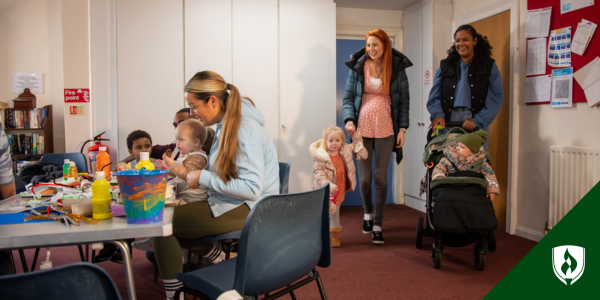
Noelle Hartt | 02.08.2024

Hope Rothenberg | 01.04.2024
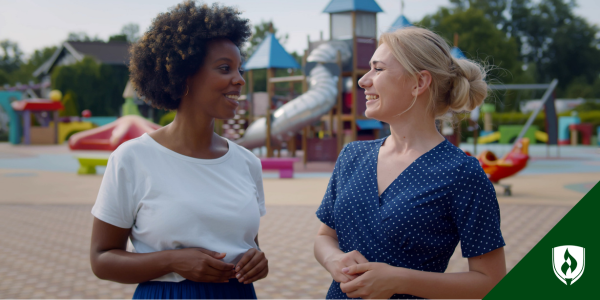
Brianna Flavin | 12.14.2023
This piece of ad content was created by Rasmussen University to support its educational programs. Rasmussen University may not prepare students for all positions featured within this content. Please visit www.rasmussen.edu/degrees for a list of programs offered. External links provided on rasmussen.edu are for reference only. Rasmussen University does not guarantee, approve, control, or specifically endorse the information or products available on websites linked to, and is not endorsed by website owners, authors and/or organizations referenced. Rasmussen University is accredited by the Higher Learning Commission, an institutional accreditation agency recognized by the U.S. Department of Education.

Discovery Play with Littles
2:01 pm ·
15 Powerful Problem Solving Activities for Toddlers and Preschoolers
I looked over to her table and she’s crying. Again. While everyone else is happily working away, she sat there, unable to move, just crying.
Not asking for help.
Not trying to solve her problem.
Just crying.
I took a deep breath before heading over. We’ve already been at this for several months…isn’t it about time the problem-solving has kicked in yet?
One glance and I could tell what her problem was. She didn’t have her pencil.
Know how I knew?
It laid on the floor beside her. In plain sight.
As a kindergarten teacher, I don’t jump right in and solve problems for kids. It’s good for them to try to solve the problem themselves. This is something she struggled with.
I reminded myself of the need for patience and empathy as I walked up to her. “What’s wrong, Amanda?”
“I…can’t…find…my…pencil….” she sputtered out between sobs.
“Ok, that’s a problem we can solve. What have you tried?”
“I don’t know.”
After a long time trying to first, calm her down, and second, come up with some strategies she could try, she finally found her pencil. At that point, everyone else had finished the project.

What is Problem Solving?
Problem-solving is the process of finding a solution to your problem . This can be quite tricky for some young children, especially those with little experience in finding more than one way to solve a problem.
Why is Problem Solving Important?
Problem-solving skills are used throughout childhood into adulthood. As adults, we solve problems on a daily basis. Some problems we solve without thinking much- I wanted to make tacos for dinner but forgot to buy the ground beef. What are we going to have for dinner now?
Other problems are significantly more complicated.
Problems for kiddos can be problems with friendships, the inability to find something that’s needed, or even what to do when things don’t go your way.
Kids who lack problem-solving skills struggle to maintain friendships or even begin to attempt to solve their own problems.
Children who lack problem-solving skills are at a higher risk for depression as well.
What Are Problem-Solving Skills?
Problem-solving skills are:
- Breaking Down a Problem into Smaller Parts
- Communication
- Decision-making
- Logical Reasoning
- Perseverance
That’s a big list to teach toddlers and preschoolers. Where do you begin?
The Problem-Solving Steps
Sometimes kids are so overwhelmed with frustration that it affects their ability to solve problems.
Kids feel safe in routines, and routines help them learn and grow. After a few times of repeating this routine, you’ll find your kiddo starts to do this on their own.
It’s important not to skip straight to solving the problem , because your kiddo needs to be in a calm state of mind to solve the problem, and also they need to know their feelings are valid.
- The first thing to do when your kiddo is struggling with problem-solving is to validate their emotions.
In doing this, they will feel more understood and learn that their emotions are okay. There are no bad feelings, and we must learn how to manage our emotions.
This might sound something like “Oh, I can see you are really frustrated that the block won’t fit on there right. Let’s take some deep breaths to help us calm down before we think about what to do next.”
- Next, work through your calm-down process . This may be taking some deep breaths together, hugging a stuffie, or giving your kiddo some quiet time to calm down their heart and mind.
- Identify the problem . This sounds like something you may have already done (before the meltdown) but it’s important to be very clear on the problem you’re solving. Have the child tell you their problem out loud.
- Move on to solution-finding . When your kiddo is ready, talk about what the problem is and three possible solutions. When possible, let your kiddo do all of the talking. This allows him to practice his problem-solving skills. It’s important to remind him that the first thing he tries may not work, and that’s ok. There’s always another way to solve the problem. If he’s prepared for this, solutions that don’t work won’t be such a frustrating experience.
- After you’ve done that, test your solutions one by one. See what works. If you haven’t found a solution yet, go back and think of different ways you might be able to solve your problem and try again.

Are you tired of hearing “It’s TOO HARD!” followed by a meltdown?
Using this one simple phrase you’ll get in this powerful lesson, you’ll not only be able to help your kiddo not give up but you’ll:
>Activate their superpower of perseverance so that they can turn around a meltdown and keep trying
>Inspire them to use perseverance …even when it’s hard
>Teach them to recognize the warning signs of giving up , and how to turn it around by taking control of their choices.
Grab your powerful FREE video lesson to teach your kiddo one of the most powerful keys to perseverance.
Powerful Activities that Teach Problem-Solving Skills to Toddlers & Preschoolers
These activities below may look simple, but don’t let that deter you from trying them. A lot happens in little developing brains and these powerful activities help toddlers and preschoolers make connections and develop {many} essential skills-more than just problem-solving.
As an Amazon Associate, I earn from qualifying purchases at no additional cost to you.
Puzzles are fun and a great way to encourage cognitive development in children. They are great for spacial reasoning and strengthening problem-solving skills. They also develop memory skills, critical thinking, and the ability to plan and execute the plan. Toddlers will enjoy the simple puzzles, and preschoolers will do great with floor puzzles with larger puzzle pieces.

Doing Simple Chores
Doing simple chores is a great way to teach children problem-solving skills, and it strengthens responsibility and perseverance as well.
During the toddler years , you may start with just picking up their toys, or helping you put their dirty clothes in the hamper.
Preschoolers can take their dirty dishes to the sink (or load them in the dishwasher), collect the trash, dust, wipe baseboards, and do their own personal care items like making their bed, taking care of their dirty clothes, and putting clean clothes away.
Stacking Rings
When watching a toddler play with stacking rings it doesn’t look like much is happening, but playing with these toys is full of ways to encourage development. It helps with visual and spacial perception and planning ahead, but it also with balance control, crossing the midline, creative play, and gross motor skills. Not to mention it’s a great opportunity to practice problem-solving.

Playing Hide-and-Seek
Hide and seek has many surprising benefits for kids. Playing hide and seek is like a treasure hunt that helps develop gross motor skills and encourages physical development, as well as problem-solving skills. It also helps young children develop visual tracking, working memory, and social-emotional skills.

Imaginative Play
Imaginative play (also called role-play) builds important skills. Through pretending to be in different situations, kids develop social skills, emotional skills, better communication, and problem-solving skills. Imaginative play is a great idea for young toddlers all the way to older children.
Free Play
Many young children don’t have {enough} time for free play. Free play is important for healthy brain development , not only developing imagination, cooperation, physical skills, and independence but also providing a great opportunity to strengthen problem-solving skills.
Playing with Wooden Blocks
Building blocks are a fun way for children to develop creative thinking, imagination, problem-solving, fine motor skills, and if working with others, cooperation, communication, and friendship.

Playing Memory
Memory games improve attention, focus, visual recognition, and concentration. It helps children recognize details and of course, strengthens problem-solving skills.

Ask Questions
When I see my son struggling with something, my first instinct is to give him choices or at least lead him in the right direction. The better thing to do is to ask very open-ended questions that lead his process, not his thoughts.
Questions like “What’s one way to solve your problem?” are much more effective in teaching problem-solving skills than “Well, where did you last see your stuffy?”
Read Books and Social Stories
Reading books is one of my favorite ways to teach any skill. It’s extremely effective at teaching, and it’s also an amazing bonding time with kids.
When we read stories, our brain reacts as if we’re living in the story. This is why reading books about skills such as problem-solving is so effective.
Kids of all ages learn from the people they love . (Yes, even those older kids who you don’t think are paying attention.) Often as adults, we’re too busy going through our daily routine to think about talking about the way we solved the problem at work that day.
Talking about how you use skills such as problem-solving, perseverance, and integrity is a great way to set an example, and an expectation that this is how we do things, and it will provide encouragement for your kiddo to do the same.
Scavenger Hunts
Scavenger hunts are a great group activity that can strengthen your child’s logical thinking and problem-solving skills.
When Your Kiddo is Ready, Add These Activities
Preschoolers would benefit from all of the fun activities on the list above and when they’re ready, feel free to add in the following activities.
Mazes are great for problem-solving and perseverance, but your kiddo will need to have decent fine motor skills to do these activities. Mazes are one of our favorite activities. We love to take our activity book of mazes in the car with us for road trips.

Board Games
Board games are a good way to strengthen problem-solving, teamwork, planning skills, patience, sportsmanship, and communication skills. They also strengthen family relationships by providing some intentional time of connection .
Any board game can also be turned into an academic game with just a deck of cards for whatever skill you’re working on. If you’re working on the alphabet, put one letter on each card. Before each player’s turn, they draw a letter card and say the letter’s name. (You may accidentally forget the name of a letter every now and then to see if your kiddo is really paying attention!)
Allow Opportunities for Hands-On Investigations
Kids are tactile. They love to touch and explore things with their hands. This is a good activity for toddlers also, as long as they are out of the putting everything in their mouth stage. Hands-on exploration is great for language development, sensory exploration, and problem-solving.
Allowing kids to investigate with their hands allows them to see how the world works up close. It also gives them time and space to try to make things work…and problem-solve when it doesn’t go as they think it should.
The Most Difficult Way (and Most Important Way) To Strengthen Problem-Solving Skills
Watching our kids struggle is hard ! We don’t want to see them having a hard time…and most of the time we don’t want to deal with the impending meltdown. Standing back and giving our kids time and space to work through even simple problems is hard to do. It’s also the most important way to strengthen problem-solving skills.
As parents, we’re like frogs in boiling water. When our kids are infants, they need us to recognize their needs and solve them immediately. As they get older, they can point to what they want, but we still have a lot of interpreting and problem-solving to do on our own. If we aren’t careful, we stay in this stage and don’t teach our kiddos the steps to problem-solving for themselves.
The next most difficult thing? Allowing natural consequences to happen. (As long as your child is safe of course.) If your child saves their money for a long time to buy a new toy, but walks down the toy aisle and picks up something you know they’ll be disappointed with, let it happen. It will teach a valuable lesson that will last for years to come.
Another Essential Part of Problem-Solving
Perseverance is a big part of problem-solving. We are rarely able to solve problems the first time, and it’s essential that kids can find more than one solution to a problem. Studies have found that perseverance is actually the biggest predictor of success, even more than aptitude or raw talent.
An entire module is dedicated to perseverance in our course for kids, Super Kid Adventures . Your kiddo will get 25 teacher-led lessons on character traits (perseverance, empathy, friendship, responsibility, and wellness) and activities that take their learning further.

Want a free preview? Grab a FREE Perseverance video lesson that teaches your kiddo one of the most important secrets that help them use perseverance.
Want More?
If you like this, you’ll love:
The Ultimate List of Books that Teach Perseverance
7 Simple Ways to Encourage Independence in Young Children
How to Help Your Child Develop Self-Help Skills
Your Turn
What are your favorite ways to teach problem-solving skills?
About Elizabeth
Elizabeth is a mama of two boys, a former teacher, and the founder of Discovery Play with Littles. Her mission is to make raising kids with character simple and fun. Join us for our best learning through play ideas, character growth activities, and family connection ideas so you can watch your child thrive.
Reader Interactions
As a SLP trying to guide parents as I work with their child. I would like to know what toys to recommend to my parents as I assist in guiding their child’s development in cognition and expressive language.

Perseverance is the biggest predictor of success, even more than raw talent or aptitude.
Grab a FREE lesson to teach your kiddo one of the keys to perseverance...which is how we talk to our brains.
They'll learn what to say when they encounter something difficult, and why it's so important.
PLAY is often talked about as if it were a relief from serious learning. But for children play is serious learning. Play is really the work of childhood. -Mr. Rogers

By Audience
- Therapist Toolbox
- Teacher Toolbox
- Parent Toolbox
- Explore All
By Category
- Organization
- Impulse Control
- When Executive Function Skills Impair Handwriting
- Executive Functioning in School
- Executive Functioning Skills- Teach Planning and Prioritization
- Adults With Executive Function Disorder
- How to Teach Foresight
- Bilateral Coordination
- Hand Strengthening Activities
- What is Finger Isolation?
- Occupational Therapy at Home
- Fine Motor Skills Needed at School
- What are Fine Motor Skills
- Fine Motor Activities to Improve Open Thumb Web Space
- Indoor Toddler Activities
- Outdoor Play
- Self-Dressing
- Best Shoe Tying Tips
- Potty Training
- Cooking With Kids
- Scissor Skills
- Line Awareness
- Spatial Awareness
- Size Awareness
- Pencil Control
- Pencil Grasp
- Letter Formation
- Proprioception
- How to Create a Sensory Diet
- Visual Perception
- Eye-Hand Coordination
- How Vision Problems Affect Learning
- Vision Activities for Kids
- What is Visual Attention?
- Activities to Improve Smooth Visual Pursuits
- What is Visual Scanning
- Classroom Accommodations for Visual Impairments
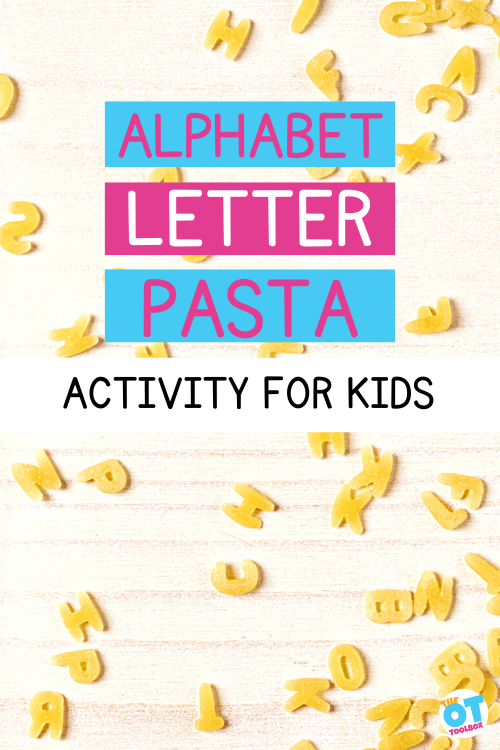
Learning with Dyed Alphabet Pasta
- Free Resources
- Members Club
- Development , Executive Functioning Skills
Problem Solving Activities for Preschoolers
Colleen beck otr/l.
- by Colleen Beck OTR/L
- October 22, 2021
It can be frustrating when children act without thinking of the consequences. In this blog post, you’ll learn about the development of problem solving in specific parts of our brain, discover important aspects of executive functioning that impact problem solving abilities, how to teach problem solving to preschoolers, and problem solving activities for preschoolers and young children so they can use words instead of the preschooler’s behaviors or tantrums.
Best of all, many of our favorite fine motor activities for preschoolers support problem solving skills in early childhood.
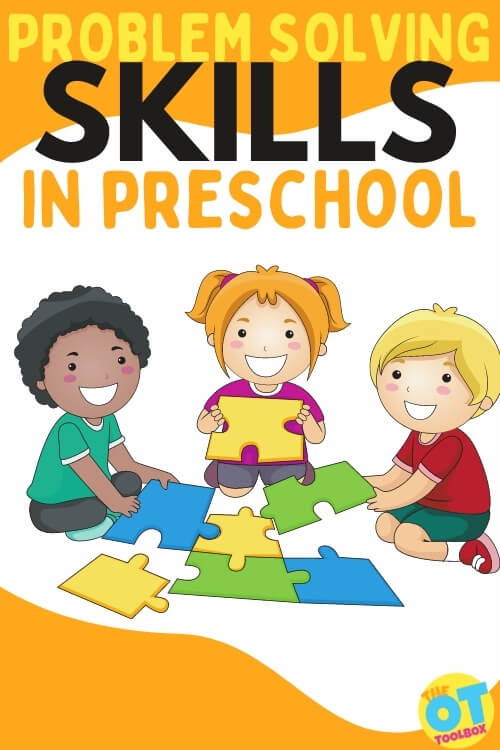
Problem Solving Activities for Preschoolers
Before we get into the problem solving activities for preschoolers, and specific strategies to use in early childhood, it’s important to understand the development of the problem-solving process in kids. Supporting small children by giving them the skills to be problem solvers takes time and practice. We’ll get to those specific strategies below.
But first, does this scenario sound familiar at all…
I just don’t understand why Johnny keeps throwing the ball in the house. Doesn’t he realized that he could break the window? Johnny is three and he loves to play with his tennis ball in the house. Even though I have told him over and over again that we don’t throw them in the house, I still catch him sneaking them indoors at least once a week.
Before we can address problem solving by helping kids look at the big picture and coming up with creative solutions for problem solving issues, we need to understand what is happening developmentally. Self-reflection is a challenging cognitive skill, and for young learners!
Let’s take a better look at the development of problem solving skills…
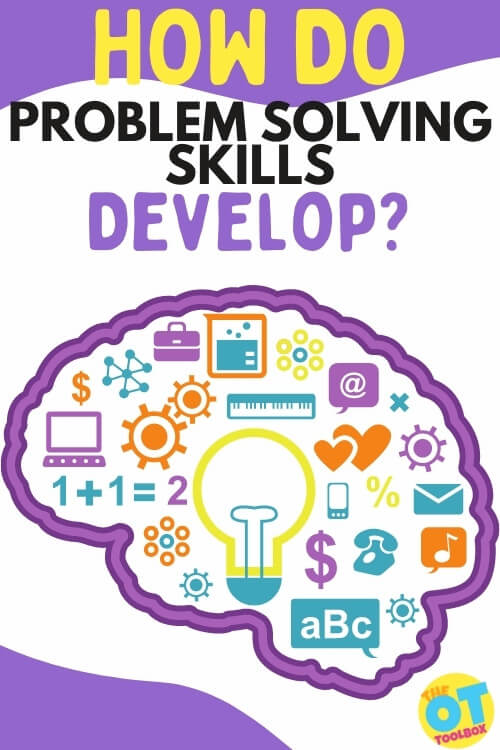
Development of Problem Solving Skills
It’s through play, observation of others, and practice that young learners are developing problem solving skills in early childhood .
Problem solving, rational thinking and reasoning are all skills that are controlled by a part of our brain called the prefrontal cortex. Our brains grow exponentially over the first five years of life, but not the part of our brain that helps us with critical thinking and problem solving skills. This part of our brain, called the prefrontal cortex, isn’t fully developed until we turn 25 years old!
As babies, we are exposed every day to new experiences, but at this age we don’t comprehend how these experiences affect us and those around us. If only children could think through their problems. This resource on executive functioning skills offers more information.
Have you noticed that it can be a bit scary when teenagers get their drivers licenses? They don’t always think of “what might happen.” This is due to their prefrontal cortex not being fully developed.
But what about our three and four year olds? We know they can count, ask questions and get the cookie off the counter in a very sneaky way when we aren’t looking. In the Early Years study of 2011 called Making decisions, Taking action , they describe the prefrontal cortex entering a rapid period of development, making critical interconnections with our limbic system. (link: )
This study states “The prefrontal cortex pathways that underlie these capacities are unique to human brains and take a long time to mature. Early connections begin in infancy. Between age 3 and 5 years, the prefrontal cortex circuits enter a rapid period of development and make critical interconnections with the limbic system. During adolescence and early adulthood, the neural pathways are refined and become more efficient.”
What is so great about this part of the brain anyway?
As the prefrontal cortex (that is located behind out eyes) develops over the years, we are able to engage with situations differently, assessing our surroundings in a new way. As we develop these new executive functioning skills, we are able to keep ourselves safe, build friendships and become successful in our careers.
Related, these friendship activities for preschoolers offers ideas and strategies to support social emotional development.
This peer reviewed report competed by Merve Cikili Utyun, called Development Period of Prefrontal Cortex, discusses how amazing this part of our brain is, and how each of the three sections control different aspects of our functioning. It states that:
“ PFC includes the following Broadman Areas (BA): 8, 9, 10, 11, 12, 44, 45, 46, 47. “The dorsolateral frontal cortex (BA) 9/46 has been functioned in many cognitive process, including processing spatial information, monitoring and manipulation of working memory, the implementation of strategies to facilitate memory, response selection, the organization of material before encoding, and the verification and evaluation of representations that have been retrieved from long-term memory.
The mid-ventrolateral frontal cortex (BA 47) has implicated cognitive functions, including the selection, comparison, and judgment of stimuli held in short-term and long-term memory, processing non-spatial information, task switching, reversal learning, stimulus selection, the specification of retrieval cues, and the ‘elaboration encoding’ of information into episodic memory.
BA 10, the most anterior aspect of the PFC, is a region of association cortex known to be involved in higher cognitive functions, such as planning future actions and decision-making. BAs 44 and 45, include part of the inferior frontal and these regions’ functions are language production, linguistic motor control, sequencing, planning, syntax, and phonological processing.
Finally, the orbitofrontal cortex mostly (BA 47, 10, 11, 13) in the orbitofrontal cortex has been implicated in processes that involve the motivational or emotional value of incoming information, including the representation of primary (unlearned) reinforcers such as taste, smell, and touch, the representation of learnt relationships between arbitrary neutral stimuli and rewards or punishments, and the integration of this information to guide response selection, suppression, and decision making.”
Wow! No wonder it takes so long for this part of our brain to fully develop. Problem solving skills in preschoolers take time to develop!
When Johnny is throwing the ball inside the house, he is thinking about what is happening now, in the present. Not what has happened in the past (when he broke the window at grandmas house a year ago) or that breaking a window might happen in the future.
What are some problem solving techniques?
Solving problems is a skill that all preschoolers need support with. This critical skill doesn’t happen overnight. It takes time and practice to become second nature.
It’s hard for us, as adults, to remember that children ages 3-5 (preschool-aged) don’t yet have the brain capacity to problem solve on their own, or remember what they learned from a situation a week ago.
Just like when Andrew was painting at the easel and his paintbrush got stuck in the container. Instead of asking for help or trying to “unstick” the brush, he screamed. Or when Sally and Samantha ran outside to grab the red bouncy ball, Samantha screamed when Sally grabs it first. She didn’t see the other red bouncy ball in the bucket next to the bikes.
Try some of these problem solving activities for kids :
Observation- Children need problem solving strategies that they can observe, and then practice in their everyday lives. Let kids see you talk through problems as you “figure out” a solution. This gives children a chance to see a problem-solving approach in real life situations. They get to see problem solving scenarios in action.
Repetition- Repetition supports brain growth in every area of development including problem solving, executive functioning, motor development, language skills and social development.
Multisensory Activities- Children learn best with multi-sensory cues, learning new skills through seeing, touching, hearing and experiencing the skills they are learning. In 2013, the US National Library of Medicine published an article titled Neuropsychiatr Dis Treat. stating “The prefrontal cortex acquires information from all of the senses and orchestrates thoughts and actions in order to achieve specific goals.” (link: https://www.ncbi.nlm.nih.gov/pmc/articles/PMC3621648/)
Creative Activities- Solving problems is a skill that all preschoolers need support with. It’s hard for us, as adults, to remember they don’t yet have the brain capacity to problem solve on their own. The best way to teach children how to problem solve, it to create activities that support these new skills in a positive way, that their developing brain understands. This letter to future self is one activity to work on goal achievement even at a young age. Preschoolers can draw a picture of what they would like to do or be as an older child or as a teenager or adult.
Problem Solving Activities for Preschool
Here are 3 Simple Ways to Teach Preschoolers to Solve Problems
1.Teaching executive functioning and problem solving skills in everyday situations will support the growth of a child’s prefrontal cortex. For example, these activities that teach executive functioning at the beach show how much thought and preparation goes into building a simple sand castles.
- Children have to think about how much sand to use, how to keep it standing, how to prevent sand from getting into their eyes and how to create another one if the one they are building falls down.
- They must create, plan ahead, problem solve when things get tough and communicate to adults and peers for help.
What other activities does your child do on a regular basis that requires all areas of the prefrontal cortex to activate?
2.When children become upset, their emotions become so overwhelming that they can’t think. In order to calm down and problem solve, they need to access a multi sensory way to help them remember how to do that.
Soothing Sammy gives children tactile and visual cues that remind them how to calm down and problem solve in a developmentally appropriate way. They can be reminded of this positive reinforcement with two words “Sammy Time!”
By reading the book about the sweet golden retriever, who understands that everyone feels upset sometimes, children are encouraged to use all of the sensory strategies to calm down. They can talk to Sammy about what is happening and think through their problem to create a solution.
Ashlie’s four year old daughter did just this. She reports: “When Molly was having some big emotions about coloring a picture and needed to calm down, she visited Sammy and returned with a solution to the problem she came up with all on her own (well with Sammy’s help).”
Click here for more information on the Soothing Sammy resources .
3.Problem solving requires us to remember what just happened, what is happening now and what do we want to happen next. A preschoolers brain tends to blend all three of these situations together, not able to communicate any of them until prompted by an adult. And as an adult, we are left “guessing” what our children are thinking about. Visual cues are a wonderful sensory communication tool to support both children and adults in the realm of solving problems.
Using tools like “First/Then” cards to support routine and common situations like transitions and completing tasks. Using visuals clearly communicates what needs to be done, especially if using pictures of real children doing these tasks.
A Final note about problem solving skills in preschool
Solving problems are hard for young children, even teenagers, as their prefrontal cortex isn’t fully developed yet. Using multisensory teaching tools to support brain development, practicing tasks that teach executive functioning skills and using developmentally appropriate tools to help children calm down, will help even the most frustrating moments become a bit less stressful for children and adults.
As we learn to be more patient with children, understanding that the part of their brain needed to solve problems is just beginning to develop, repeating the same directions over and over again may not be so frustrating. Our children are doing the best they can. It’s up to us to provide them with experiences to help their brains grow and develop.

Jeana Kinne is a veteran preschool teacher and director. She has over 20 years of experience in the Early Childhood Education field. Her Bachelors Degree is in Child Development and her Masters Degree is in Early Childhood Education. She has spent over 10 years as a coach, working with Parents and Preschool Teachers, and another 10 years working with infants and toddlers with special needs. She is also the author of the “Sammy the Golden Dog” series, teaching children important skills through play.
More Posts Like This
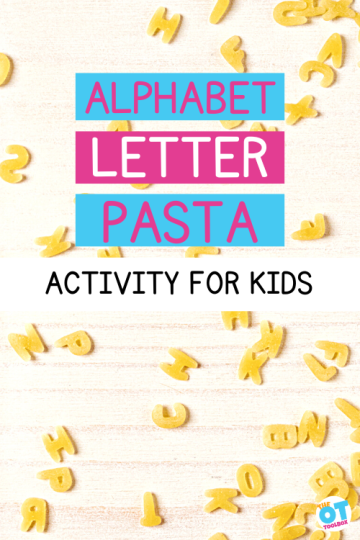
- Crafts , Eye Hand Coordination , Fine Motor Skills , Occupational Therapy , Occupational Therapy Activities , Sensory

- Free Resources , Occupational Therapy Activities
Free Therapy Planner for Back-to-School

- Development , Mental Health , Occupational Therapy , Self Regulation , Sensory
What is Polyvagal Theory?

- Occupational Therapy
Crayon Play Dough Harold and the Purple Crayon Activity
Quick links, sign up for the ot toolbox newsletter.
Get the latest tools and resources sent right to your inbox!
Get Connected

- Want to read the website AD-FREE?
- Want to access all of our downloads in one place?
- Want done for you therapy tools and materials
Join The OT Toolbox Member’s Club!
Join over 120,000 educators for tips & tricks in the Facebook group .
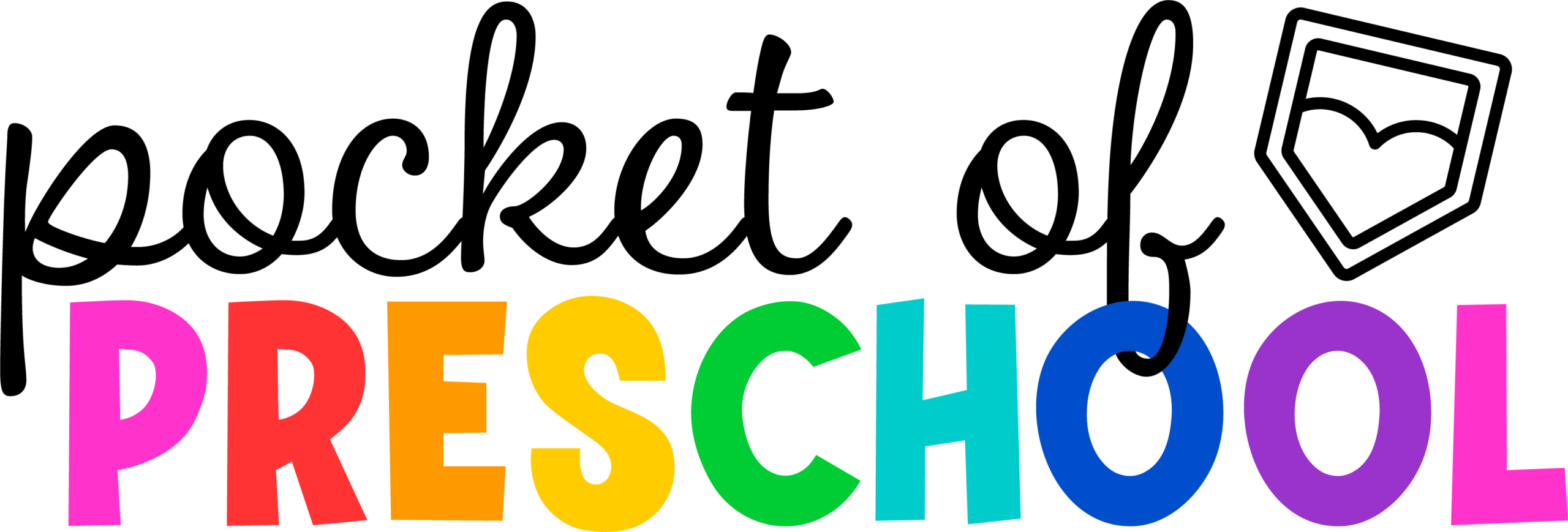
- Back to School
Teaching Tips
Social emotional, problem solving with little learners (preschool, pre-k, and kindergarten), share this post:.
- Share on Twitter Share on Twitter
- Share on Facebook Share on Facebook
- Share on Pinterest Share on Pinterest
- Share via Email Share via Email
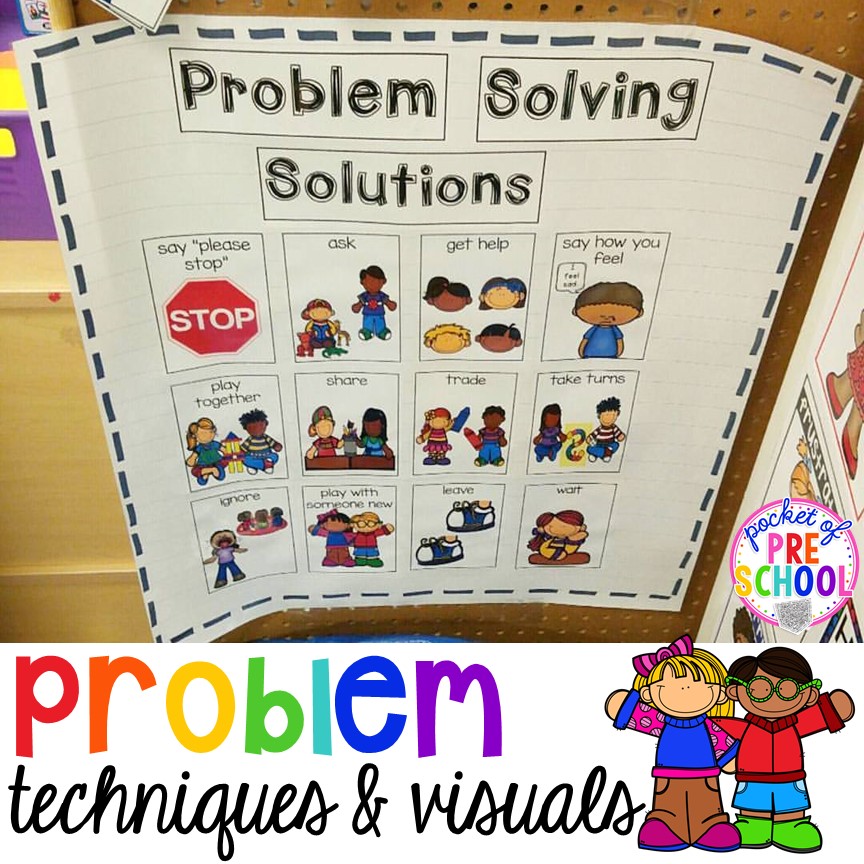
Problem solving is challenging for young students (and many adults too)! To support my little friends, I teach them problem solving strategies that they can use when they encounter a problem. We want our students to become independent thinkers who can solve problems, control their emotions, express empathy, and help others.
I introduce the problem solving techniques a few at a time during a class meeting. Each week, I introduce three new problem solving techniques. We then end up with nine to twelve techniques total based on what my students need that year. I explain the technique to the students in concrete terms so they will understand what the technique is and what it can look/sound like.
We usually start with these four skills: “please stop”, ask, get help, and say how you feel. Many problems can be solved with those solutions, which is why I always start with those. Then, the following week, I introduce take turns, play together, trade, and share. Then, the last four solutions the next week.
Problem Solving Techniques
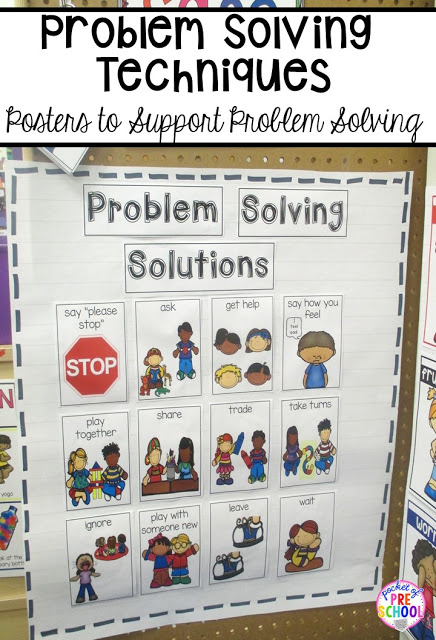
Singing with puppets is a fun and active way to practice the problem-solving techniques . Preschoolers LOVE puppets! This technique also allows students to role play. Some students will be more verbal if they can pretend to be someone else. At the end of each verse, students act out the problem-solving technique with a buddy using the puppets!As a transition activity to lunch, students took turns sharing a way they have solved a problem. You can also play, “What would you do if….”. State a real problem that could happen and have students pick a problem-solving solution to solve the problem. Some examples would be, “What would you do if your friend took your book?”, “What would you do if you got sticky glue on your hands?”, or “What would you do if you needed the red marker and your friend was coloring with it?” Once they have learned the strategies, stand back and let students try solving their own problems independently. Just a warning: this can take some time with lots of practice and support. As long as the student isn’t frustrated, let them try before you jump in to help. You will be amazed at the problems your child can solve given the opportunity to.
At first, you will be giving students lots of support and giving them the words to use to solve a problem.
- Always approach students at their level, in a calm supporting way.
- Ask, “what’s the problem?” If they don’t respond, comment on what you see such as “I see you have glue all over your hands and it looks sticky.”
- Restate the problem. “So the problem is ….”
- Brainstorm solutions and choose one together. This is the perfect time to use problem solving card visuals! “How can we solve this problem?” Flip through the solution cards and ask “Could we ….?”
- Praise and observe! Cheer on the students for solving the problem and stay close just in case they need more support.
Throughout the day, try to make EVERYTHING a problem to solve. Then model, talk through your thinking out loud, and use visuals to support students as they try to solve a problem. For example, I may put out a big ball of playdough in the center of the table as a small group activity. Students have to problem solve so each student has play dough to play with. It only takes few extra minutes to sneak in problem-solving situations throughout the day. Each time students help solve a problem or observe a friend solve a problem, they learn to self-regulate, express emotions appropriately, develop empathy, and develop problem-solving skills.
State problems for students who look stuck. If a student is just standing there, they need support, but don’t solve the problem for them! It’s so easy to do. Simply state their problem or what you see and ask a probing question. For example, if a student is standing with an empty bowl in their hand, you could say “Your snack spilled on the floor. How can you solve the problem?”
Problem-Solving Necklace or Mini Book!
I hole punched the small cards, put them on a book ring and keep them on a lanyard I wear every day. This way I can support students’ solving problems without having to go to the safe place where they are posted. I can just show the picture cards as a visual on my necklace. The mini book in the safe place works the same way.
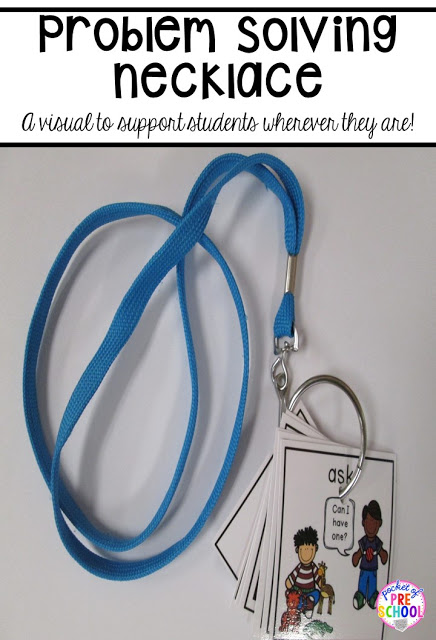
Safe Place!
I keep my techniques posted in my circle area at the beginning of the year AND in my safe place. My safe place is a small spot in my classroom where students can go when they are upset, need to calm down, want to be alone, or have a problem.
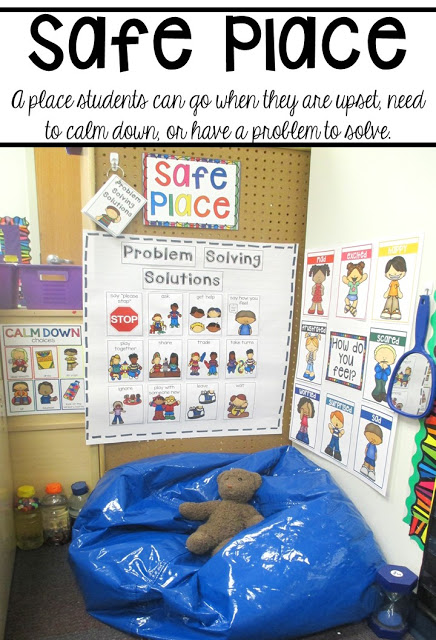
Once I see students using the problem-solving techniques independently, I remove them from my circle area. They are posted in my safe place ALL YEAR LONG for students to use when they are struggling to solve a problem. In my safe place, you will find a mirror, feeling chart, bean bag, sensory bottles, calm down choices, a stuffed animal, problem solving mini book and problem-solving techniques chart. You can read all about how to set up a safe place in your classroom HERE . Children’s Books!
These are some of my FAVORITE children’s books to teach all about problem-solving. As we read the book, we talk about how the character is or isn’t solving the problem, how it makes the character and others feel, any natural consequences that could occur, and which one of our problem-solving strategies the character could use to solve the problem.
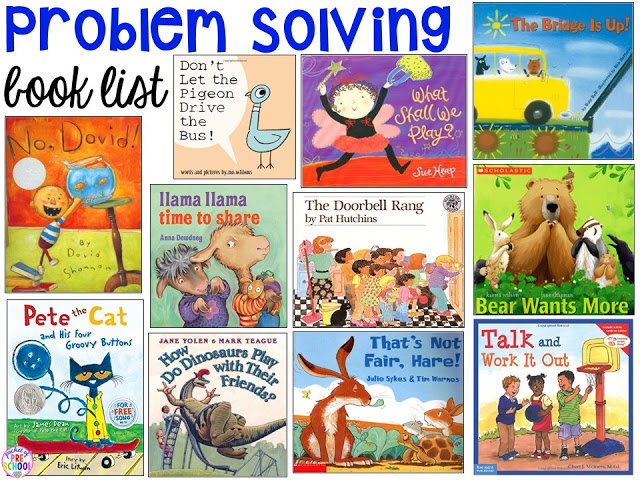
Do you want to use them in your classroom? You can! I did the work for you. Grab them from my TPT store HERE .
LOVE it? Pin this image!
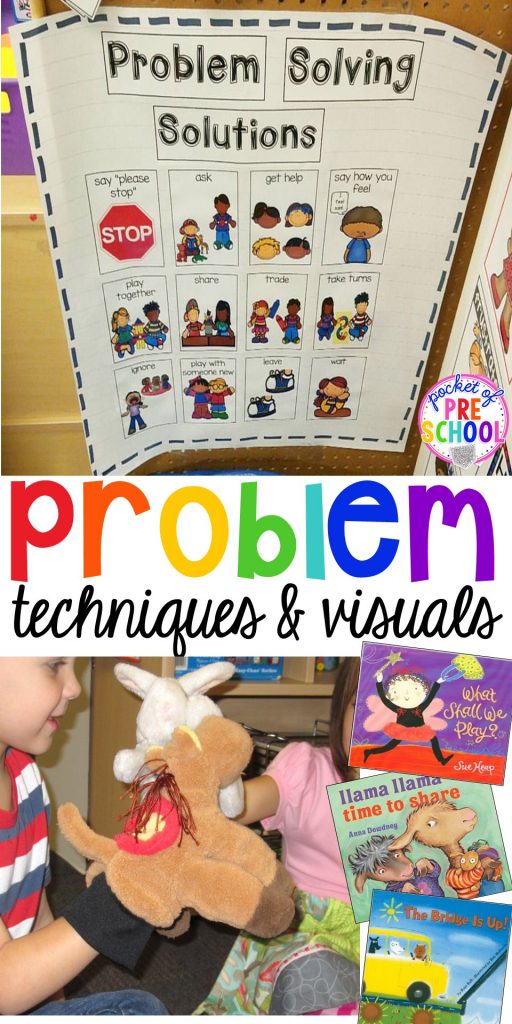
hey, i’m jackie!
I’m Jackie, your go-to girl for early childhood inspiration and research-based curriculum.
Similar Posts
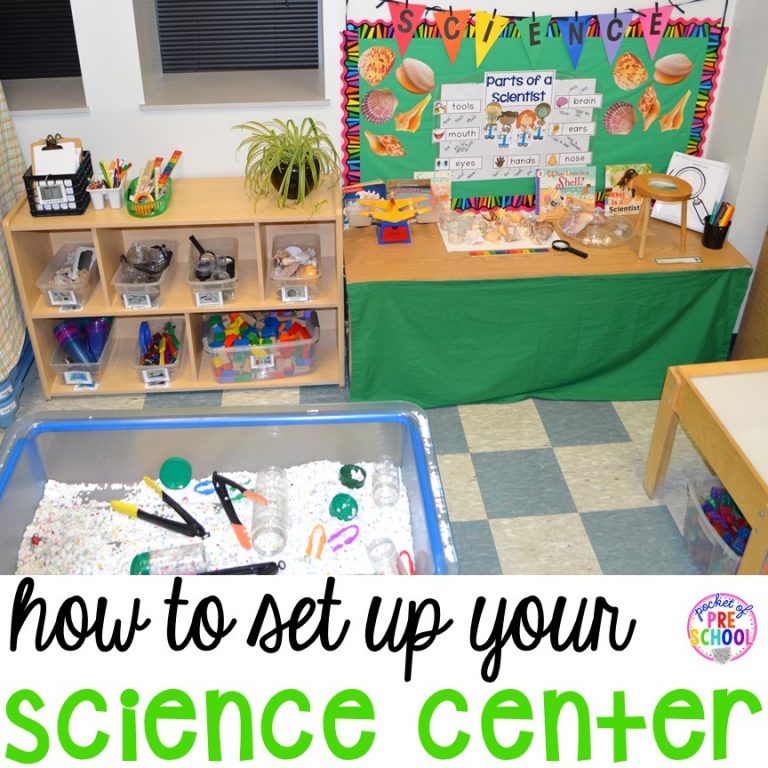
How to set up the Science Center in your Early Childhood Classroom
The science center in my classroom is always a busy place. Students can observe, experiment, create, construct, classify, compare, and question. Students are natural-born scientists. They are curious and eager…
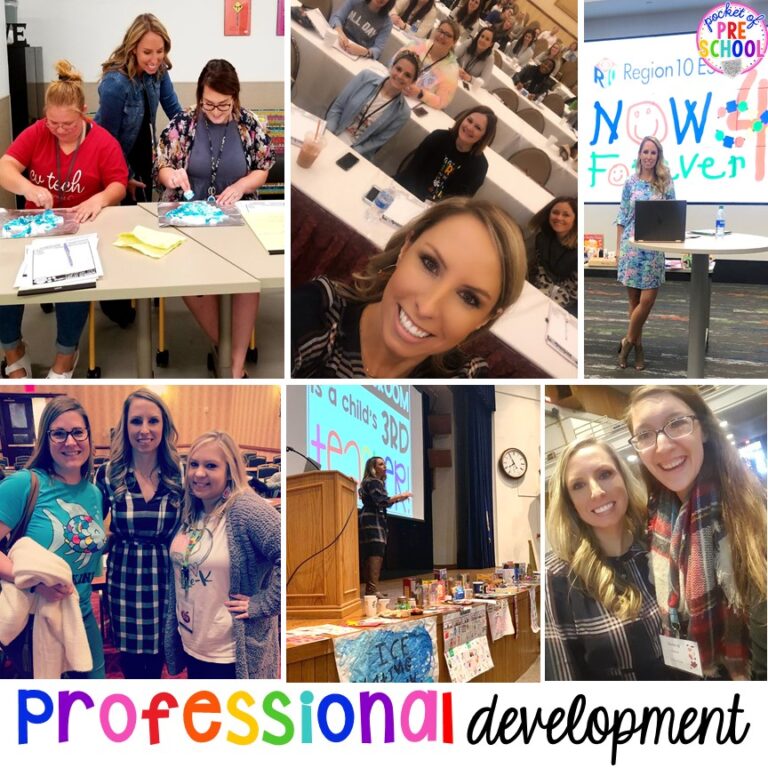
Professional Development for Teachers- PD Events
Professional development teacher training for preschool, pre-k, and kindergarten teachers that inspires teachers with strategies, ideas, and activities they can take back to their classroom and implement the next day….

Apple Activities and Centers for Little Learners
It’s apple picking time, so bring out all the apple activities for a fun-filled apple theme in your preschool, pre-k, or kindergarten classroom! I’m here to share all of our favorite…
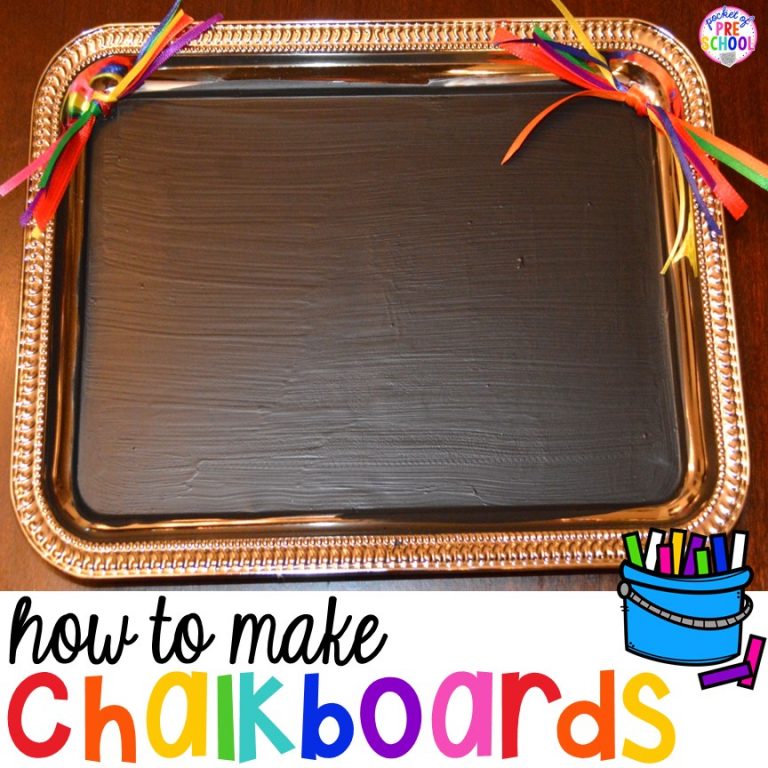
DIY Student Chalkboards using Trays from the Dollar Store
Student chalkboards…yes, please! These adorable additions to your classroom are super easy to make (and cheap, too). I made these individual chalkboards, and I love the way they turned out!…
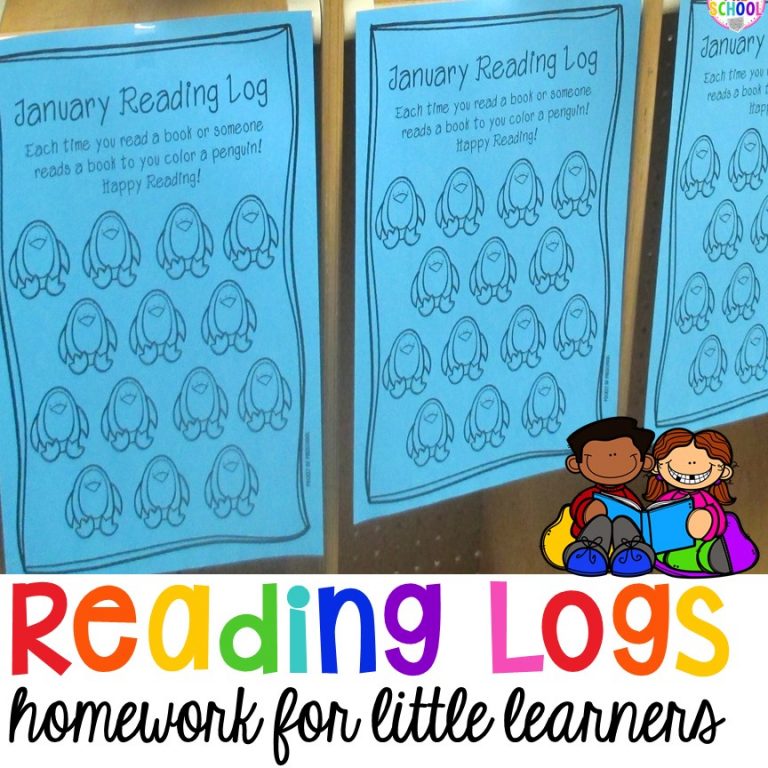
Preschool Reading Logs & Parent Letter (homework for preschoolers)
My preschoolers ASK for homework. They want to be just like their big brother or sister and do homework. They have also figured out that when their brothers or sisters…
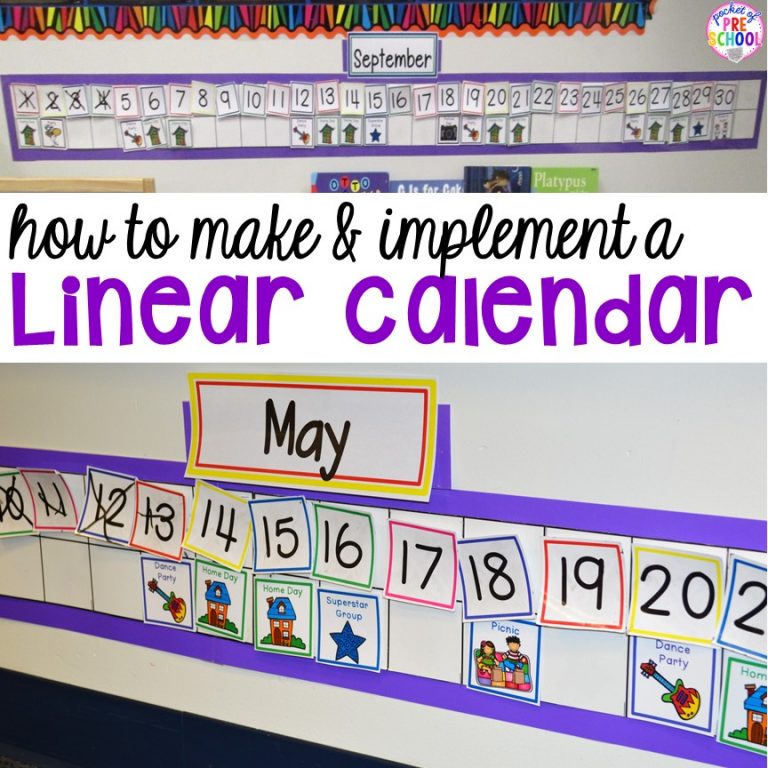
How to Make and Implement a Linear Calendar
Each teacher finds their own way to teach calendar skills! There are so many variations on a preschool calendar, but one of my favorites is a linear calendar. A linear…
Follow On Instagram
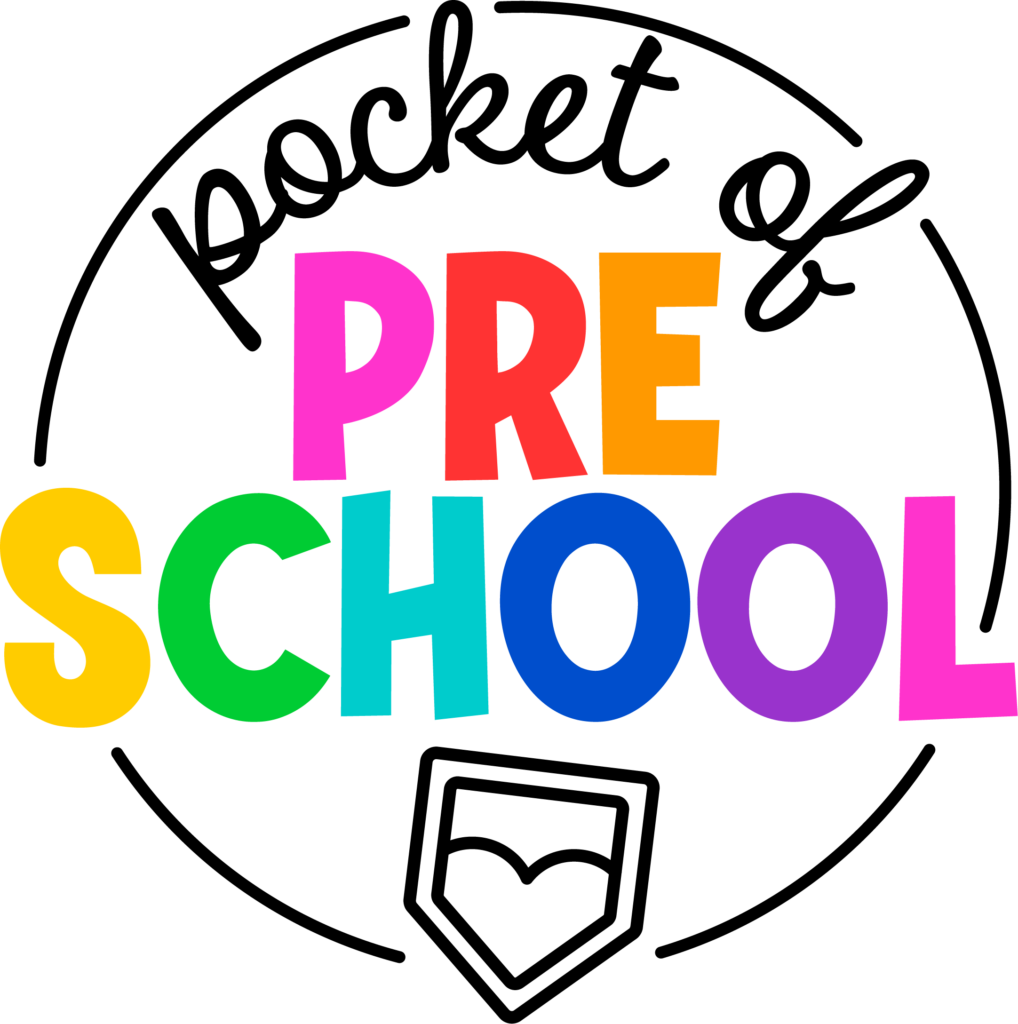
©2023 Pocket of Preschool. All Rights Reserved. Designed by Ashley Hughes
Review Cart
No products in the cart.
Dramatic Play

10 Ways to Strengthen Your Preschooler’s Problem-Solving Skills
As an adult, you make many decisions throughout your day without even thinking twice about some– from setting up the coffee machine at home to avoiding the long line at the drive-thru that can make you late to work to having a difficult but necessary conversation with your partner about finances. These are just a few examples of problem-solving skills and how you adapt to the situations around you and use your skills to exist on personal, professional, and social levels.
While some problem-solving skills are innate, your ability to access a situation and take a course of action is based on the fact that when you were a child, the adults around you taught you problem-solving skills. Our Raleigh early-childhood development center is sharing our best advice for anyone looking to strengthen their pre-schoolers problem-solving skills.
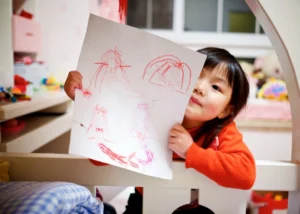
What is Problem Solving in Early Childhood?
Problem-solving refers to the ability to find a solution to a problem. For preschool-aged children, this can be difficult to learn if not modeled for them through the appropriate ways to react to the issues they face.
For instance, if two children are playing with a toy and one pushes the other in an effort to take the toy, this is clearly an inappropriate way to react to the problem. Furthermore, screaming or yelling for the child to give them the toy is also not a proper way to solve the issue. To model mature and proper problem-solving skills, adults around the child should be practicing the concept of sharing, patience, and communication while avoiding physical and emotional reactions when they don’t get what they want.
When the child learns that they can ask the other child, “Can I play with the toy next?” or understand the concept that another child was playing with the toy first, they are exhibiting the ability to problem solve.
Why is it Important to Develop Problem Solving Skills in Early Childhood?
Children aged 3 to 5 are developmentally experiencing growth in the following areas:
- Cognitive
- Emotional
- Language
- Sensory
- Motor
Because this time for preschoolers is so substantial to their intellectual, emotional, and social development, the world around them can seem overwhelming, unfair, intimidating, and even confusing. By modeling and teaching problem-solving skills to preschoolers , they can learn how to react logically, think creatively, communicate their needs, and assess how best to react to a situation at hand.
How Can You Teach Problem Solving Skills to Your Children?
It is the responsibility of the adults who raise and teach children to provide kids with opportunities to strengthen their problem-solving skills in early childhood. If you are a parent, guardian, childcare provider, or early-childhood educator, it’s important to consider the best strategies for helping little ones adapt to the world around them and learn problem-solving skills. And remember, it can be frustrating when things do not work out as expected for anyone at any age, particularly for preschool-aged children who are just learning to adapt to their surroundings.
When teaching your preschool-aged child how to problem solve, consider these four steps that are used in early-childhood classrooms :
- Identify the problem
- Brainstorm solutions to the problem
- Choose and implement one of the solutions
- Evaluate how that solution resolved the problem
Following this four-step guideline can help the adults in a preschooler’s life address how a child acquires problem-solving techniques to help them navigate through the difficult and everyday situations that arise.
When teaching problem-solving, focus on developing these key skills that relate to problem-solving:
- Lateral thinking
- Decision-making
- Communication
- Persistence
- Negotiation
- Logical thinking
- Analytical thinking
10 Problem-Solving Activities for Preschoolers
You know that you want to guide your child through developing and strengthening strategies for problem-solving, but where do you begin? Our early-childhood development school is sharing some of our favorite ways to incorporate problem-solving activities into your life so that you can teach your child to grow on a personal and social level.
#1 - Use Everyday Moments
You do not need a textbook or outline of how to teach your preschooler problem-solving. Simply using everyday moments to demonstrate problem-solving techniques is more useful than any “how to” book or homework assignment can teach your child.
Going to the grocery store, driving in the car, making dinner at home, and cleaning the house are all everyday opportunities to present your child with decisions related to problem-solving. Having your child put ingredients away in the pantry while you cook, asking your child what aisle at the supermarket they think you can find a particular item, or seeing that there is a mess of toys and supplies and directing the child to initiate where they should be placed prior to starting a new activity are ways to integrate problem-solving into everyday moments.
#2 - Look to the Child for the Solution
As your child grows up, they will not always have you by their side to solve each and every problem that arises. From issues with friends, future relationships, and future careers, the child you raise will one day become an independent adult who needs to problem-solve on their own.
Asking children to weigh in for solutions to problems as they arise is one way to get them thinking critically early on in life. When a child is taught to not only assess an obstacle but to trust their own decision-making abilities to resolve a problem, they will be better equipped for success as they get older.
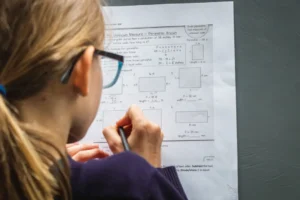
#3 - Solve Mathematical Problems
Mathematics is a great way to engage children at an early age in problem-solving and solution-making activities. Math is logical and non-emotional, having very clear set rules and boundaries with a single solution is one prime example of problem-solving. When children are given age-appropriate mathematical problems and math word problems, they are given opportunities to troubleshoot and follow an order of operation that leads to a solution.
#4 - Ask Open-Ended Questions
As adults, we often find that the most convenient way to get through the day when caring for a preschooler is to complete tasks for them so that we can get on with our busy day. However, it’s important to pause and present your child with the opportunity to find their own solutions to problems they are faced with by using open-ended questions.
For instance, your child cannot find their favorite pair of shoes. Rather than tear the house apart on your own looking for them, present the child with a question: “Where did you last wear those shoes?” or “When did you last see your shoes?” This requires your child to consider where they last may have placed them. Additionally, a question like, “If we can’t find those shoes right now, you’ll need to choose a different pair to wear so we aren’t late.” guides them toward finding an alternative solution to the problem.
Giving children the opportunity to find their own solutions to issues that arise by asking open-ended questions equips them with problem-solving skills they will need throughout life when things do not always go as planned.

#5 - Puzzles and Board Games
Puzzles and board games, much like math equations, allow children to use their cognitive problem-solving abilities to complete tasks in a fun and unique way. Pre-schoolers are often drawn to images and visual learning components as well as interactive play. Putting puzzles together allows for pattern recognition, while board games allow for interactive problem-solving techniques to be utilized through a set of rules. Incorporating puzzles and games into the lives of children are excellent ways to get them to think critically and find solutions that offer immediate results.
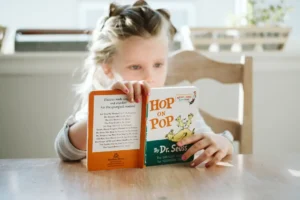
#6 - Read Books and Tell Stories
Books and storytelling are always exceptional ways to build vocabulary and introduce kids to characters and situations outside of their own. When children are given the opportunity to relate to characters and situations, and then address how those characters can react and engage in their conflicts and interpersonal relationships, it not only fosters imagination and creativity but also problem-solving skills.
#7 - Center Emotions
As adults we understand that while reacting emotionally to a situation is sometimes natural, it does not get us very far when it comes to solving a problem. Children should be taught how to center those emotions, without shame or guilt by providing an alternative to emotional responses. This is often in the form of learning communication and language.
If your son’s best friend hurt his feelings, he should not be made to feel that he shouldn’t feel how he is feeling. Having your feelings hurt, particularly by a friend, is, well, hurtful, and there should be no shame attached to that feeling. However, when it comes to addressing those hurt feelings to the friend, it would be inappropriate to shout, “I hate you!” or “I don’t want to be your friend anymore!” Rather, providing your preschool-aged child with words and phrases for when their feelings are hurt is essential to emotional and social development.
Teaching your son to tell his friend, “It hurts my feelings when you say that” or “I get sad when you are mean to me” are great ways to help children not only process their emotional feelings but express them in appropriate ways that lead to a resolution.
#8 - Model Problem-Solving Behaviors
Children look to the adults in their lives for how to handle the problems they face in the world. If your child sees you politely ask a waiter to return a plate of food that was incorrectly served, they will learn that proper communication, respect, and patience lead to resolution. In contrast, if a child sees their parents speak rudely and blame a waiter for an incorrect order, they will learn that emotional reactions are the way to address problems. As a parent and caretaker, it is your responsibility to use mistakes, obstacles, and hardships as learning opportunities passed on to your preschool-aged children, demonstrating first-hand that non-emotional responses, kindness, and communication are the keys to getting most issues resolved.
#9 - Break Down Problems into Chunks
As an adult, one of the ways to get through major projects at work is to set up a schedule that breaks down a large-scale project into smaller portions. Using this technique in childhood education and development is a successful way to teach children how doing one small task can lead to an overall greater, larger picture in the long run. Since a large task can seem overwhelming or even impossible, breaking it down into smaller, easily achievable pieces that will eventually lead to the full, complete picture is a wonderful way to help children of any age, but particularly preschool-aged, tackle large issues without feeling the weight of the big picture.
#10 - Utilize Natural Curiosities and Interests
Using natural, organic opportunities for learning and problem-solving is always one of the best ways to foster creativity as well as logical and analytical thinking. All children are naturally drawn to some interest– whether it’s unicorns, dinosaurs, airplanes, trucks, or the color blue… every child has something that they become naturally drawn to, often to the surprise of their parents.
For example, maybe every time your daughter sees the mailman drop off the mail, she is fascinated. Maybe her face lit up with interest and excitement to check what was left in the mailbox today. This is an opportunity to ask questions that lead to analytical thinking and problem-solving. Inquiring, “what does the mail carrier drop off at other houses?” or teaching the concept of writing a letter to grandma and how it goes through the mail can continue to foster interests while teaching logical steps, planning, and problem-solving techniques.
Enroll Your Child in an Interactive Preschool Care System
It’s no secret that when a child is at preschool age they are naturally curious and soak up all the information around them. By teaching your child problem-solving skills, they are better equipped to handle the everyday struggles the world has to face. However, the professionals at our preschool development center understand that busy working schedules, multiple children, and life’s responsibilities do not always make it easy for parents to dedicate time to fostering and strengthening problem-solving skills in their children.
If you have a preschool-aged child who will benefit from emotional, social, and personal development related to problem-solving, contact Primary Beginnings to enroll your child in our 5-star preschool program in Raleigh.
Contact us today at 919-790-6888 for our Spring Forest Rd. location or 919-785-0303 for our North Hills Dr. location, or fill out our contact form below.
Related Posts
Prevent the "Summer Slide" with these helpful tips!
November 27th marks the National Day of Listening. What can we learn about listening?
Drowning is the leading cause of injury-related death among preschoolers ages 1-4. Read these water…
A password reset email has been sent to the email address on file for your account, but may take several minutes to show up in your inbox. Please wait at least 10 minutes before attempting another reset.
Email address *
Lost your password?
Lost your password? Please enter your email address. You will receive a link to create a new password via email.
Email address
Registering for this site allows you to access your order status and history. Just fill in the fields below, and we’ll get a new account set up for you in no time. We will only ask you for information necessary to make the purchase process faster and easier.
- Tweens & Teens
- GrowthMinded Login
- No products in the cart.
items in the cart: 0
How to Teach Problem-Solving Skills to Children and Preteens
- By Ashley Cullins
Whether it’s a toy-related conflict, a tough math equation, or negative peer pressure, kids of ALL ages face problems and challenges on a daily basis.
As parents or teachers, we can’t always be there to solve every problem for our children. In fact, this isn’t our job. Our job is to TEACH our children how to solve problems by themselves . This way, they can become confident , independent, and successful individuals.
Instead of giving up or getting frustrated when they encounter a challenge, kids with problem-solving skills manage their emotions, think creatively, and persist until they find a solution. Naturally, these abilities go hand-in-hand with a growth mindset .
Before you continue, we thought you might like to download our FREE Your Words Matter Volume 2 Kit . With these 10 one-page parenting guides, you will know exactly how to speak to your child to help them stand up for themselves, be more confident, and develop a growth mindset.
So HOW do you teach problem-solving skills to kids?
Well, it depends on their age . As cognitive abilities and the size of the child’s challenges grow/evolve over time, so should your approach to teaching problem-solving skills.
Read on to learn key strategies for teaching problem-solving to kids, as well as some age-by-age ideas and activities.

3 General Strategies to Teach Problem-Solving at Any Age
1. model effective problem-solving .
When YOU encounter a challenge, do a “think-aloud” for the benefit of your child. MODEL how to apply the same problem-solving skills you’ve been working on together, giving the real-world examples that she can implement in her own life.
At the same time, show your child a willingness to make mistakes . Everyone encounters problems, and that’s okay. Sometimes the first solution you try won’t work, and that’s okay too!
When you model problem-solving, explain that there are some things that are out of our control. As we're solving a problem at hand we should focus on the things we CAN actually control.
You and your child can listen to Episode 35 of the Big Life Kids Podcast to learn about focusing on what you can control.
2. Ask for Advice
Ask your kids for advice when you have a problem. This teaches them that it’s common to make mistakes and face challenges. It also gives them the opportunity to practice problem-solving skills.
Plus, when you indicate that their ideas are valued , they’ll gain the confidence to attempt solving problems on their own.
3. Don’t Provide “The Answer”
As difficult as it may be, allow your child to struggle, sometimes fail , and ultimately LEARN from experiencing consequences.
Now, let’s take a look at some age-specific strategies and activities. The ages listed below are general guidelines, feel free to choose any strategies or activities that you feel will work for YOUR child.
Use Emotion Coaching
To step into a problem-solving mindset, young children need to first learn to manage their emotions . After all, it’s difficult for a small child to logically consider solutions to a problem if he’s mid-tantrum.
One way to accomplish this is by using the emotion coaching process outlined by John Gottman.
First, teach your kids that ALL emotions are acceptable. There are NO “bad” emotions. Even seemingly negative emotions like anger, sadness, and frustration can teach us valuable lessons. What matters is how we respond to these emotions.
Second, follow this process:
- Step One: Naming and validating emotions. When your child is upset, help her process the way she’s feeling. Say something like, “I understand that you’re upset because Jessica is playing with the toy you wanted.”
- Step Two: Processing emotions. Guide your child to her calming space. If she doesn't have one, it's a good idea to create one. Let her calm her body and process her emotions so she can problem-solve, learn, and grow.
- Step Three: Problem Solving. Brainstorm solutions with your child, doing more LISTENING than talking during the conversation. This allows your child to practice her problem-solving skills, and she’s more likely to actually implement the solutions she came up with herself.
Say, “Show Me the Hard Part”
When your child struggles or feels frustrated, try a technique suggested by mom and parenting blogger Lauren Tamm . Simply say, “Show me the hard part.”
This helps your child identify the ROOT of the problem, making it less intimidating and easier to solve.
Repeat back what your child says, “So you’re saying…”
Once you both understand the real problem, prompt your child to come up with solutions . “There must be some way you can fix that…” or “There must be something you can do…”
Now that your child has identified “the hard part,” she’ll likely be able to come up with a solution. If not, help her brainstorm some ideas. You may try asking the question, “If you DID know, what would you think?” and see what she comes up with.
Problem-Solve with Creative Play
Allow your child to choose activities and games based on her interests . Free play provides plenty of opportunities to navigate and creatively solve problems.
Children often learn best through play. Playing with items like blocks, simple puzzles, and dress-up clothes can teach your child the process of problem-solving.
Even while playing, your child thinks critically: Where does this puzzle piece fit? What does this do? I want to dress up as a queen. What should I wear? Where did I put my tiara? Is it under the couch?
Problem-Solve with Storybooks
Read age-appropriate stories featuring characters who experience problems, such as:
- Ladybug Girl and Bumblebee Boy by Jacky Davis: The story of two friends who want to play together but can’t find a game to agree on. After taking turns making suggestions, they arrive at a game they both want to play: Ladybug Girl and Bumblebee Boy.
- The Curious George Series by Margaret and H.E. Rey: A curious little monkey gets into and out of dilemmas, teaching kids to find solutions to problems of their own.
- Ira Sleeps Over by Bernard Waber: Ira’s thrilled to have a sleepover at his friend Reggie’s house. But there’s one problem: Should he or should he not bring his teddy bear? It may seem small, but this is the type of early social problem your child might relate to.
Connect these experiences to similar events in your child’s own life, and ASK your child HOW the characters in these stories could solve their problems. Encourage a variety of solutions, and discuss the possible outcomes of each.
This is a form of dialogue reading , or actively ENGAGING your child in the reading experience. Interacting with the text instead of passively listening can “turbocharge” the development of literacy skills such as comprehension in preschool-aged children.
By asking questions about the characters’ challenges, you can also give your child’s problem-solving abilities a boost.
You can even have your child role-play the problem and potential solutions to reinforce the lesson.
For book suggestions, refer to our Top 85 Growth Mindset Books for Children & Adults list.
Teach the Problem-Solving Steps
Come up with a simple problem-solving process for your child, one that you can consistently implement. For example, you might try the following five steps:
- Step 1: What am I feeling? Help your child understand what she’s feeling in the moment (frustration, anger, curiosity, disappointment, excitement, etc.) Noticing and naming emotions will diffuse their charge and give your child a chance to take a step back.
- Step 2: What’s the problem? Guide your child to identify the specific problem. In most cases, help her take responsibility for what happened rather than pointing fingers. For instance, instead of, “Joey got me in trouble at recess,” your child might say, “I got in trouble at recess for arguing with Joey.”
- Step 3: What are the solutions? Encourage your child to come up with as many solutions as possible. At this point, they don’t even need to be “good” solutions. They’re just brainstorming here, not yet evaluating the ideas they’ve generated.
- Step 4: What would happen if…? What would happen if your child attempted each of these solutions? Is the solution safe and fair? How will it make others feel? You can also try role-playing at this step. It’s important for your child to consider BOTH positive and negative consequences of her actions.
- Step 5: Which one will I try? Ask your child to pick one or more solutions to try. If the solution didn't work, discuss WHY and move on to another one. Encourage your child to keep trying until the problem is solved.
Consistently practice these steps so that they become second nature, and model solving problems of your own the same way. It's a good idea to reflect : What worked? What didn’t? What can you do differently next time?
Problem-Solve with Craft Materials
Crafting is another form of play that can teach kids to solve problems creatively.
Provide your child with markers, modeling clay, cardboard boxes, tape, paper, etc. They’ll come up with all sorts of interesting creations and inventive games with these simple materials.
These “open-ended toys” don’t have a “right way to play,” allowing your child to get creative and generate ideas independently .
Ask Open-Ended Questions
Asking open-ended questions improves a child’s ability to think critically and creatively, ultimately making them better problem-solvers. Examples of open-ended questions include:
- How could we work together to solve this?
- How did you work it out? or How do you know that?
- Tell me about what you built, made, or created.
- What do you think will happen next?
- What do you think would happen if…?
- What did you learn?
- What was easy? What was hard?
- What would you do differently next time?
Open-ended questions have no right answer and can’t be answered with a simple “Yes” or “No.”
You can ask open-ended questions even when your child isn’t currently solving a problem to help her practice her thinking skills, which will come in handy when she does have a problem to solve.
If you need some tips on how to encourage a growth mindset in your child, don't forget to download our FREE Your Words Matter Volume 2 Kit .

Break Down Problems into Chunks
This strategy is a more advanced version of “Show me the hard part.”
The bigger your child gets, the bigger her problems get too. When your child is facing a challenge that seems overwhelming or insurmountable, encourage her to break it into smaller, more manageable chunks.
For instance, let’s say your child has a poor grade in history class. Why is the grade so low? What are the causes of this problem?
As usual, LISTEN as your child brainstorms, asking open-ended questions to help if she gets stuck.
If the low grade is the result of missing assignments, perhaps your child can make a list of these assignments and tackle them one at a time. Or if tests are the issue, what’s causing your child to struggle on exams?
Perhaps she’s distracted by friends in the class, has trouble asking for help, and doesn’t spend enough time studying at home. Once you’ve identified these “chunks,” help your child tackle them one at a time until the problem is solved.
Show “ The Broken Escalator Video ”
Discuss the importance of embracing challenges and solving problems independently with the “broken escalator video.”
In the video, an escalator unexpectedly breaks. The people on the escalator are “stuck” and yelling for help. At this age, it’s likely that your child will find the video funny and immediately offer a solution: “Just walk! Get off the escalator!”
Tell your child that this is a simple example of how people sometimes act in difficult situations. Ask, “Why do you think they didn’t get off the escalator?” (they didn’t know how, they were waiting for help, etc.)
Sometimes, your child might feel “stuck” when facing problems. They may stop and ask for help before even attempting to find a solution. Encourage your child to embrace challenges and work through problems instead.
Problem-Solve with Prompts
Provide your child or a group of children with materials such as straws, cotton balls, yarn, clothespins, tape, paper clips, sticky notes, Popsicle sticks, etc.
With just these materials, challenge your kids to solve unusual problems like:
- Make a leprechaun trap
- Create a jump ramp for cars
- Design your own game with rules
- Make a device for two people to communicate with one another
This is a fun way to practice critical thinking and creative problem-solving. Most likely, it will take multiple attempts to find a solution that works, which can apply to just about any aspect of life.
Make Them Work for It
When your child asks for a new toy, technology, or clothes, have her make a plan to obtain the desired item herself. Not only will your child have to brainstorm and evaluate solutions, but she’ll also gain confidence .
Ask your child HOW she can earn the money for the item that she wants, and encourage her as she works toward her goal .
Put It on Paper
Have your child write out their problems on paper and brainstorm some potential solutions.
But now, she takes this process a step further: After attempting each solution, which succeeded? Which were unsuccessful? Why ?
This helps your child reflect on various outcomes, learning what works and what doesn’t. The lessons she learns here will be useful when she encounters similar problems in the future.
Play Chess Together
Learning to play chess is a great way for kids to learn problem-solving AND build their brains at the same time. It requires players to use critical thinking, creativity, analysis of the board, recognize patterns, and more. There are online versions of the game, books on how to play, videos, and other resources. Don’t know how to play? Learn with your teen to connect and problem solve together!
Have Them Learn To Code
Our teens and tweens are already tech-savvy and can use their skills to solve problems by learning to code. Coding promotes creativity, logic, planning, and persistence . There are many great tools and online or in-person programs that can boost your child’s coding skills.
Encourage to Start a Meaningful Project
This project has to be meaningful to your teen, for example starting a YouTube channel. Your teen will practice problem-solving skills as they’re figuring out how to grow their audience, how to have their videos discovered, and much more.
In the Big Life Journal - Teen Edition , there’s a section that guides them through planning their YouTube channel and beginning the problem-solving process.
Apply the SODAS Method
Looking for a game plan that your teen can employ when faced with a problem? The SODAS method can be used for big or small problems. Just remember this simple acronym and follow these ideas:
- D isadvantages
- A dvantages
Encourage to Join Problem-Solving Groups
Does your teen enjoy solving problems in a team? Have them join a group or club that helps them hone their skills in a variety of settings--from science and robotics to debating and international affairs. Some examples of groups include:
- Odyssey of the Mind
- Debate team
- Science Olympiad
Looking for additional resources? The Bestseller’s Bundle includes our three most popular printable kits packed with science-based activities, guides, and crafts for children. Our Growth Mindset Kit, Resilience Kit, and Challenges Kit work together as a comprehensive system designed specifically for children ages 5-11.
- Share this post:
25 thoughts on “ How to Teach Problem-Solving Skills to Children and Preteens ”
I love, love, love the point about emotional coaching. It’s so important to identify how children are feeling about a problem and then approach the solutions accordingly.
Thank you for putting this together. I wrote an article on problem-solving specifically from the point of view of developing a STEM aptitude in kids, if you like to check it out – https://kidpillar.com/how-to-teach-problem-solving-to-your-kids-5-8-years/
I feel that these techniques will work for my kid.. Worthy.. Thank you
I love you guys
Leave a Reply
Your email address will not be published. Required fields are marked *
- New Printable
- Guide Printable
FOLLOW US ON INSTAGRAM
44 Powerful Problem Solving Activities for Kids
This post and its photos may contain affiliate links, view our disclosure policy.

Inside: Tons of activities that will help boost kids’ problem-solving skills and make them super critical thinkers!
Table of Contents
Who doesn’t love a little challenge now and then? Especially if it’s for our kiddos!
You see, problem-solving isn’t just for the puzzles and math sheets. It’s the magic stuff that shapes our little ones into big thinkers and doers.
Yep, it’s pretty important!
With the right activities, we aren’t just sharpening kids’ brain muscles; we’re also enhancing their creativity, boosting their confidence and critical thinking skills, and (just maybe) buying ourselves five minutes to sip that coffee while it’s still hot.
Stick around, and let’s dive into 44 simple activities to boost your child’s problem-solving skills while having a blast! 🚀💡

Gain access to our library of free printables!
Because we all want our kids to be happy and healthy — not just for right now, but for the rest of their lives.
Why is it Important to Learn Problem-Solving Strategies?
Importance of problem-solving abilities:
Navigating the maze of life requires many skills; it requires the ability to face challenges, find solutions, and adapt.
This is where problem-solving enters the picture, and here’s why it’s so crucial for our kiddos:
Life is Full of Puzzles: From tying shoes to understanding a new math concept, life constantly presents us with puzzles. Equipping our children with problem-solving skills ensures they can tackle each one confidently.
Boosts Independence: As parents or educators, we won’t always be there to hand-hold. When kids can solve problems on their own, they gain a sense of independence, which is essential for their personal growth.
Develops Resilience: Not every attempt to solve a problem will be successful. But with each try, children learn resilience, understanding that it’s okay to fail and important to try again.
Prepares for Real-World Challenges: The real world isn’t a scripted playground. It’s unpredictable. By honing their problem-solving abilities, we’re preparing kids to face the unforeseen challenges of the world outside.
Enhances Cognitive Growth: Otherwise known as cognitive development. Problem-solving isn’t just about finding solutions. It’s about thinking critically, analyzing situations, and making decisions. This cognitive workout helps in the overall brain development of our children.

Fosters Creativity: There’s often more than one way to solve a problem. Encouraging kids to think outside the box helps them see things from different perspectives and nurtures their creative spirit, letting them see possibilities where others might see roadblocks.
Encourages Adaptability: In the face of challenges, it’s important not just to find solutions but to be adaptable. As the world changes, kids with strong problem-solving skills can change with it, learning and growing along the way.
Builds Confidence : Every problem solved is a victory, a testament to their capabilities. This builds a child’s self-esteem, making them believe in their ability to face and overcome obstacles.
So, while it may seem like just another skill on the list, problem-solving is a cornerstone for a well-rounded, resilient, and successful individual.
4 Simple Problem-Solving Steps We Should Know at a Young Age
Problem-solving steps can be thought of as the building blocks for tackling challenges.
They’re like a set of instructions that guide us on our journey to finding different solutions. These steps provide a roadmap for kids, helping them break down big problems into smaller, more manageable pieces.
By following these steps, children can learn how to think critically, make smart decisions, and even discover their own creative problem-solving superpowers.
- First, we need to understand the problem, just like examining the pieces before we start building.
- Next, we brainstorm – this is where we think of different solutions, like trying out various block combinations. Then comes the important part – evaluating the options. We must determine the best solution , just like choosing the right blocks for our structure.
- After that, it’s time to put the plan into action, just like assembling the blocks to create something amazing.
- Finally, we review and see if our solution works, making adjustments if needed.

These problem-solving steps are like our trusty toolkit, helping us build our way to success with creativity and ingenuity.
Whether it’s figuring out a math puzzle, resolving a conflict with a friend, or coming up with a new game, these problem-solving steps will be a guide to helping kids take their next steps.

Featured resource
HeartSmart Social Emotional Curriculum
If you want a program that guides you on how to teach problem-solving along with other essential skills like self-regulation, respect, teamwork, conflict resolution, and more, check this out!
Best Problem-Solving Activities for Kids
In this guide, we have a cool mix of fun problem-solving activities. There are activities for inside, outside, playing in groups, and even on the computer! So take deep breaths, and let’s get to it!
44 Problem-Solving Activities for Kids
Problem-solving games for kids:, card games:.
These are more than just fun; they are brain boosters. In Go Fish , the hunt for matching cards sharpens memory. While in the classic game Uno , it’s all about plotting the right move to take the lead.

The Memory Game:
This game isn’t just about remembering; it’s about strategizing. Matching pairs means we’re not just recalling but also paying close attention. This boosts concentration, focus, and, of course, memory – essential skills for everyday challenges!
Try this animal matching memory game.
Classic Board Games:
Whether it’s Chess , where every move counts, or Monopoly , where every decision can make or break your game, these games teach foresight and strategy.

Maze Games :
Navigating a maze isn’t just about reaching the end; it’s about strategizing the route. These games enhance our ability to plan and foresee, invaluable skills in real-life situations.
Brain-Teasing Sudoku :
Sudoku isn’t merely filling in numbers; it’s about using logic to deduce the correct sequence.
Tangram Puzzles:
These aren’t your average puzzles. With Tangram, you shape a story, crafting images using geometric pieces.
Chess & Strategy-Based Games:
Think of these as mental workouts. Here, every step is a calculated decision, honing your ability to think multiple steps ahead.
For more fun:
- 20 Best Games for 4-Year-Olds
- 15 Board Games Every 9-Year-Old Will Love
Indoor Problem-Solving Activities for Kids
Complete simple tasks:.
Simple tasks are little jobs that you can do to practice problem-solving.
- Matching Socks: Sort through a pile of laundry to pair up matching socks.
- Grocery List Planning: Help create a list for the week’s meals, considering everyone’s preferences.
- Toy Organization: Sort toys into designated bins by type, size, or color.
- Packing Their School Bag: Ensure they have all the necessary items for the next school day.
- Setting the Table: Consider where each plate, fork, and glass should go.
Ask Open-Ended Questions:
Open-ended questions are special questions that don’t have just one answer. They make you think! For instance, instead of asking, “What color is the sky?” you might ask, “Why do you think the sky changes colors?”
Puzzle Games:
Try simple puzzles with fewer pieces for younger kids and more complex puzzles with more pieces for older kids! You figure out how to fit the pieces together, which helps your brain get stronger!
Puzzle games are also great for hand-eye coordination!
Pattern Recognition:
This is all about finding the special patterns in things. Imagine a puzzle with colors or shapes. You have to figure out the pattern to solve it.
Dress-Up and Role-Play:
When you dress up and pretend to be someone else, it’s like stepping into their shoes. You have to think about how they would act and problem-solve what they would say if you were them.
Shape Sorters:
Shape sorters are super fun for young kids. You have to match each shape to the right hole. It’s like a puzzle for shapes! This helps you learn about different shapes and how they fit together.
Building Challenges:
Use Wooden blocks or legos and give kids a theme or structure to replicate. Great for all age groups!

Cooking or Baking:
Cooking and baking are like yummy science experiments! You follow recipes, mix ingredients, and even get to taste your creations. You must figure out how to follow and “solve” the recipe so that your creation tastes delicious!
“What If?” Scenarios:
Present hypothetical situations (e.g., “What if you were invisible for a day?”) and discuss possible solutions or actions.
Homemade Science Experiments:
Homemade science experiments are like being a scientist in your own lab! You get to try out cool experiments and discover how things work.
Quick Experiment example:
Make Dancing Raisins:
- Clear soda (like Sprite or 7-Up)
- A clear glass
- Fill the glass with the soda.
- Drop a few raisins into the glass.
Result: The raisins will initially sink, then start “dancing” up and down due to the carbon dioxide bubbles attaching and detaching from them.
Coding Activities:
Coding is like giving a computer a set of clues to follow. Think of it as telling a story where the computer plays the main character, and your instructions guide its every move. It’s our way of communicating with machines to make them do amazing tasks!
Crossword Puzzles:
Crossword puzzles are fun little word challenges. You must fill in the blanks with the right words and use your smarts to solve tricky clues!
Complex Problems like Brain Teasers:
Brain teasers are like mental gymnastics, making you stretch and flex your thinking muscles. What’s fun about them? There’s often more than one way to reach an answer, so your imagination and logic both get a workout!
Goal Setting Activities:
Goal setting is like making a special plan for what you want to achieve.
Think of goal setting as charting out your very own treasure map, with no wrong answers!
By laying out what you aim to achieve, you’re setting the course toward your treasure: success!
Goals, be they immediate or down the road, act like our personal compasses. They keep you on track and motivated. And every time you hit a goal? That’s you cracking a code and unlocking a new achievement in your adventure!

Setting SMART Goals
This engaging kit focuses on teaching essential skills for setting and achieving smart goals, just like breaking down that LEGO set into manageable sections. We help kids understand the importance of clear objectives, staying motivated, overcoming obstacles, embracing adaptability and more.
Math Challenges:
Think of math challenges as your brain’s personal gym session. These aren’t just any puzzles; they’re crafted to push those thinking caps to the limit.
Debates (Best for older children):
Debates are friendly arguments where you defend your ideas with strong reasons. They’re excellent for problem-solving and for our social skills because they teach us how to think critically and consider different viewpoints. By defending our thoughts in a debate, we learn how to express ourselves clearly, listen to others, and find strong arguments to support our ideas!
Use Worksheets (Teach the Size of the Problem Concepts)
Teach concepts like the size of the problem to help kids determine if their reactions to problems are appropriate and what suitable solutions might be. Use fun visuals and problem-solving worksheets.
You can get this worksheet and more in our HeartSmart curriculum.

STEM Challenges:
STEM challenges are games that use science, technology, engineering, and math to solve problems. They’re awesome for problem-solving because they let us be like inventors and builders. Kids can engage in creative play and design and create things, like bridges or machines, using our smarts and creativity.
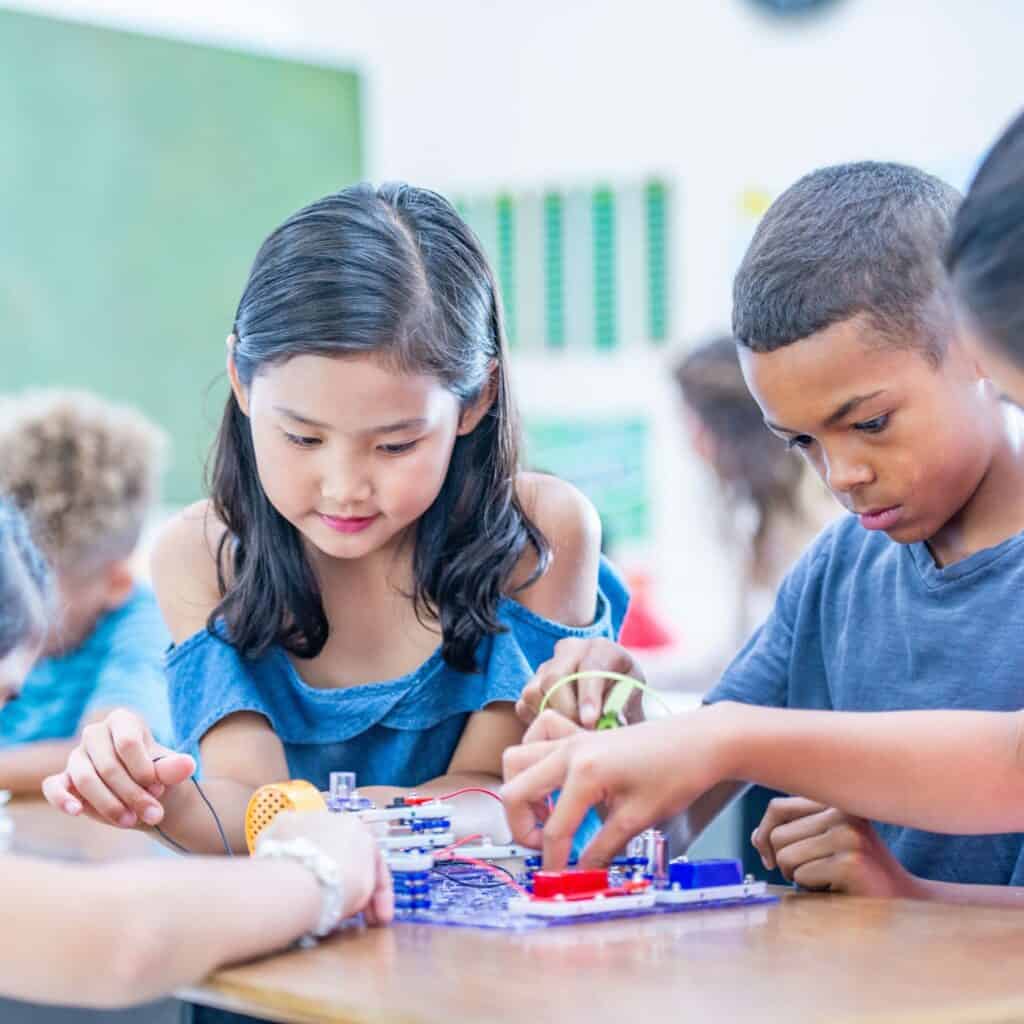
Outdoor Problem-Solving Activities for Kids
Nature scavenger hunt or treasure hunt: .
Create a list of natural items for kids to find. For added difficulty, give riddles as clues.
We have some awesome free Scavenger Hunt Bundles you can snag!

Free Scavenger Hunt Bundle
Download this set now, which includes four unique scavenger hunt games
Outdoor Obstacle Course:
Use items like ropes, cones, and hula hoops to design a course that requires navigation.
Garden Planning & Planting :
Design a garden patch, deciding what to plant based on sunlight and spacing needs.
Map & Compass Orienteering:
Teach kids to use a map and compass, then set waypoints for them to find.
Water Relay Challenges:
Carry water from one bucket to another using a sponge or cup, navigating hurdles.

Campsite Setup Simulation Challenge:
Set up a mock campsite considering factors like wind direction, incline, and resource proximity.
Nature Art & Patterns:
Using twigs, leaves, stones, and more, create mosaic patterns or depictions.
Group Problem-Solving Activities for Kids
Tower of spaghetti:.
Using only spaghetti and marshmallows, groups compete to build the tallest stable tower.
Egg Drop Challenge:
Groups are provided with a set of materials (e.g., straws, tape, cotton) to create a protective casing for an egg, which is then dropped from a height.
Silent Line-Up:
Without speaking, kids must line up according to their birthdays or another criterion.
Group Story Time:
One child starts a story with a sentence or two, and each subsequent child adds on, weaving in unexpected twists and turns.

The Human Knot:
Kids stand in a circle, reach across, and grasp two different hands. The challenge is to untangle the knot without releasing hands.
Escape Room:
Everyone is ‘locked’ in a themed room and has to solve a series of clues and puzzles to ‘escape’ within a set time. It’s fantastic for problem-solving because it challenges critical thinking, teamwork, and creativity. Everyone must work together, think outside the box, and use their wits to solve the puzzles and complete the mission before time runs out!
Role-Playing Social Situations:
Role-playing helps you practice how to react and solve problems in different situations. Present the group with a fictional but realistic scenario (e.g., stranded on an island) and brainstorm and act out solutions.
By pretending to be in different roles, you can figure out the best ways to communicate, understand others, and find solutions to problems in a safe and fun way!
Blindfolded Obstacle Course:
In pairs, one blindfolded child is guided through an obstacle course by their partner using only verbal instructions.
Online and App-Based Problem Solving Activities
When tech meets intellect, the digital realm becomes a treasure trove of problem-solving wonder!
Educational Apps:
Best Apps by Age:
- Younger Kids : Dive into the mathematical world with “Moose Math” or kick-start programming concepts playfully with “Bee-Bot.”
- Older Kids: Amp up programming skills with “Cargo-Bot” or embark on a critical thinking journey with “Rush: A Disney Pixar Adventure.”

Online Escape Rooms:
Just like physical escape rooms, but from the comfort of your home! They’re digital adventures, demanding clues to be solved to advance to the next level.
Check out these 10 Family Friendly Online Escape rooms here! I’m especially looking forward to Hogwarts Harry Potter Escape Room .
Virtual Logic Puzzles:
Websites that present logic problems and puzzles, leveling up in complexity as kids solve them.
Top Picks: “Conceptis Puzzles,” “Math Playground Logic Games.”
Benefits: Perfect for sharpening deductive reasoning and pattern recognition.
Interactive E-Books:
These are not your everyday e-books. They demand interaction, choices, and decision-making to progress the story.
Suggestions: “This Book is Perfect” or I love this big list of the best interactive books for kids.
Benefits: Enhance comprehension, decision-making, and experience of how choices shape outcomes.
Online Strategy Games:
These games demand planning, strategic thinking, and foresight.
Check out: “Fish Sticks Strategy Game”
Benefits: Apart from being immensely fun, they teach patience, strategy formulation, and long-term planning.
10 Examples of Problem-Solving Skills Young Children Should Have
Each of these skills not only helps kids tackle problems effectively but also equips them with abilities they’ll use throughout their lives.

- Critical Thinking: Encourage young thinkers to examine situations, ask questions, and view things from different angles before reaching a conclusion.
- Decision-Making Skills: Help children practice making choices by offering them options and discussing the potential outcomes of each decision.
- Creative Thinking: Cultivate creativity by providing opportunities for imaginative play, artistic expression, and activities that encourage thinking outside the box.
- Communication Skills: Show children how to express their thoughts, feelings , and ideas clearly and effectively – a vital skill for problem-solving in social situations.
- Teamwork and Collaboration: Foster the spirit of cooperation by encouraging children to work together on group activities or projects, which helps develop problem-solving skills as a team.
- Resourcefulness: Challenge children to find alternative solutions using the available resources rather than relying solely on adult guidance.
- Flexibility and Adaptability: Teach children how to adapt to changes and unexpected situations, which is crucial for effective problem-solving in real-world scenarios.
- Persistence: Staying determined, even when faced with challenges, and continuing to try until a solution is found.
- Self-reflection: Recognizing one’s own mistakes or misunderstandings in a situation and learning from them for future problem-solving.
- Active Listening: Paying close attention to details when others speak, helping them understand problems more fully and respond effectively.
Must read post:
How to Help Kids with Inflexible Thinking THRIVE
Tips for Parents and Educators: Nurturing Problem-Solving in Kids
When it comes to fostering problem-solving skills in children, both parents and educators play pivotal roles. It’s less about giving the right answers and more about asking the right questions.
Encourage Curiosity. Let kids explore questions like, “What do you think would happen if…?” or “How would you do it differently next time?”.
Embracing mistakes as learning opportunities can be a game-changer.
Set Up Scenarios. Create environments or situations where kids can think and act independently. Whether it’s setting up a puzzle station at home or a role-play corner in the classroom, these controlled scenarios can stimulate their problem-solving faculties. Remember, it’s okay for them to struggle a bit. It’s through overcoming challenges that real learning occurs.
Lastly, Be a Guide, Not a Director. Instead of directing them step-by-step, guide them by providing hints or asking probing questions. This helps them develop the ability to analyze situations and think critically. As they grow, they’ll be more equipped to approach challenges with confidence and creativity.
So, whether you’re a parent or an educator, remember that each day presents countless opportunities to bolster these invaluable skills. Embrace them!
Final Thoughts: Problem Solving Activities for Kids
Being a pro at problem-solving helps us face all types of curveballs life throws at us.
From untangling math puzzles to making big decisions, this skill is our trusty sidekick. And when life changes? No sweat! We can adapt and shine.
In short, mastering problem-solving helps us face challenges, make wise choices, and truly succeed in whatever we tackle!
I hope you enjoyed these problem-solving activities for kids. Tell me, what one is your favorite?

Because we all want our kids to be happy and healthy — not just for right now, but for the rest of their lives.
Tina Williamson is the published author of the growth mindset activity journal for kids - “ Amazing Me ” and the writer and founder here at Mindfulmazing. Passionate about raising mindful, resilient, and compassionate kids we are committed to sharing calming strategies, positive parenting tips, and growth mindset resources. Our resources are now used in over 10,000 homes, schools and counseling offices! Visit the shop here.
Resources You’ll Love
Our shop is filled with printable resources to help you calm the chaos and assist your amazing little humans to believe in the amazing little humans they are!

Calm Down Corner Bundle

Mindful Minute

Feelings Fun Kit

Social Story Bundle

Spring SEL Resources
Now available on tpt.
Splash into spring with these spring-themed social-emotional learning activities
Connect with other parents + teachers
Love this article? Make sure to connect with me on your favorite social platform below, and leave a comment so we can chat!
Leave a Reply Cancel reply
Your email address will not be published. Required fields are marked *
Similar Posts

Anxiety in Children: The Ultimate Guide to Helping Your Child Cope

13 Things Happy People Don’t Do

8 Tips for Coping With Holiday Stress

Free Christmas Color by Number Printables

20 Self Esteem Activities for Kids Guaranteed to Build Confidence

Printable Zones of Regulation Activities for Kids
We are passionate about raising mindful, resilient, happy kids.
Our resources are now being used in thousands of homes and classrooms around the world! Welcome to the community.
$$ Bundle & Save $$
Your One-Stop Shop for All Your Kids’ Social-Emotional Needs!

Mega Emotions Super Bundle

Calming Corner Bundle

Growth Mindset Bestsellers Bundle

HeartSmart SEL Program

Amazing Me Journal now available!

Free printables library!
Subscribe for the latest updates plus direct access to our library of free printables! Because we all want our kids to be happy and healthy — not just for right now, but for the rest of their lives.
Shop the store
- Social Emotional Learning
- Coping Skills + Feelings
- Growth Mindset
- Mindfulness
Read the blog
- Selfcare + Mindfulness
- Feelings + Coping Skills
- Kids Games + Activities
- Privacy Policy
Mindfulmazing is a participant in the Amazon Services LLC Associates program, where we earn from qualifying purchases.

Building Problem-Solving Skills for Preschoolers
Definition and significance of problem-solving skills in preschoolers, overview of typical problem-solving scenarios for preschoolers, math problem-solving activities for preschoolers, creative problem-solving games and activities, utilizing problem-solving cards for interactive learning, how to teach problem-solving to preschoolers effectively, incorporating problem-solving steps into everyday activities, role of adults in facilitating problem-solving skills, recommended problem-solving books for preschoolers, reputable online resources, using problem-solving worksheets as a learning tool, real-life problem-solving scenarios for preschoolers to navigate.
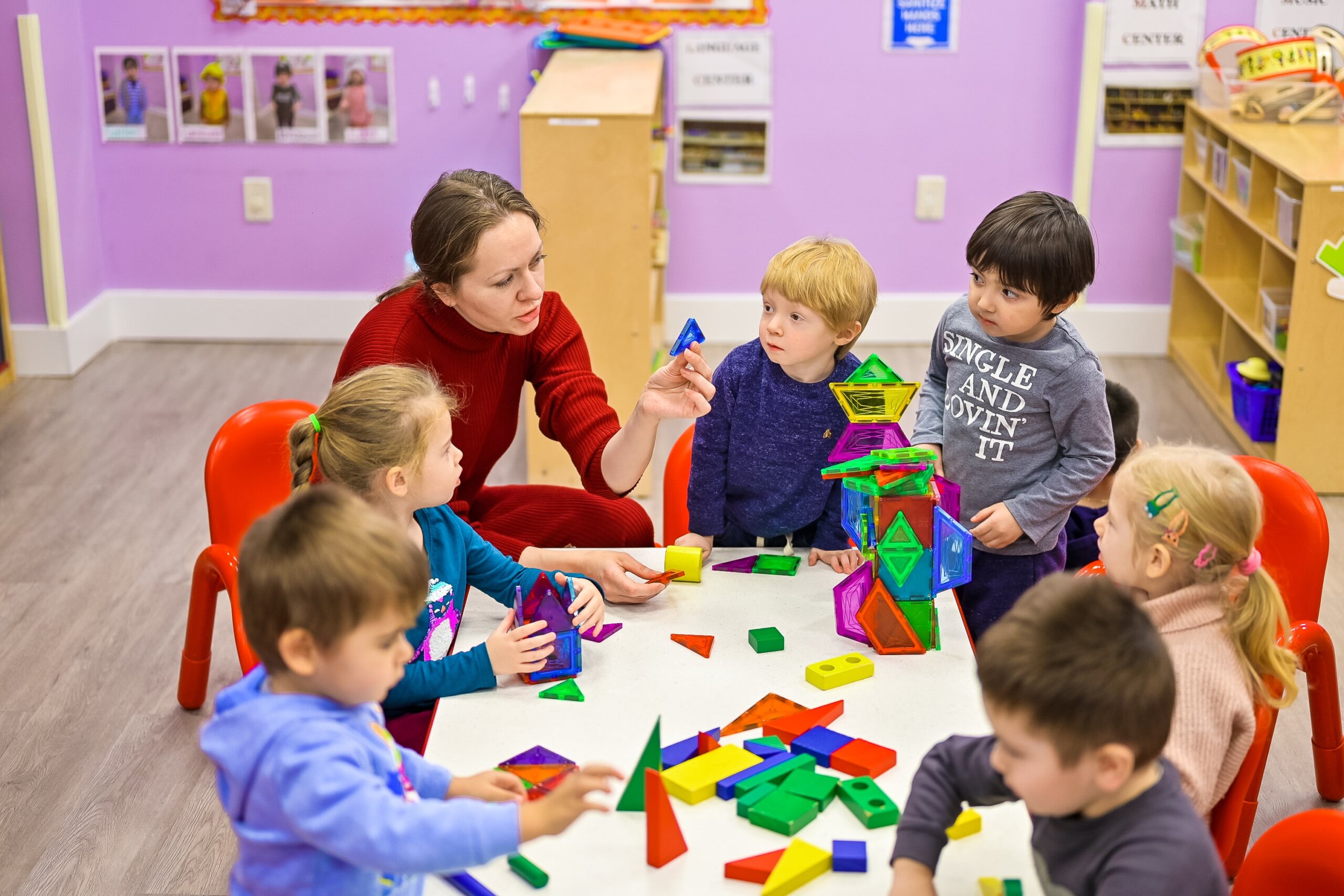
In the early years of childhood development, problem-solving skills are foundational to cognitive growth and practical learning. This article explores engaging activities, scenarios, and resources designed to foster these critical skills in young learners. Through a variety of methods, including interactive games, math activities, and educational books, preschoolers can develop the ability to navigate challenges, leading to enhanced learning experiences and a solid foundation for future academic success.
To cultivate these essential skills in your preschooler and lay a strong foundation for their future, explore the wealth of problem-solving activities, games, and resources available. Embrace the joy of learning together and watch as your child’s problem-solving abilities flourish. Begin this exciting journey now and open a world of possibilities for your little learner!
Understanding Problem-Solving for Preschoolers
Problem-solving skills in preschoolers refer to their ability to understand a problem, think through solutions, and execute a plan to overcome it. This capability is vital for their cognitive development and helps in navigating daily challenges. Preschoolers encounter problem-solving scenarios in various forms, such as puzzles, social interactions, and play activities, where they learn to make decisions, analyze outcomes, and adapt to new situations. Engaging them in targeted problem-solving activities and games can significantly enhance these skills, preparing them for future more complex tasks and decision-making processes.
Preschoolers encounter various problem-solving scenarios daily, which are crucial for their cognitive, social, and emotional development. These scenarios typically involve challenges or situations that require them to analyze, make decisions, and find solutions. Here’s an overview of common types of problem-solving situations preschoolers might face:
- Social Interactions: Learning to share toys, taking turns, and resolving conflicts with peers are common problems requiring negotiation and empathy.
- Self-care Tasks: Dressing themselves, tying shoelaces, or managing basic hygiene tasks demand practical problem-solving skills and fine motor coordination.
- Academic Challenges: Simple puzzles, building blocks, and age-appropriate educational games encourage critical thinking, pattern recognition, and logical reasoning.
- Emotional Regulation: Identifying and managing their feelings, like frustration or sadness, when things don’t go as planned, teaching them to find constructive solutions.
- Environmental Navigation: Overcoming physical obstacles, like reaching a high shelf or navigating a new play area, requires spatial awareness and physical judgment.
Problem-Solving Activities for Preschoolers
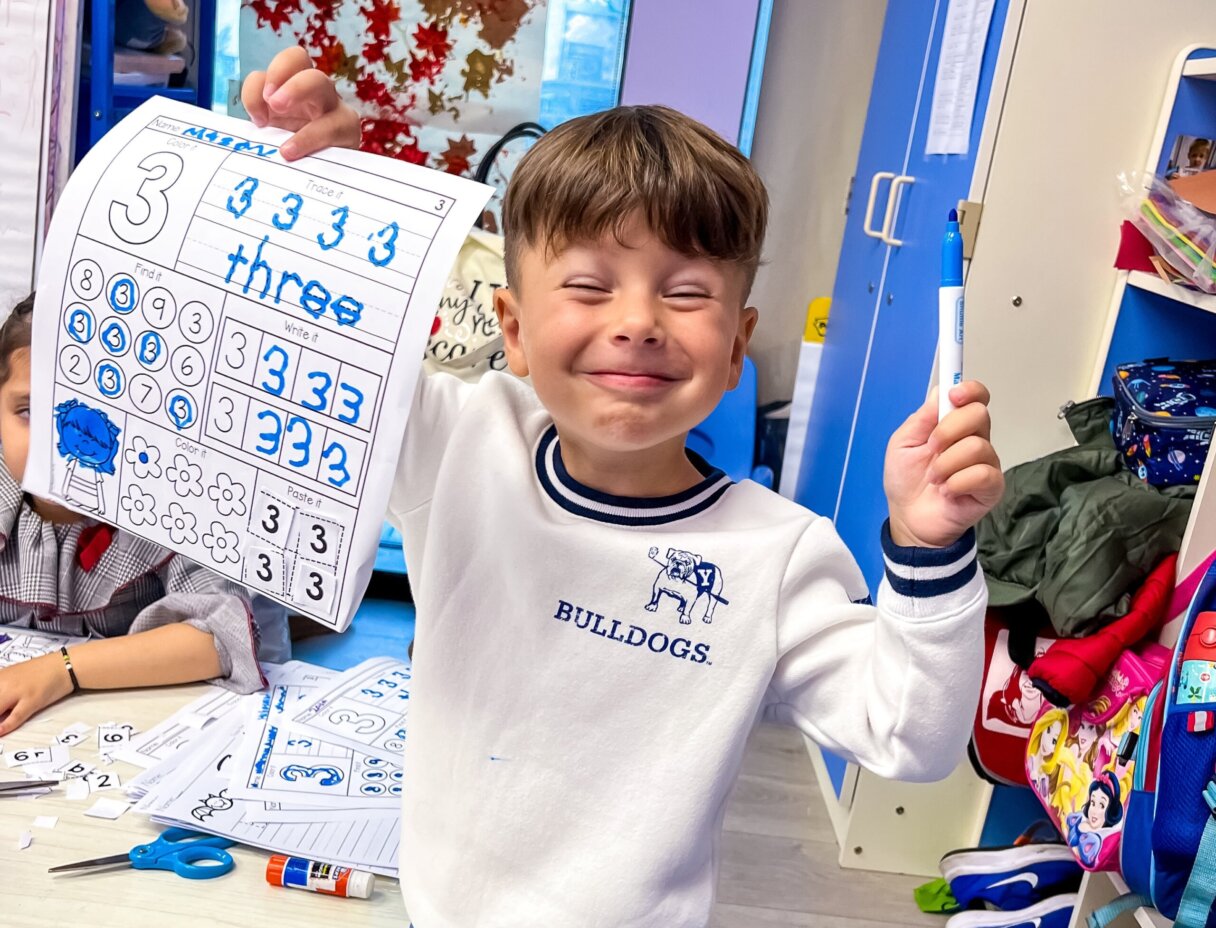
Math problem-solving activities for preschoolers should be engaging and hands-on, helping them understand basic mathematical concepts through play and exploration. Here’s a list of activities designed to enhance their math problem-solving skills:
- Sorting and Categorizing: Children sort objects by color, size, shape, or type, which develops their ability to recognize patterns and categories.
- Counting Games: Using toys, beads, or blocks to count aloud helps preschoolers understand numbers and quantity.
- Simple Puzzles: Completing puzzles with different shapes and sizes teaches spatial awareness and geometric concepts.
- Matching Activities: Pairing matching items or numbers with corresponding groups of objects enhances number recognition and counting skills.
- Shape Hunts: Finding objects of specific shapes in their environment helps children identify and classify geometric shapes.
- Measurement Activities: Using rulers, measuring tapes, or comparing objects directly teaches basic measurement and comparison skills.
- Number Stories: Creating simple stories that involve addition or subtraction helps in understanding basic arithmetic operations.
- Pattern Making: Using colored blocks or beads to create and extend patterns teaches sequencing and predictive logic.
Creative problem-solving activities encourage thinking outside the box and foster innovation. Here are some games and activities that can help develop these skills:
- Story Building: Participants add to a story one sentence at a time, promoting creative thinking and collaborative storytelling.
- Invention Scramble: Children use random objects to create a new invention, encouraging imaginative thinking and resourcefulness.
- Obstacle Course: Setting up an obstacle course with specific challenges requires planning and strategy to navigate.
- Riddle Solving: Engaging in riddles and brain teasers enhances critical thinking and comprehension skills.
- Building Challenges: Using blocks or LEGO, children are tasked with constructing a structure based on a theme or specific requirements.
- Role-Playing Games: Children take on different roles and scenarios, promoting empathy and creative problem-solving in social situations.
- Art Projects: Encouraging free-form art or specific thematic projects helps in exploring creativity and expressing ideas visually.
- Treasure Hunts: Organizing a treasure hunt with clues and challenges promotes logical reasoning and teamwork.
Problem-solving cards are a versatile tool that can be used to promote interactive learning. They typically feature scenarios, questions, or challenges that prompt learners to think critically and develop solutions. Here’s how they can be used effectively:
- Scenario-Based Learning: Cards can present real-life situations that require learners to apply knowledge and critical thinking to solve problems.
- Group Discussions: Using cards to initiate group discussions encourages collaboration and the sharing of diverse perspectives.
- Role-Playing Activities : Cards can set up role-playing exercises where learners must navigate and resolve conflicts or challenges.
- Game-Based Learning: Incorporating cards into games can make learning fun and competitive, motivating learners to engage more deeply with the content.
- Skill Development Workshops: Cards can be used in workshops to practice specific skills, such as negotiation, decision-making, or creative thinking.
List of Necessary Elements for Utilizing Problem-Solving Cards
To effectively use problem-solving cards in interactive learning, certain elements are necessary:
- Varied and Relevant Content: Cards should cover various topics and scenarios relevant to the learners’ experiences and learning objectives.
- Clear and Concise Instructions: Each card should have clear, concise instructions to ensure learners understand the problem or task.
- Adaptability: Cards should be versatile enough to be used in different teaching methods and learning environments, whether in-person or online.
- Interactive Design: Engaging visuals and interactive elements on the cards can enhance the learning experience.
- Feedback Mechanism: Incorporating a way to provide feedback on the solutions or discussions generated from the cards helps in assessing understanding and progress.
- Scalability: The difficulty level of the cards should be scalable to cater to different skill levels and learning stages.
- Cultural Sensitivity: Content on the cards should be culturally sensitive and inclusive, reflecting diverse perspectives and experiences.
- Supplementary Materials: Providing additional resources or information related to the scenarios on the cards can deepen understanding and extend learning.
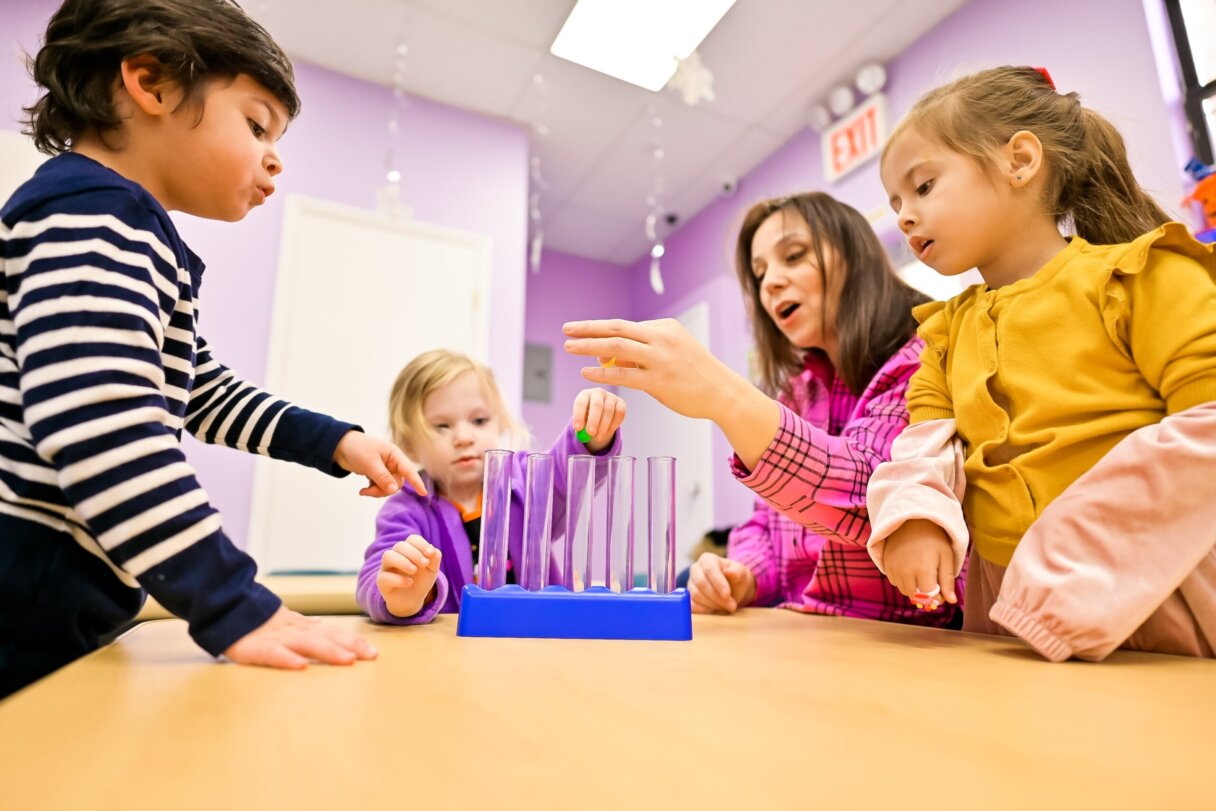
Teaching Strategies
Teaching problem-solving to preschoolers is about guiding them to think independently, make decisions, and learn from outcomes. Here’s how educators and parents can effectively teach problem-solving skills to preschoolers:
- Model Problem-Solving Behavior: Demonstrate how to approach problems calmly and thoughtfully, talking through the process out loud.
- Create a Safe Learning Environment: Ensure that the environment is supportive and non-judgmental, allowing children to explore solutions without fear of failure.
- Encourage Exploration and Play: Through play, children can experiment with different solutions and learn from trial and error.
- Ask Open-Ended Questions: Encourage thinking by asking questions that have no single right answer, prompting children to explore various possibilities.
- Facilitate, Don’t Solve: Guide children through the problem-solving process, helping them think of solutions, rather than providing answers.
- Use Storytelling: Stories can introduce problems in a relatable context, encouraging children to come up with creative solutions.
- Encourage Teamwork: Group activities can teach children how to collaborate, share ideas, and solve problems together.
- Teach Emotional Regulation: Help children recognize and manage their emotions, which is a critical part of solving problems effectively.
List of Necessary Elements for Teaching Problem-Solving to Preschoolers
To teach problem-solving effectively to preschoolers, certain elements are necessary:
- Patience and Time: Problem-solving skills develop over time, requiring patience and practice.
- Age-Appropriate Challenges: Problems should be relevant and challenging but achievable for their developmental stage.
- Variety of Materials: Provide diverse materials and resources to stimulate creative thinking and problem-solving.
- Positive Reinforcement: Celebrate successes and encourage perseverance, reinforcing the value of effort and learning from mistakes.
- Consistent Opportunities: Regularly integrate problem-solving activities into daily routines and learning experiences.
- Clear Guidance and Support: Offer clear instructions and support to help children understand the problem-solving process.
- Reflective Practice: Encourage children to reflect on the problem-solving process and outcomes to enhance learning.
- Cultural and Contextual Relevance: Ensure problems and scenarios are culturally relevant and relatable to the children’s experiences.
Incorporating problem-solving steps into everyday activities offers a practical and seamless way to enhance critical thinking skills. This approach involves identifying daily tasks or challenges and using them as opportunities to practice problem-solving.
For instance, during meal preparation, children can be involved in deciding what to cook, which ingredients are needed, and how to follow the recipe. This engages them in decision-making, sequencing, and logical thinking.
Similarly, when faced with conflicts or decisions, guiding children through identifying the issue, brainstorming possible solutions, evaluating these options, and then implementing and reflecting on the outcome can be very effective. This method makes problem-solving a natural part of daily life and helps children learn to apply these skills autonomously, preparing them for more complex challenges as they grow.
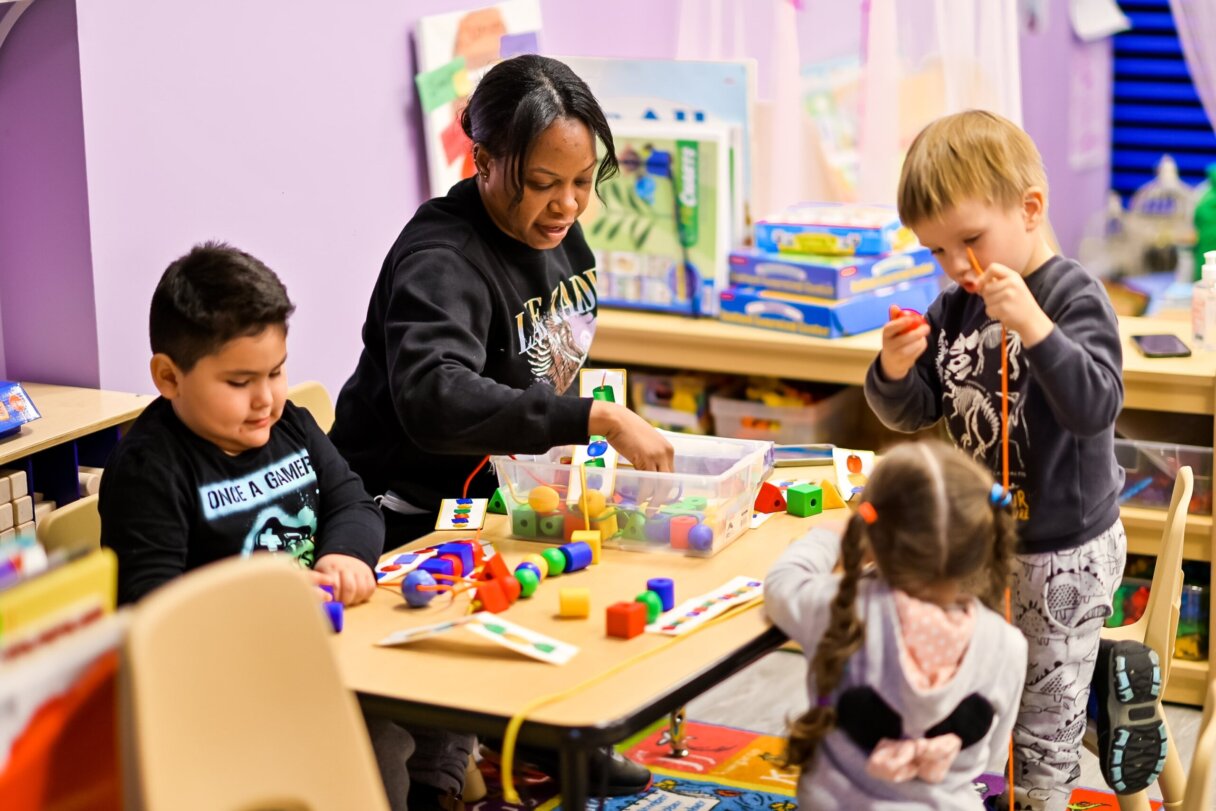
Adults play a crucial role in facilitating problem-solving skills among children by acting as guides, models, and supporters. They set the stage for learning by providing appropriate challenges and resources that encourage critical thinking and experimentation.
Through modeling problem-solving behavior—like verbalizing thought processes, showing how to evaluate options, and demonstrating persistence in the face of difficulties—adults provide a blueprint for children to follow. They also create a safe environment where children feel free to explore solutions without fear of judgment, offering guidance and encouragement rather than solutions, which promotes independence and confidence.
Additionally, by asking open-ended questions, adults can stimulate children’s thought processes and encourage them to see problems from different angles, further developing their critical thinking and decision-making skills. Adults are vital in nurturing an atmosphere where problem-solving can thrive, guiding children to become proficient problem-solvers.
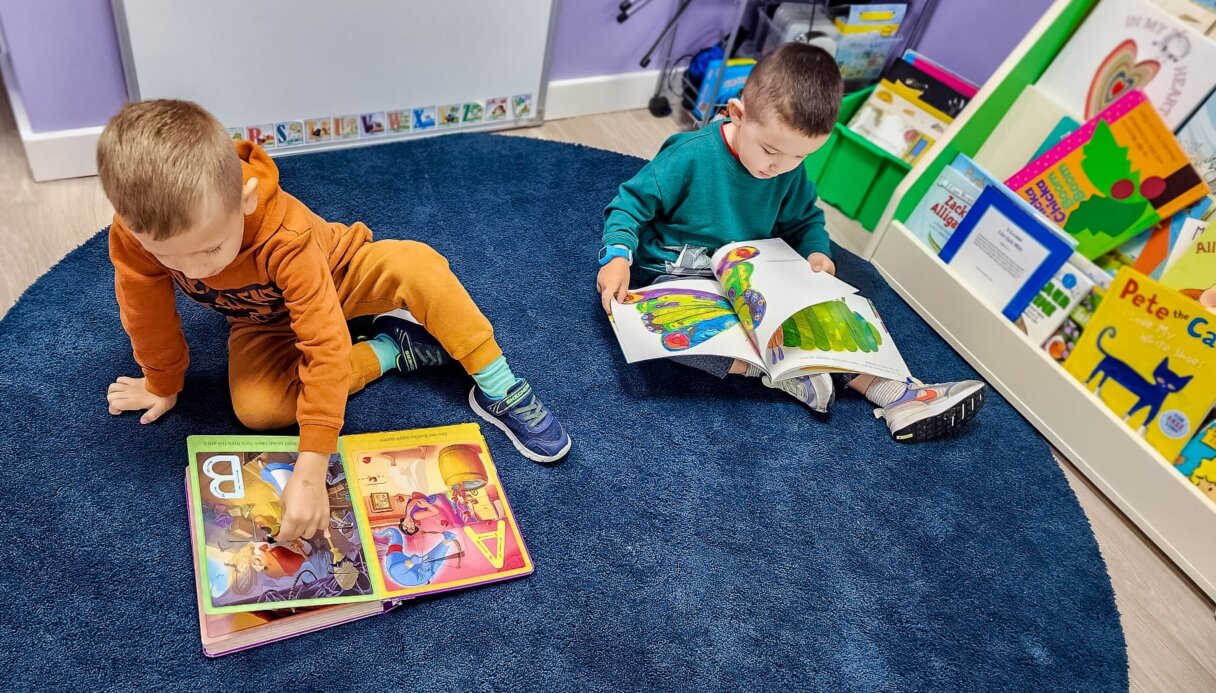
Educational Resources
Books can be a fantastic resource for developing problem-solving skills in preschoolers. Here are some highly recommended titles that engage young readers in the art of problem-solving:
- “Rosie Revere, Engineer” by Andrea Beaty: This book encourages innovation and perseverance, showing that failure is just a step towards success.
- “Curious George” series by H.A. Rey: The adventures of Curious George teach problem-solving and curiosity, as the little monkey often finds himself in tricky situations that require clever solutions.
- “The Most Magnificent Thing” by Ashley Spires: This story is about a girl who learns about frustration and perseverance while trying to create something magnificent.
- “Ish” by Peter H. Reynolds: Reynolds’ book teaches children that thinking “ish-ly” is more important than perfection, encouraging creative problem-solving.
- “Not a Box” by Antoinette Portis: This book stimulates imagination and creativity, showing how a simple box can be much more through innovative thinking.
- “The Dot” by Peter H. Reynolds: Another book by Reynolds, it inspires children to start small and see where their imagination and problem-solving can take them.
- “What Do You Do With a Problem?” by Kobi Yamada: This book personifies problems as opportunities to learn and grow, teaching children to face challenges head-on.
- “Beautiful Oops!” by Barney Saltzberg: Saltzberg’s book encourages finding beauty in mistakes and learning from them, promoting a positive attitude towards problem-solving.
Here’s a list of reputable online resources that provide valuable content on teaching problem-solving skills to preschoolers, including activities, strategies, and educational insights:
- NAEYC (National Association for the Education of Young Children) : Offers a wealth of resources on early childhood development, including articles and tips on promoting problem-solving skills.
- Teaching Strategies : Offers innovative, research-based teaching methods and resources for early childhood educators to enhance problem-solving skills in preschoolers.
- Education.com : Contains a wide range of problem-solving activities, worksheets, and games tailored for preschool-aged children.
These websites are well-regarded in the field of early childhood education and provide a range of tools and insights for effectively teaching problem-solving skills to preschoolers.
Problem-solving worksheets are an effective learning tool for developing critical thinking and analytical skills. They provide structured opportunities for students to practice and refine their approach to solving various types of problems.
List of Necessary Elements for Problem-Solving Worksheets
For problem-solving worksheets to be an effective learning tool, they should include:
- Clear Instructions: Directions should be concise and easy to understand, ensuring students know what is expected.
- Relevant Content: Problems should be age-appropriate and connected to real-world situations to enhance relevance and engagement.
- Structured Approach: Worksheets should guide students through the problem-solving process, possibly outlining steps like understanding the problem, devising a plan, carrying out the plan, and reviewing the solution.
- Variety in Problem Types: Including different types of problems, such as puzzles, logic problems, and word problems, can cater to various learning styles and interests.
- Space for Workings: Providing ample space for students to write down their thought processes and calculations is important for developing their ability to solve problems systematically.
- Engaging Design: Visually appealing worksheets with illustrations or graphics can motivate students and enhance their learning experience.
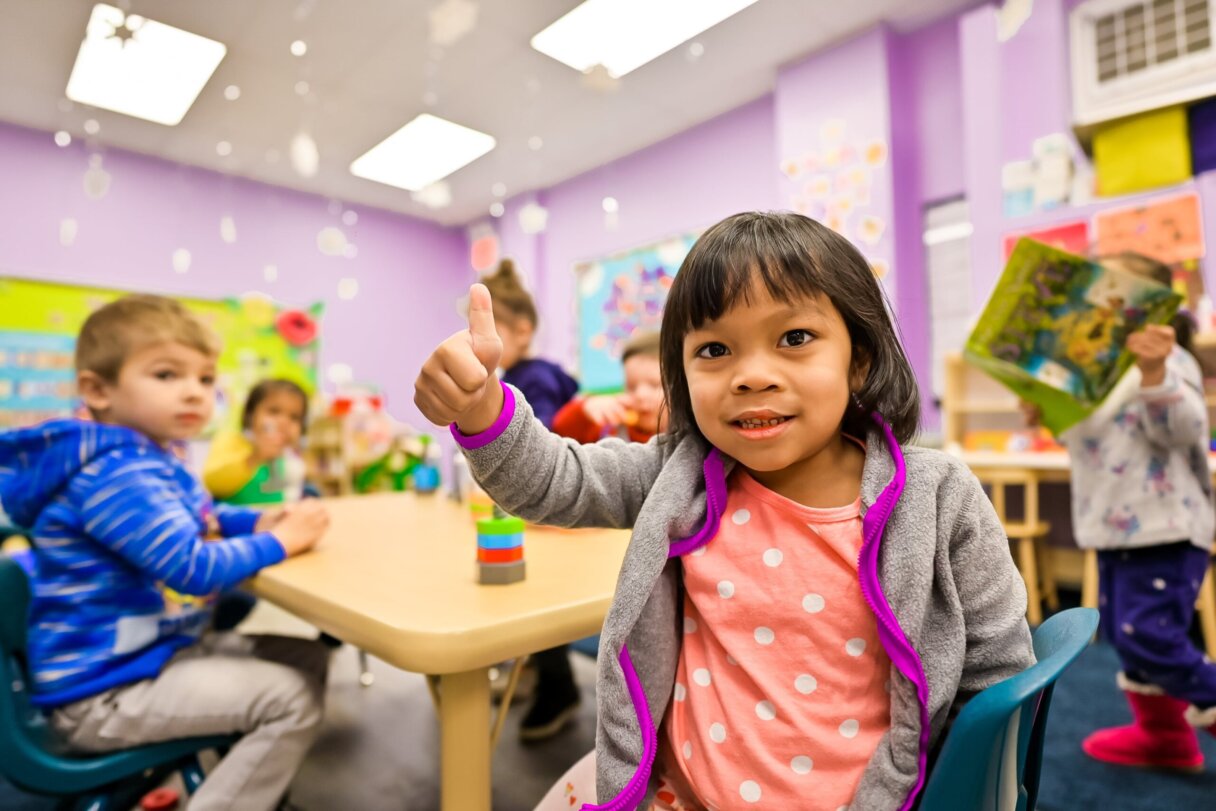
Practical Application
Preschoolers can learn valuable problem-solving skills through real-life scenarios they can relate to and navigate. Here’s a list of scenarios that can help preschoolers develop and practice these skills:
- Sharing Toys: Navigating how to share toys with siblings or friends, deciding who plays with what, and for how long.
- Dressing for the Weather: Choosing appropriate clothing for the day based on the weather conditions, like selecting a raincoat on a rainy day or a sunhat when it’s sunny.
- Meal Choices: Making decisions about what to eat for snacks or meals, balancing between healthy options and favorite treats.
- Cleaning Up: Figuring out how to organize and clean up toys and supplies efficiently after playtime.
- Lost Items: Developing strategies to find a lost toy or belonging, retracing steps, and thinking of places where it could be.
- Turn-taking Games: Learning to wait for a turn and cope with the delay in gratification during group games or activities.
- Building Structures: Deciding how to build a stable structure using blocks or other materials, which involves planning and adjusting techniques.
- Resolving Conflicts : Finding peaceful solutions to disputes with peers, like taking turns, sharing, or finding a compromise.
- Planning a Playdate: Participating in planning activities, considering what games to play and what snacks to have.
- Handling Emotions: Identifying and managing emotions when things don’t go as planned, such as calming down after a disappointment.
Nurturing problem-solving skills from a young age is beneficial and crucial for children’s cognitive and emotional development. As detailed in this article, integrating problem-solving activities into the daily routines of preschoolers can significantly enhance their ability to navigate and overcome challenges, fostering independence, creativity, and resilience.
Therefore, parents, educators, and caregivers must incorporate a variety of problem-solving activities into their interactions with young learners. From math games to social scenarios and creative play, every moment can be an opportunity to develop these vital skills. Let’s embrace the joy and responsibility of guiding our preschoolers through their problem-solving journey, equipping them with the tools they need to thrive in an ever-changing world. Encourage, facilitate, and revel in the process of discovery, and watch as the seeds of today’s problem-solving activities blossom into the critical thinking abilities of tomorrow.
Empower your little scholar with the gift of problem-solving! Join us at Little Scholars Daycare, where we turn everyday moments into exciting learning opportunities. Enroll your child today and watch them grow into confident, creative problem-solvers ready to take on the world!
Related articles
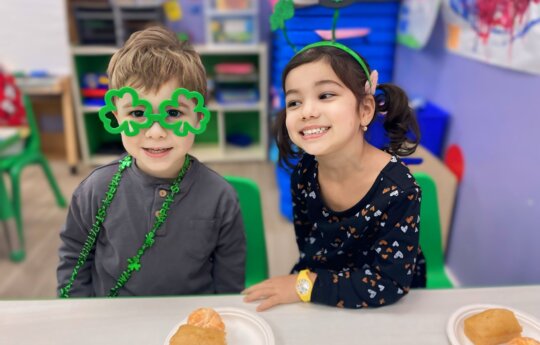
Celebrating St. Patrick’s Day with Kids
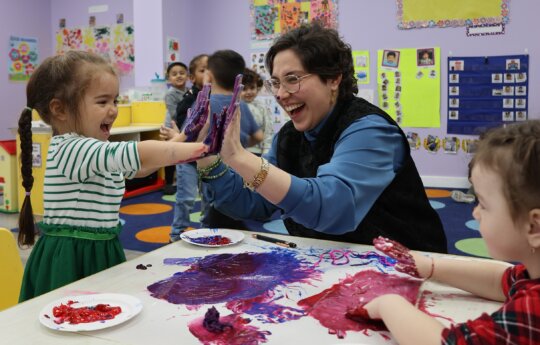
Balancing Screen Time and Playtime
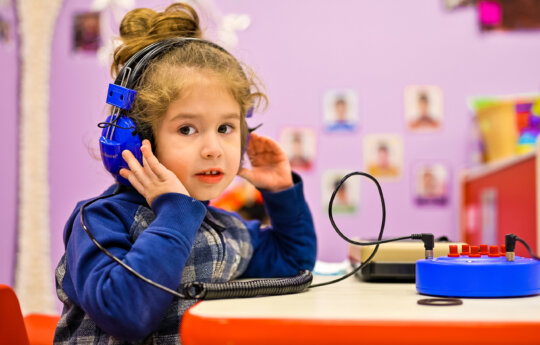
A Journey Through the Senses: Unlocking the World for Our Little Scholars
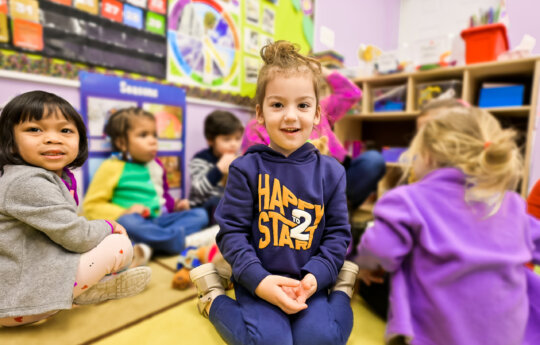
Understanding and Supporting Social-Emotional Development in Young Children
- Skip to main content
- Skip to after header navigation
- Skip to site footer

Preschool.org
The one-stop resource for preschool parents, teachers, directors, and owners!
How to Teach Problem Solving in Preschool
Problem solving is the way in which we find solutions to difficult issues. For young children, it is often social problems that they are needing to solve. Effective problem solving skills tend to lead to better outcomes, which make it possible for children to have positive interactions with their peers.
Preschoolers are beginning to seek out playful interactions with their peers, but those interactions are still a bit clumsy at times. This can lead to issues with effectively communicating, sharing, and playing cooperatively. As your preschoolers are learning how to interact with their peers and exploring how things work they will need strong problem solving skills. The best way to teach problem solving in preschool is through play because it offers many meaningful opportunities for them to solve problems.

USE STORIES
Stories are a very useful tool in teaching preschoolers problem solving. You can read relatable stories, or tell stories with puppets or dolls, in order to show different scenarios. Ask your preschoolers for suggestions on how the characters in the story can solve their problem. Write their responses down and then talk about what would be the most fair solution that everyone could agree to if it were them.
ENCOURAGE CREATIVE THINKING
When you provide your preschoolers with open-ended materials you are encouraging them to think creatively. Whether it is in the building, blocks, and loose parts center or the art and easel center, open-ended materials allow your preschoolers to come up with their own creations. This requires a lot of forward thinking for planning and experimenting with what will work and what will not.
LET THEM FIND THEIR OWN SOLUTIONS
It is important not to solve preschoolers problems for them. They need opportunities to find solutions to their own problems through trial and error. Finding solutions on their own have a more meaningful impact and therefore will reinforce their learning. Of course, if they appear to be struggling you can do things such as ask questions or make observations to help guide them towards a potential workable solution.
ALLOW FOR NATURAL CONSEQUENCES
With natural consequences, you do not have to interfere at all. Natural consequences are the naturally occurring effects of something that your preschoolers do. Natural consequences make for great teachable moments, as their peers or even nature determine the outcome.
For example, a preschooler may leave a toy that they are playing with on a table while they go to the bathroom. When they come back they find that it is gone and one of their friends is now playing with the toy. Now the child is unable to play with the toy that they were playing with before using the bathroom. Natural consequences showed that leaving the toy on the table was not a good solution. Next time, the child will most likely try leaving their toy somewhere else or asking someone to save it for them.

ACTIVITIES THAT PROMOTE PROBLEM SOLVING SKILLS
Play allows for many naturally occurring problem solving opportunities. Here’s a list of activities that will help build problem solving skills in preschoolers.
- Memory games
- Construction toys
- Pattern blocks
- Sort by color, shape, or size
- Working with patterns
- Trains & train tracks
- Process art
Teach your preschoolers problem solving skills through their natural play experiences and they will be better able to solve problems independently. These skills help them with their social interactions and build their confidence and resiliency.

Reader Interactions
Leave a reply cancel reply.
Your email address will not be published. Required fields are marked *
Save my name, email, and website in this browser for the next time I comment.

- Curriculum & Lesson Plans
- By Activity
- By Alphabet
- By Bible Story
- By Celebration
- Developmental Delays
- Growth & Development
- Special Needs Children
- Behavior Guidance
- Everyday Life
- Family Life Events
- Going to Kindergarten
- Going to Preschool
- Homeschool Preschool
- Classroom Management
- Classroom Setup & Layout
- Daily Schedule
- Field Trips & Events
- How to Teach
- Learning Centers
- Parent Communication
- Requirements to Teach
- Teacher’s Lounge
- Administration
- Sell a Preschool
- Start an Online Preschool
- Teach Online Preschool
- Do I Need to Be Licensed?
- How Do I Sign Up Students?
- How Do I Start a Preschool?
- What are the Requirements?
- What is a Preschool?
- Who Can Start a Preschool?

Problem Solving: How to Teach Young Children
Jul 07, 2023.
Problem solving is a very important skill that we need to teach children from a young age. The simplest problems can be of great concern to children; for example, if we have four kids and three cookies, who gets (or doesn’t get) a cookie? My answer would be to take two of the cookies, split each in half and give each child a half of a cookie…and mom gets the left-over cookie!
As parents or caregivers, we will not always be available to solve the cookie debate, a tough math problem or negative peer pressure. Kids in all age ranges, face problems and challenges every day. Our job is to prepare them for these decisions by teaching them how to solve problems by themselves.
A child who lacks problem-solving skills may avoid taking action when faced with a problem. They may get frustrated or give up when something seems too challenging. On the contrary, having problem-solving skills builds confidence. A child with problem-solving skills keep going until they find a solution; they’re creative thinkers and can adapt better in a variety of settings.
Here are four strategies for teaching problem-solving skills to children:
- Set a good example. Children learn by watching us; let them see how you deal with problems.
- Involve your child in family problem-solving meetings. Encourage your child to participate in solving a small family problem. They’ll learn while building confidence.
- State the problem clearly
- Come up with some possible solutions – brainstorm together
- Choose what seems like the best solution
- Try out the solution
- Review how the solution worked and make changes, if necessary
- Encourage your child to solve their own problems. Having your support on stand-by while they practice their skills will help them find success.
The methods used to teach problem solving provide more challenge with age:
- 3-5 years: Name and validate emotions, ask “show me” and use creative play.
- 5-7 years: Don’t forget their feelings, use the problem-solving steps above and ask open-ended questions, like “what do you think will happen next?”
- 7-9 years: Break down the problem into smaller parts, use the problem-solving steps above and ask open-ended questions.
Problem-solving skills are best taught in the moment. When your child comes to you to talk or ask a question, that is when they are more likely ready to learn. It’s important for parents and caregivers to show up and be present when those moments occur. Remember to give them your attention. Listen, show empathy, ask open-ended questions, and guide them as much as they need but do not solve the problem for them.
If you are looking for more tips around positive parenting, Nationwide Children’s Hospital offers free Positive Parenting Program (Triple P) support on a wide variety of topics for parents of young children. For more information, click here , email [email protected] or call (614) 355-8099.
Featured Expert
Crystal milner.
Crystal Milner is a Behavioral Health ECMH Consultant at Nationwide Children's Hospital.
Browse by Author
About this blog, pediatric news you can use from america’s largest pediatric hospital and research center.
700 Children’s® features the most current pediatric health care information and research from our pediatric experts – physicians and specialists who have seen it all. Many of them are parents and bring a special understanding to what our patients and families experience. If you have a child – or care for a child – 700 Children’s was created especially for you.
You Might Also Be Interested In

A Blog About Parenting: Coping Skills, Behavior Management and Special Needs

25 Fun Problem Solving Activities for Kids
Problem-solving activities for kids : Explore 24 fun problem-solving games and activities, and learn effective tips and strategies to teach kids problem-solving skills. If you want to explore problem-solving strategies more in-depth, you can also grab our workbook “ Problem-Solving for Kids ” (printable resource).
Problem-solving is the cognitive process of finding solutions to challenges or complex situations.
A systematic approach to problem-solving tends to include defining the problem, gathering information and data, generating potential solutions, evaluating the pros and cons of each solution, making a decision, and implementing the chosen solution.
Effective problem-solving often requires critical thinking, a good dose of creativity, and the ability to consider multiple perspectives. It may also involve identifying patterns, breaking down a problem into manageable chunks, and applying our logic to develop solutions.
Problem-solving is present in everyday situations and across all fields: business, science, personal life, and education. There is not one single aspect in our lives where we don’t need to apply our problem-solving skills.
Table of Contents
- Problem-solving steps
- Development of problem-solving in childhood
- Benefits of developing problem-solving skills
- 10 Tips to teach kids problem-solving skills
- 10 Examples of problem-solving strategies
- 25 Problem-solving activities and games for kids
Problem-Solving Steps
Some key components of problem-solving include:

- Identifying the problem Recognizing and defining the issue or challenge that needs to be addressed.
- Analyzing the problem Investigating and understanding the underlying causes, factors, and relationships related to the problem.
- Generating solutions Generating potential solutions or strategies to address the problem.
- Evaluating all possible solutions (Pros and Cons Analysis) Assessing the feasibility, effectiveness, and potential consequences of each solution. Considering the positive and negative aspects of each solution.
- Decision-making Selecting the best solution based on our analysis and judgment.
- Implementing the best solution Actioning our chosen solution
- Monitoring progress and results
- Reflecting on the outcomes Reviewing and evaluating the outcomes of the implemented solution, learning from the experience, and making adjustments if necessary.
Development of Problem-Solving Skills in Childhood
Children begin to develop problem-solving skills from a very early age, and these skills continue to develop and refine throughout childhood and adolescence.
Babies soon learn about action and reaction. And, as early as eight months, they begin to acquire an understanding of cause and effect (they shake a rattle, it makes a sound; they push a toy, it falls)
Between 13 and 24 months, they start solving simple problems through trial and error and engage in symbolic play using their imagination.
As children progress into middle childhood (ages 7-11), they develop more advanced problem-solving skills. They become capable of understanding multiple perspectives and can consider multiple factors when solving problems. They start using logic and reasoning to solve increasingly complex problems.
During adolescence (ages 12 and up), problem-solving skills continue to develop. Teenagers can generate and test hypotheses and use deductive and inductive reasoning to arrive at solutions.
Each child will develop their problem-solving skills at their own pace. Some children may show advanced problem-solving abilities at an earlier age. Others may require more time and experience to develop these skills fully.
Benefits of Developing Problem-Solving Skills in Children
Problem-solving skills in children are crucial for children’s cognitive, social, and emotional development. It equips them to approach challenges, think critically, make informed decisions, and find creative solutions.
The benefits of good problem-solving skills in children include:
- Positive impact on self-esteem and confidence Identifying, analyzing, and solving their problems contributes to our kids’ sense of competence .
- Fosters Independence and Autonomy When our kids are able to problem-solve on their own, they take one more step toward independence
- Academic Success Problem-solving skills contribute to academic achievement, as they help students analyze and solve complex problems across various subjects.
- Cognitive Development Problem-solving fosters cognitive skills such as logical reasoning, analytical thinking, and abstract reasoning.
- Critical Thinking Problem-solving enhances critical thinking abilities, enabling children to evaluate information, identify biases, and make informed judgments.
- Creativity Problem-solving promotes creativity by encouraging children to think outside the box, generate innovative ideas, and explore multiple solutions.
- Emotional Resilience Problem-solving skills enhance emotional resilience by enabling children to manage and cope with challenges effectively, reducing stress and promoting well-being.
- Improved Social Interactions/Relationships Problem-solving abilities contribute to better social interactions, conflict resolution , and peer collaboration, promoting healthy relationships.
- Future career success Problem-solving skills are highly valued in the workplace and can positively influence future career success.
10+ Helpful Tips to Teach Kids Problem-Solving Skills
Teaching problem-solving skills to kids is an important part of their cognitive development. It helps them develop critical thinking, creativity, and resilience.
But how can we help our kids and students to develop this essential skill?
We can help our kids and students develop and improve their problem-solving skills in many ways. These are some helpful tips that you could consider:
- Model problem-solving behavior When you see yourself in a problem-solving situation, verbalize your thought process: “I wonder how I should address this issue. I guess my alternatives could be… They all have positives and negatives….”
- Let them participate in the problem-solving situation “Could you help me solve this puzzle?”
- Provide real-life problem-solving situations Real-life scenarios make problem-solving more meaningful for kids. For example, discuss how to resolve a conflict with a sibling or how to make the morning routine smoother.
- Teach them how to break down problems Show them how to break down complex problems into manageable sub-problems.
- Practice brainstorming Create brainstorming situations where all the family (or the classroom) can contribute to solving a problem
- Teach the value of perseverance Sometimes, we must stick to a situation and persevere before finding a solution. Encourage kids to persevere through challenges and setbacks, emphasizing that mistakes and failures are opportunities for learning.
- Encourage critical thinking Encourage kids to analyze situations, consider different perspectives, and evaluate possible outcomes.
- How could we make your school lunch healthier but still yummy?
- How could we reuse/recycle all this paper?
- What could we do to help you remember all the steps in your night routine?
- Encourage reflection When they can find a solution for a problem, don’t jump to solve it for them. Encourage them to reflect on the problem and find and evaluate alternatives. And after a problem is solved, think about the whole process and the learnings. “How did this work?” “What did you learn” “Do you need to change anything?”
- Foster creativity Provide them with opportunities for imaginative play, creative projects, and brainstorming sessions.
- Teach the value of teamwork Teach kids the importance of working together to solve problems. Engage them in group activities or projects that require teamwork and collaboration. This helps kids learn the value of different perspectives and work together towards an objective while they practice their communication skills.
- Teach decision-making skills Teach kids how to approach problems systematically by going through the steps we have mentioned in our first section.
- Encourage both structured and free play. Structured play can help you create good problem-solving situations, while free play will foster creativity.
Developing problem-solving skills is an ongoing process that will also continue in adulthood. Provide your kids with guidance and support, and celebrate their efforts and achievements along the way.

10 Examples of Problem-Solving Strategies
There are different strategies that can help us solve a wide range of problems. Here are some commonly recognized problem-solving strategies:
1 . Trial and Error : This is the first problem strategy that we ever learn. We start using trial and error strategies in infancy, and it continues serving its purpose in many situations. This strategy involves trying different solutions or approaches and learning from the errors or failures until a successful solution is found.
2. Algorithm: An algorithm is a step-by-step procedure or a set of rules that guarantees a solution to a specific problem. It is a systematic approach to problem-solving that follows a predetermined set of instructions.
3. Heuristics: Heuristics are mental shortcuts or rules of thumb that help simplify problem-solving by providing quick and efficient strategies. While heuristics can be effective in many situations, they may also lead to biases and errors.
4. Divide and Conquer: This strategy involves breaking down a complex problem into smaller, more manageable chunks or steps that make the overall problem easier to tackle.
5. Working Backwards: This strategy involves starting from the desired outcome and working backward to determine the steps or actions needed to reach that outcome. We often use this problem-solving strategy when we set goals.
6. Analogical Reasoning: Analogical reasoning involves drawing parallels between the current problem and a similar problem that has been solved in the past. By applying the solution from the previous problem to the current one, individuals can find a solution more efficiently.
7. Brainstorming: Brainstorming gets lots of brains working on the same problem. It is a great collaborative problem-solving strategy that can bring different perspectives and experiences to the table and may result in lots of creative ideas and solutions.
8. Decision Matrix: A decision matrix is a systematic approach to evaluating and comparing different options or solutions. It involves creating a matrix that lists alternatives and the criteria for evaluation. It assigns weights or scores to each criterion to come up with the optimal alternative.
9. Root Cause Analysis: Sometimes, we need to understand what is causing a problem before we can attempt to solve it, as different causes may require different approaches (for example, when you are sick, your doctor may need to understand what is causing the problem before prescribing a medicine)
10. Simulation and Modeling: Simulation involves creating a simplified representation or model of a problem situation to gain insights and test different scenarios.
Our choice of strategy will depend on the problem, available resources, and our own personal preferences and circumstances. We may also need to combine strategies or apply different ones to different aspects of a complex problem.

(Disclosure: We are a participant in the Amazon Services LLC Associates Program, an affiliate advertising program designed to provide a means for us to earn fees by linking to Amazon.com and affiliated sites. You can also read our Disclosure & Disclaimer policy here )
Best Problem-Solving Activities for Kids
Play-based activities are centered around play and are designed to engage children in active learning and exploration. And fun problem-solving activities are a great way to develop children’s critical thinking, creativity, and decision-making skills.
In this section, we will review some problem-solving games and activities that will engage your kids’ critical-thinking skills and creativity.
1. Puzzle Games Puzzles are a fun activity for children of all ages. Young children will enjoy simple puzzles, while older children (and adults!) can have fun with more complex ones. Encourage them to use logical thinking and problem-solving strategies to complete the puzzles.
2. Crosswords A crossword is another fun type of puzzle and a good source of mental stimulation.
3. Sudoku Sudoku is a popular logic-based puzzle that involves filling a grid with numbers.
It can be extremely easy or very challenging, adaptable even for young learners.
Let’s go now for a couple of building challenges!
4. Build the Tallest Tower Give the child a set of materials (Legos, building blocks, wooden blocks, or other construction materials) and ask them to build the tallest tower they can. This simple game will encourage them to problem-solve as they build and figure out how to make the tower stable.
5. Build Towers with Different Materials Ask your child to build three different towers with different materials. Then assess how stable they are and how much weight they can hold. Analyze the pros and cons of using each type of material.
6. Treasure Hunt Set up a treasure hunt with clues leading to hidden objects or rewards. Children will have to follow the clues and solve puzzles to find the ultimate prize. This activity encourages problem-solving, critical thinking, and teamwork.
7. Scavenger Hunt Playing Scavenger Hunt can be a fun way for our kids to put their creative problem-solving skills to good use. Provide them with clues and puzzles that they must solve in order to find the next clue.
8. Mystery Bag Fill a bag with random objects and ask children to come up with creative uses for each item. Encourage them to think outside the box and find innovative solutions.
9. Memory Game While memory games primarily focus on memory retention and recall, they can indirectly contribute to problem-solving skills by developing cognitive abilities such as attention, information processing, and adjusting their strategies.
10. Role-Playing Scenarios Create role-playing scenarios where children have to solve a problem or make decisions. For example, pretend to be stranded on a desert island and ask them to decide what items they will take and how they will survive.
11. Role-Play Social Situations Work in developing social skills with social problem-solving situations.
12. Brainstorming Sessions Choose a topic or problem and hold brainstorming sessions where children can generate as many ideas as possible. Encourage them not to limit themselves (even if alternatives feel unfeasible!)
13. Team Building Activities and Games Engage children in team-building games like building a balloon tower. Each team member will need to collaborate, communicate, and problem-solve together to complete the project.
14. Escape Rooms An escape room is a super fun team problem-solving activity.
In an escape room, participants are locked inside a themed room and must work together to solve puzzles, find clues, and accomplish tasks within a given time limit in order to “escape” from the room.
15. Science Experiments Conduct simple science experiments that involve problem-solving. For example, in the classic “sink or float” experiment, children predict and test which objects will sink or float in water.
Problem-Solving Board Games
There are many board games that will test our kids problems solving activities. These are just a few examples:
16. Cluedo Players must solve a murder mystery by deducing the murderer, the weapon used, and the location of the crime. Players collect and examine clues to eliminate possibilities and make logical deductions.
17. Codenames Another classic game where players are split into two teams and must guess words based on clues from their teammates.
There are many codenames games available, including themes like Disney or Harry Potter.
18. Mastermind Game In this strategy game players take turns setting and solving secret codes
19. Scrabble Scrabble is a classic word game where players form words on a game board using letter tiles.
Kids must use their problem-solving skills to analyze the available letters, consider the best word combination and strategically place those words to score the highest points.
Learning Problem-Solving with Card Games
Card games provide opportunities for kids to develop problem-solving skills such as strategy, memory, pattern recognition, decision-making, and observation.
Just a couple of examples:
20. Uno Uno is a classic card game where kids match cards based on color or number. They need to assess their cards, strategize and make decisions about which cards to play to get rid of their cards while also considering the cards in their opponents’ hands.
21. Go Fish Go Fish is a classic card game where players try to collect sets of cards by asking other players if they have specific cards. Players need to remember which cards they have and make decisions about who to ask and what sets to pursue.
22. Coding Challenges Introduce children to coding activities using platforms like Scratch (or ScratchJr for younger kids), Code.org, or Tynker. Coding involves problem-solving and logical thinking, and children can create interactive stories, games, or animations.
23. Outdoor Problem Solving Take children outside and present them with challenges that require problem-solving, such as building a shelter using natural materials or finding their way through an obstacle course.
24. Problem-Solving Worksheets Help your child follow a systematic approach to problem-solving with these helpful worksheets
25. Goal-Setting Activities for Kids Learning to set goals and make plans to achieve them is also a problem-solving activity. I have several resources to teach kids about goal-setting that I will list below:
- Goal-Setting Activities for Kids
- SMART Goals for Kids
- Goal Tracker Thermometer
Remember to provide guidance and support during these activities while encouraging children to think independently and come up with their own solutions.
Problem-Solving Worksheets

Looking for kid-friendly examples of problem-solving strategies ?
This workbook explores the following problem-solving strategies (with child-friendly examples and activities):
- Trial and Error
- Heuristics (Clever shortcuts)
- Divide and Conquer
- Working Backwards
- Brainstorming
- Decision Matrix
- Root Cause Analysis
- Systematic problem-solving

One Comment
I always look forward to your articles with active interventions. Thank you!
Leave a Reply Cancel reply
Your email address will not be published. Required fields are marked *
- U.S. Department of Health & Human Services
- Administration for Children & Families
- Upcoming Events
Teacher Time
- Open an Email-sharing interface
- Open to Share on Facebook
- Open to Share on Twitter
- Open to Share on Pinterest
- Open to Share on LinkedIn
Prefill your email content below, and then select your email client to send the message.
Recipient e-mail address:
Send your message using:
Problem-solving and Relationship Skills in Preschool
Woman: Places, everyone. Are the lights ready? Three, two, one.
Saameh Solaimani: Hi, everyone. I'm Saameh Solaimani. Welcome to "Teacher Time.” Thank you so much for being here with us today.
Gail Joseph: Hi, everyone. I'm Gail Joseph, and I'm so excited to be joining you on "Teacher Time" today. Now, Saameh, I always think it's better when we start with a song, so shall we?
All: [Singing] "Teacher Time.” "Teacher Time.” "Teacher Time.” "Teacher Time.” "Teacher Time.” "Teacher Time."
Gail: Here we are. I love your puppet moves. You've got some really good moves.
Saameh: Thank you. I worked hard on this.
Gail: Well, hi, everyone, and welcome to our third preschool episode of "Teacher Time" this program year. I'm Gail Joseph.
Saameh: I'm Saameh Solaimani, and we're from the National Center on Early Childhood Development, Teaching and Learning.
Gail: We are so excited to have you here with us today. We have been focusing on positive behavior supports this season of "Teacher Time.” Hopefully, you've joined us for some of the previous episodes. So far, we've talked about the importance of relationships and how to support emotional literacy. And today, we're going to be focusing on problem-solving and relationships, and friendship skills in preschool.
I want to draw your attention to the viewer's guide. I've printed mine out here. It's beautiful. You can find it in the resource widget. If you haven't looked at our viewer's guide for a while, I strongly encourage you to. This season, our viewer's guide is a viewer's guide for birth to five, including specific age group information for infants and toddlers and preschool children. It is packed with information about development, about teaching practices. There are quick tips in here. There are reminders. There are things you can cut out and post and put up in your learning space. There are spaces for notetaking.
On the last page is just an extensive resource list that you are going to love. You can download the guide and use it throughout our time together for taking notes, for reflecting, planning how you might use some of the "Teacher Time" practices we're going to talk about in your own settings. And please share your viewer's guide with colleagues. Also, we want your ideas in the next issue of "Teacher Time.” You can see on the back that we ask you to submit some of your own strategies and tips, and then you'll be published in the "Teacher Time" viewer's guide.
Saameh: That would be awesome. We always love to hear from you. Thank you so much, Gail. During our time together, we're going to be discussing teaching practices that support positive behavior. We're going to take some time to promote your wellness with our It's All About You segment. We're going to connect effective practice to brain development in our new segment, which some of you may have seen in our last episode's Neuroscience Nook.
We're going to discuss small change, big impact, and in our focus on equity segments, individualized strategies that build a sense of belonging and promote social and emotional skills with all children, including children who have a variety of learning characteristics. And we're going to wrap up our time together, as we always do, with our BookCASE, where we connect our topic to books that you can share with children and families.
Gail: We love the BookCASE and our "Teacher Time" librarian. Like we do at the beginning of most "Teacher Times," we want to check in with how you're feeling, such an important thing to do periodically throughout the day. Look at our "Teacher Time" feeling tree, find a feeling creature. They all have little numbers on them.
And post in the Q&A which number creature you most relate to at the moment and why. We want to hear from you. We have our amazing Q&A team there, ready to see your input. I'm going to go ahead and start. Now, every time I look at — what I love about our little "Teacher Time" tree here is that I always think a little bit differently about how these creatures are feeling, which is fun. It helps children do that, too.
Saameh: Right.
Gail: I think the little guy that is swinging from the tree there. I'm just pretty excited to be here. I've been on some travel. I'm excited to be back with you and back with our "Teacher Time" viewership. How are you feeling, Saameh?
Saameh: I actually was thinking about this. And I think number 12, sitting on the leaf, surrounded by friends, by community, by all of you. Yeah, I'm feeling very part of this learning community.
Gail: I love it. And our viewers are checking in. Five, a rough week. Some weeks are like that. I hope it gets better for you, Amy. We've got a 12. Somebody is feeling like you. One, five. Our viewers are all over the tree, checking in. I feel like number five, pretty rough afternoon. My goodness. We hope that spending some time today thinking about your own professional development might feel a little bit uplifting for you. But we definitely know how it feels when you're not having a great week, too. Just hanging in there. Thank you so much for sharing.
Saameh: Yes, yes.
Gail: Thank you. Keep it going. Keep it going.
Saameh: We're very excited to be focusing on positive behavior supports this season, as you know. And social and emotional development. As you may know, is one of the domains in the Head Start ELOF, which stands for Early Learning Outcomes Framework. The practical strategies we're going to be discussing today are going to be focusing on the relationships with other children subdomain of social and emotional development. And you can see that highlighted here.
Gail: I love that. Now, like we said last month, this season of "Teacher Time" is focused on working our way through the Pyramid Model. Some of you might be really familiar with the Pyramid Model. Maybe your program is participating in a pyramid training. But if you're not familiar with it, the Pyramid Model is really a model or a framework of positive behavioral support for proactively addressing the social and emotional development. And for preventing and addressing challenging behaviors of young children. The framework offers a continuum of evidence-based teaching practices that are organized into four levels of support. And you can see those there.
At the foundation, it's all about nurturing and responsive relationships. Not only between the teacher, the educator, and the children but between children and between educators. It's all about these relationships. And we want them to be nurturing and responsive no matter what relationship they're in. That's the foundation. The next are high-quality supportive environments. How can we create both the physical and temporal structure of the environment to support positive behavior?
Then we level up and go to social and emotional teaching strategies. That's where we're at right now, is going to dig into some of those social and emotional teaching strategies. Then at the very top, when all of the bottom three pieces are in place, there might still be some children that have some behaviors that could require a little bit more intensive intervention. And we're going to talk about that in May. Be sure to come back.
But if you want to learn more about the Pyramid Model, you can check out the resource list in the back of your viewer's guide for a lot more information about it. Now, we would love to hear what strategies and practices you have in place to support young children's problem-solving and their friendship skills with children that you're working with.
Go ahead and start entering those in the Q&A. And our Q&A team, we've got, like, the star Q&A team today. They're going to start sending those out, too. We're going to be tracking them, but they're also going to be sent out so other people can see them as well when you share what strategies you're using. We always learn so much from our viewers. And there's always something that we're, like, a gem out there in how you're supporting young children's problem-solving.
Saameh: Such a wealth of resources out there.
Gail: Absolutely. Now, as a reminder, positive behavioral support, or sometimes called PBS, sometimes you might hear it called PBIS. Sometimes you might even hear it called a multi-tiered system of support. But positive behavioral support is a positive and proactive approach to preventing and addressing challenging behavior. It focuses on using very intentional teaching strategies to proactively, that's such a big part of it, proactively build all social and emotional skills. And today we're specifically thinking about building problem-solving skills and relationship skills for young children. Now, positive behavioral support recognizes that all behavior communicates a message or a need. And some behaviors, as they're trying to get their needs across, we might find challenging.
Once an educator understands the meaning, what is the message that the child is trying to send with their behavior? What's the meaning? They want something. They want to get away from something. They're not sure how to play with their friends, but they're trying in the way that they can. Once you know what the meaning of that challenging behavior is, then we can figure out how to teach the child a more effective way to communicate their needs and problem-solve with support.
Saameh: So important to keep in mind. Now what we're going to do is we're going to turn our attention to you in our All About You segment. We know that we do our best caregiving and teaching when we feel well ourselves. Engaging in self-care practices can help educators build greater social and emotional capacity to work through problem-solving together. And our ability to support children with problem-solving and relationship skills starts with our ability to center ourselves by noticing and observing what's happening with as little judgment as possible.
We can help young children work through challenges with peers from a more grounded, soft, and objective place, naming what we see happening calmly without so many of the other things going on when we're feeling stressed and overwhelmed. What we're going to do is a little body scan. Before we can support the children in our care with problem-solving and relationship skills, it's important to find ways to regulate our own feelings throughout the day.
Taking a minute to do something like a body scan like we have here to notice what's happening in our own bodies is softening in the moment. We can slow down and center ourselves throughout the day. This practice supports our own well-being first, enabling us to hold a non-judgmental space, as we were saying, respond intentionally to children's cues, behaviors, and communications as we support them in building healthy relationships with each other.
Here we go. Start with a deep breath. Okay, I noticed as I was saying that I was holding my breath. Breathe. Okay, so we're going to start in a seated position or laying down, whatever is comfortable for you. And now you can bring your attention to your body, and you can close your eyes if that's comfortable for you. And you can notice your body wherever you are.
As you exhale, you have a sense of relaxing, and you can notice your feet or body on the floor. You can notice your back against the chair or maybe on the floor. Bring your attention into your stomach area. If it feels tight, let it soften. Notice your hands, arms, shoulders, and let them be soft. Let your jaw and facial muscles be soft. Notice your whole body present, and take one more deep breath. Okay.
Okay, we would love to hear how you were feeling during that or feel now or after the body scan. What do you notice? And let's see. And I noticed like I was saying, that I was holding my breath.
Gail: I feel like we should do that right before "Teacher Time.” It would be really helpful.
Saameh: That's right.
Gail: I felt so calm and centered.
Saameh: We'd love to hear from you how that experience was. Thank you so much for taking the time to take time for yourself. Calm. Self-aware. Conscious. More relaxed.
Gail: It doesn't take very long too, and I know that when I was teaching on a regular basis, just having those moments where I could just feel that tension in my body, and it just takes a moment to take a breath before I interact.
Saameh: It is amazing how much one minute of breathing can do. Yes. It’s not something that requires a lot of time, which I know we don't necessarily have as teachers sometimes.
Social competencies like self-regulation, empathy, perspective-taking, and problem-solving skills are key to foundational healthy social-emotional development. And these include positive interactions and friendships and relationships between peers, as we know. Educators can help children learn the skills necessary to develop healthy peer relationships and find ways to work through social conflicts with adult support.
And that's where we come in. And teaching and modeling problem-solving skills early on with preschool children builds a foundation of problem-solving and relationship skills that most children can access with adult support and start to use independently as they continue to develop. The more we can support young children in developing problem-solving skills in their learning environments, the less we'll see some of those challenging behaviors that oftentimes arise from not having the resources, the tools to work through the problem as they come up, which they will because that's life.
It's important to note that there might be some children in your care who don't readily learn these skills through foundational teaching strategies. This might include children with disabilities or suspected delays. It's important to be aware of the progress for all children and use more individualized practices to work on these skills with children who need a little more support. That’s what we'll be doing today, sharing some strategies to do just that.
Gail: Some key ideas and practices for supporting problem-solving and peer relationship skills with preschool children are the first little slide that you see there or picture that you see there is about promoting healthy relationships. Preschoolers are increasingly interested, as our viewers know, in developing friendships with one or two preferred peers, like we see in the photo on the left. They're able to engage in group play and independently initiate interactions with peers, which is so fun to see develop.
Preschoolers might suggest something to do, like let's play a restaurant or let's build a swimming pool for our animals together or join in an existing activity. Hey, can I play too? Educators can support preschoolers in promoting healthy friendships in quite a few ways that I'm sure our viewers are already doing. But just to name a few, one is that you can help children plan what and how they will play together.
One thing that I always like to, I'm going to go off for a moment, is that one thing that I think about a lot as a preschool teacher is thinking about materials and resources and activities that require two children to play together so that you set the stage for children to interact with each other. Things like those teeter-totters or rowboats in classrooms is just one obvious idea that takes two children.
Another thing is providing suggestions for initiating interactions with other children. And a quick tip there too is right before children go to play, if there's a child that you think could use a little bit more support, is to do a little priming and say, “hey, point to two or three things that you could play with a friend,” and you'll see that they can increase their initiations with other children.
Then, encouraging children to consider other ideas. I don't know if anybody out there is a big puppet user, but I used a lot of puppets when I was teaching at Head Start, and this was a great way to model like at a circle time, model with a puppet and other children role-play how I could consider somebody else's idea. Lots of ways to do that.
Saameh: This is a great time for us to pause and think about what value do I place on peer relationships, and how do I expect peers to act with each other? Sort of that, taking a moment to think about our own ideas because we're subjective beings, and we have our own experiences. It's really important to just take a moment. And awareness of our responses to these questions is supportive of our equitable practice. I do have to say I love what you said about puppets, and we're going to be seeing a little bit of puppet work later on in our episode today. I am also a fan of puppets.
As you see, the second photo you see is representing teaching problem-solving steps, which is so important. Preschoolers are willing to try different strategies to solve problems and show flexibility in their actions and behavior, and they can plan ways to solve a problem and evaluate solutions with our support. In a minute, we're going to hear from Dr. Angel Fettig, Professor of Early Childhood Education at the University of Washington, who will share strategies to support problem-solving in preschool classrooms. She's going to talk about the steps.
Gail: That's great. Of course, another way that we can support children, which you probably feel like you're doing all the time, is teaching problem-solving in the moment. One is to proactively teach, which we're going to hear about strategies for doing that. But the other thing is then supporting that problem-solving as it occurs in the moment. There are a few steps that educators can do to work through that. One is anticipating that social conflicts are going to happen, and you try and anticipate it before they happen.
You might notice a child that's coming into the classroom or into the learning setting feeling a little bit tired, maybe something upsetting happened before, maybe you have some communication with the family and understand that something troubling has just happened at home, and the child is coming into the space. Maybe they're not usually having a difficult time with problem-solving, but today they might be.
But another thing that you can do is anticipate, did you introduce a new toy into your learning space? Maybe you introduced some new props in the dramatic play area, and you know that a lot of children are going to want to use them. You're anticipating that probably in that space, there's going to be a little bit more need to support problem-solving in the moment. You want to anticipate social conflicts before they happen.
Another thing that's so important is being close and helping children manage their feelings. If I'm anticipating that there might be some problem, maybe an individual child might need some more support, or there's an area in the classroom that I think, oh, I'm probably going to want to be close there, is to get close because children will, as they get excited or upset, that fight or flight comes in. You want to be there to support them to help remember some of the problem-solving steps that you've provided.
Now, providing support and reminders of problem-solving steps would be next. I'm going to be close with them, and then I'm going to provide support, and that support could be verbal like I could remind them of the problem-solving steps. It can also be visual, and we're going to talk about some of the visual supports you can have in your classrooms.
Some people in our Q&A have already talked about ways that they've used visuals with problem-solving solution kits, et cetera. We can encourage children to generate and evaluate multiple solutions. I'm going to say that this is really where it's at for preschool children, is to encourage them to generate as many different solutions to a problem as they can. When children have a restricted number of solutions they can try, they're bound to run out of things that are working for them. We want to encourage them to keep being really creative and generating so many different solutions.
Last but not least, when children do problem-solving, find some way to celebrate that. It might be a thumbs-up. It might be a high-five. It might be with a super friend cape or with some other type of big celebration because this is hard work, and it's really hard work when you're a young child just figuring it out. We want to make sure that we're celebrating that. We're going to remember that we always want to individualize the strategies that we're going to use to provide support based on the skills of the children that you're supporting.
Some children might need some additional amount of language that needs to be modified. Some children might need visual cues or gestures paired with verbal language. Some children might need some specific feedback on the consequences to help them learn the effect of their behavior on the environment. Stay tuned for BASICS where we're going to share about some more strategies for providing feedback.
Saameh: I love that. I love what you said about anticipation. I think it goes such a long way. Also, what you were saying about problem-solving and the children coming up with the solutions, generating the solutions, and I keep thinking about how problem-solving is also play in a way.
Gail: Yeah.
Saameh: It's exploration. It's play. In a way, it's fun. It's not necessarily a negative thing. Sometimes we think problem as negative, and it doesn't have to be.
Gail: It can be like a fun challenge. I would support children, and I'd say, “are they making it tough on you?”
Saameh: Exactly.
Gail: And they'd be like, yeah. But then they'd be encouraged to keep going. Sometimes I'd say, let me look. Let me look. I think you've got more solutions in there. I'd peer into their ear, and they'd think that was really fun. You can just really be fun and encourage them to be creative and think of more solutions.
Saameh: I love that one. We’re going to hear from Dr. Angel Fettig, who we were talking about earlier, as she discusses strategies to teach problem-solving skills.
[Video begins]
Angel Fettig: I think in early childhood settings, I think the best thing is to think about simple steps to teach kids. So simple, concrete strategies they can use in the setting. My favorite is to really think about the four-step problem-solving technique. Step one is, what's my problem? Really being able to know that there's a problem here, and this is the problem. Being able to identify it.
Angel: And then step two is helping them brainstorm. What are some things I can do to solve this problem? Guiding them in understanding, How do you brainstorm for solutions?
Gail: Okay.
Angel: And then the next step, step three, is to think about evaluating the solutions you came up with. Do I think using this step is going to be fair for my friends? Is it a safe solution?
Gail: Right.
Angel: Am I going to feel good? Is my friend going to feel good?
Angel: And then step four is guiding them to try it out.
Angel: You try it, see if it works.
Angel: If it doesn't work, then encourage them to try a different strategy, try a different skill. Those are the four steps. And it's really important that we teach those steps systematically and with visuals, just like how we will typically teach any content in early childhood classrooms.
Angel: I think as early childhood educators, we need to plan these into our curriculum in teaching problem-solving skills.
Gail: Great.
[Video ends]
Saameh: So wonderful. As we saw, Dr. Fettig outlines four important steps to go through with preschool children to help teach problem-solving skills. First of all, helping children identify what the problem is in the first place. Next, inviting children to generate and evaluate multiple solutions through brainstorming, as you were sharing, Gail, and then evaluate the solutions. How are these solutions working out? Lastly, we can help children select a solution and try it out and see how it works. We'd love to hear from you in the chat. What are some ways that you support problem-solving with children in your care? Please share in the chat.
As you're doing that, I wanted to share something I remember being surprised to learn early on in my career as an early childhood educator. It was just, like, what a big part of our job supporting children and problem-solving is. It's a huge part. I mean, it was most of the day. It was really doing that, and I was in for a surprise. But, getting down on the children's level, taking the time to be present and understand what's happening, how we can support children to work through the problem in that moment, which I'm sure you all experience many times a day. And the solution kit. We will be talking about that.
Gail: That's right. Owl's Pals, that's a great social and emotional curriculum. I see that one coming up. Tucker the Turtle, we know about that. That's a great one. Trying to hang in there. Sarah, yes, that is so important. It's just that trying to hang in there, taking those deep breaths, getting centered, and getting back into it and knowing that this is part of the job.
Saameh: It truly is.
Gail: What a great job it is to help build this, like, social and emotional foundation for young children so that when they're entering into even larger group settings, they're going to be really successful. Yes, trying to hang in there but knowing you've got a great purpose.
Saameh: Absolutely. What we're going to do now is we're going to take another moment to pause and reflect, a reflective moment, on questions that will support equitable teaching practices. We're going to invite you to reflect on the following questions. How do I expect peers to act with each other? How do I feel about conflict? Do I listen openly to all children when there is a problem? To just take a moment and think about those things. We're going to revisit these questions in our Focus on Equity segment. We thought it would be nice this time to weave throughout.
Gail: I love it. Those are such good questions. I'm just thinking about it myself, like, what was I expecting?
Saameh: Right. Now for our Neuroscience Nook segment. Research tells us that the early years are foundational for brain development. And adults play an important role in supporting healthy brain development connections and architecture.
In this segment, our Neuroscience Nook, we are excited to connect this research to everyday teaching practices. I'm going to just take a moment for this side note. As questions are coming up for you, we want to hear them. Please put them in the Q&A or post them in the "Teacher Time" Community in MyPeers. Just wanted to say that.
What we're going to do is we're going to shift our focus. We're going to talk a little bit about executive functioning, which is a very important brain function. The prefrontal cortex begins to develop very early in life. This area of the brain is responsible for what are called executive functioning skills, which some of you may have heard of. They're essential for development of strong and healthy relationships.
This is a really great graphic here, as you can see. It includes what are some of the main functions of executive functioning and executive functioning skills. What are they? Attention, that would be being able to stay focused on a task. Working memory, which is being able to remember rules and procedures. Self-regulation and the ability to control impulses.
Right there, you can see how important that would be for developing strong and healthy relationships. Organization, things like switching between tasks, that would be called flexible thinking. Problem-solving, planning, behavior, decision-making, and motivation. As you can see, hopefully, you're convinced that executive functioning skills are very important indeed. You can see how all these skills are important.
Gail: Absolutely.
Saameh: Also are interrelated in a lot of ways. What we can do is help young children start to develop these critical relationship building and problem-solving skills. I know what all of you are doing every day, through responsive caregiving and effective teaching practices that are responsive to an individual child's needs. In our most recent episodes of "Teacher Time," those were building relationships and emotional literacy in preschool, we've talked about ways that you can support executive functioning through things like serve and return, and the flipping your lid, the hand model.
Gail: Yes, I remember.
Saameh: Yes. From Dr. Dan Siegel. I practiced that a lot before, by the way.
Gail: Yeah, it was good.
Saameh: We also encourage you to look back at the last two viewers guides, that would be building relationships with children, birth through five, and emotional literacy with children, birth through five, to see more about the importance of nurturing and responsive relationships on the developing brain. What we're going to do is we're going to hear — now we're going to hear from Dr. Juliet Taylor, as she describes the development of executive function.
Juliet Taylor: I'm going to show you a graphic of how executive function develops over time. Here's sort of a graphic representation. And one thing to point out is that we are not born with executive function skills in place. We're born with the potential to develop them, or not, depending on our experiences, our neurophysiology, and the interactions between those things.
This graph shows that on the horizontal axis you can see this is ages birth to 80, and notice that there's not an even distribution between the ages. And that is because there are particular peaks in executive function development. You can see skill proficiency on the vertical axis. And I'm going to highlight a couple of areas where you see tremendous growth in executive function skills, and that is really in the preschool ages, between three to five, and then in early adolescence to early adulthood, there's another spike in development.
The foundations of executive function are laid down in the earliest months and years of life, and that really happens through basic sort of serve and return, it's sometimes called, or those basic interactions between child and adult that happen over and over and over again. And that spike really does happen in the preschool years after children have verbal language.
Saameh: As you can see, that graphic, it's just so helpful to see the development pattern. And we see that we aren't born with executive function. We are, however, born with the potential to develop them, and why our support as educators is so important. We know that the foundation of executive function skills are laid down in the first months and years of life. And what we heard and saw, the yellow highlight, is a spike in executive function development between three and five years old after many children have developed verbal language.
Gail: I love that, and I saw the other spike was like that, like, early or later teen years.
Saameh: I noticed that.
Gail: I've got two of those at home. I feel like I see that on a regular basis. Yeah, very true.
Saameh: It resonates.
Gail: It really resonates, both as a preschool teacher and as a mom of adolescents. That's so great. And, like, looked like some declines as we get older. It's not fun.
Saameh: A little less fun.
Gail: We're going to get to the "Teacher Time" BASICS, and we're going to talk about how we can use BASICS to support problem-solving and relationship skills. If you haven't joined us before, let's just go through really quickly what BASICS is. It's an acronym that helps us remember some really powerful teacher-child or adult-child interaction moves that we can make that can support children's growth and development in any area.
The "Teacher Time" BASICS are B is for behavioral expectations in advance. It is always helpful to tell a young child what you're expecting from them before you start a new activity. A is for attending to and encouraging positive behavior, which is so relevant to the topics that we're talking about now. S is for scaffolding with cues and prompts.
Those can be verbal cues, visual cues. You're going to see some of that today. Increasing engagement is the I. C is for creating and adding challenge. Young children grow when we add some challenge to, whether it's intellectual challenge or social and emotional challenge, that creates some growth for young children. And S is for that specific feedback.
If you've joined us for other webinars, you know that we only take two of these letters to focus on. It's too much to do all of them in one episode. We've focused on different letters at different episodes. You'll see that if you want to go back and look at some prior episodes. You'll see some of the other letters.
But today we're going to focus on the C and the S, create or add challenge, and the second S, which is about providing specific feedback to support problem-solving and relationship skills. We're going to jump to it. We're going to start with creating or adding challenge. This is one of my favorite things.
One fun way that we can create or add challenge to problem-solving and relationship skills is to create a friendship kit and invite children to use it when they notice that another child is upset. You can see on the screen that the friendship kit can have lots of little things in it. Really it could be like a shoebox. It could be a file folder. It could be any way that you can contain it. It could be a lovely basket.
But the idea is that in this friendship kit, there are things like maybe a pack of tissue if somebody is crying. Maybe there's a soft toy for someone to cuddle with if they're feeling like they're missing somebody. Maybe there's a pack of bandages to not only help with a small cut, but maybe if your feelings are hurt. We've had children also apply bandage. Very sweet. A sheet of stickers. Maybe a sticker would help someone.
There can be visual support cards of simple problem-solving solutions and things that you can do when a friend is in duress. Things like giving a gentle hug. Maybe saying, I'm sorry. That is certainly a challenge that we offer to young children is to provide a genuine apology, which is a great repair strategy for them to learn. That's one thing. I'd be curious to see if people are using friendship kits. You can enter that into the Q&A.
I've had lots of lovely experiences in my classroom with these friendship kits where children go to them when another child is upset. I had one experience. Well, I'll tell that story in a little bit. But they're just such great, lovely stories about how young children will use it. It's just like a physical reminder of what it takes to develop those special friendships. Now, there's another way that we can create or add challenges. Thank you for advancing that. That was a nice thing to do from our friendship kit.
Gail: Thanks for advancing the slide.
Saameh: Of course.
Gail: Is to actually create a problem-solving solution kit or problem-solving basket. We have already had viewers tell us that they're using these out and about. You'll see lots of resources for supporting those in your viewer's guide. But this is to add a bunch of visuals about supporting problem-solving. Remember we said that one of the more difficult things for young children to do is to generate multiple solutions that are different from each other.
I do always remember when I started doing a lot of social and emotional development, problem-solving in a classroom, in my preschool classroom, I had a student in there, a child in my classroom named Freddy. I loved that. It was the only Freddy I've ever had. Freddy ran up to me on the playground and he said, "Teacher Gail, I've got a problem.” I was like, "Perfect, so excited about this problem.” I said, "What is it?” "Jordan took the ball and won't give it back.”
Now, that is a real problem that happens on a regular basis in preschool classrooms. I said, "Well, what solutions did you try?” Because we were working on solutions. He said, "I tried five.” I was so excited because that's a lot. I said, "What were they?” He said, "I said, 'Please, please, please.'"
One of the things that this problem-solving basket or solution kit can provide for young children are different solutions. You want children to understand that it's not just trying the same solution over and over again or louder. But it is actually trying different solutions, like wait and take turns, hardest solution. I think to try, make another choice, play together. We could ask an adult if it becomes a big problem.
Gail: Just take a break. Lots of things that can be in there. And check your viewer's guide out because there's lots of visuals that you could cut out and use in your own classrooms and learning settings. We're on to the next. We are going to watch one of our favorite teachers ever. Teacher Heather is going to introduce the problem-solving solution basket to preschoolers in her care. And just pay attention. What do you notice? Share those in chat as you take a look.
Heather: We've been working really hard with the problem-solving basket. I think I'm ready. I'm still mad, but I'm ready. I'm going to use that problem-solving basket you guys told me about. Is that a good idea?
Child: Yeah.
Heather: No, no, no. We got it right here. Remember, guys, we planned it this time. Oh, Eddie, hey, I just happen to have it right here. OK, wait. Here's my mad card because I need to breathe some more. I feel better now. I'm going to get one of those books you guys told me about. Teacher, will you help me? I will. It's hard for Eddie to hold the book, huh? I'm going to find an idea because that's what you guys told me last time. Find an idea in my book. And I don't have to read it, right? We have to look at it, right, Marilyn, because there's pictures, right? Pictures for Eddie. Oh, yeah, I remember. We've been practicing a long time, ever since we started school. Okay, here we go. Sharon, can I trade a block with you? Say no.
Heather: Uh-oh, she said no. I'm so disappointed. I don't know how to fix this. What should we help Eddie say? Hey, Eddie, you know what? Our class does something funny when we feel disappointed. You guys want to help him again? Ready? We say, oh, pickle. And then we try another idea. I'm going to try another idea from a different book because that book didn't have the idea I wanted. Let me see. I'm going to share. Jocelyn, can I have one of your blocks? Great, great, great. Sharon, say yes this time. Can I give you this block and you give me back my three blocks?
Saameh: Love it.
Gail: So great. Oh, pickles.
Saameh: I told you about the puppets.
Gail: Yes, exactly.
Saameh: The puppets showed up.
Gail: Exactly. Puppets are so great for supporting and role-playing social and emotional problems because you can control their —
Saameh: Totally.
Gail: I mean, in a helpful way. You can control what they're saying and experiencing, and the children can help the puppet out. It's really great.
Saameh: I love that.
Gail: She does a great job of that, and our viewers agree. They are commenting that they're loving that, and hopefully we'll share that video with others.
Saameh: I just love that. It's sort of just a way of children stepping outside of the scene and being able to see what's happening.
Gail: It’s like a little fishbowl in a way.
Saameh: When you're in it, you're feeling so many feelings, so many things happening, it's hard to use those executive functioning skills around it. You're actually developing those executive functioning skills when you're like, okay, I wonder how I can support these puppets and planning and working it out and da-da-da. It's really wonderful. It's a great way. Very powerful.
Gail: Yes. Huge puppet family.
Saameh: Yes, we can do so much.
Gail: We're going to have to have a whole episode on puppets.
Saameh: Puppet Time. Yeah, both you and I. Great. We have our S now from our BASICS, and that is specific feedback. Providing specific feedback is another way educators can support problem-solving and relationship skills, and that's naming and acknowledging when we see a child engaging and building relationships. It's really important to be specific about what you see, and we have some examples here.
Like, you're helping me put Natalie's coat on, or I saw you get a tissue for Kai, which was so kind. And I can see that you were both feeling frustrated, and let's get the solution kit and get some ideas of how we might solve the problem. Noticing and acknowledging goes a long way. It's I see you, I hear you, and right there you have buy-in. It's like, OK, let's work together. I think all of us, children, and adults alike.
Educators can provide specific feedback to a child when they see them taking turns, sharing, trying to solve problems, or helping a friend. I can see you being a helpful friend and working with Isaiah to get his mat set up for nap time. That's probably a typical one. Nap time is a big one. Setting up for nap time is a big one. That itself is a whole thing. A lot of ripe opportunities for problem-solving.
Saameh: Providing specific feedback is also a helpful teaching tool. And we might provide feedback on how to be a friend or how to solve a problem, like another one that resonates with me. I hear that you would all like a turn on the tire swing.
Gail: Oh, yes.
Saameh: Many opportunities for problem-solving with a tire swing. Very popular tire swing. Let's try using the sand timer to make sure everyone gets a turn. Or I can see that you're both feeling frustrated. Okay, we talked about this one. Let's get the solution kit. Get some ideas how we might solve the problem. Offer specific ideas of what the child might do next. Remember that how feedback is given, including what you say, how you say it, it should really be individualized to meet the learning characteristics and temperament of each child. It's not just like one size fits all model.
Gail: Absolutely. I think like the key word is the specific here in specific feedback. Because I noticed all the examples that you gave, it wasn't like, a good job. It was really specific and it didn't even have to have a praise statement. It really could just be like saying what you noticed. You got a tissue for Kai. That was so kind.
It's just labeling the behavior that they're doing can be enough to provide them specific feedback that like, wow, that was important enough for my teacher to say or my educational support person to say. Then that specific feedback about like, let's try something new. Let's try something a little bit different. Also, very helpful. It's so great.
Saameh: Yeah.
Gail: I just think it's like the S in there is really important, that specific part. I really love that. Specific. It's almost more important than the praise is the specific sort of I see you.
Saameh: Because empty praise is not necessarily the most helpful.
Gail: Yeah. That's another whole thing that we're going to talk about.
Saameh: At some point.
Gail: But we are so excited that we're going to check back into Teacher Heather's classroom and see how she provides specific feedback while helping two children solve problems. See if maybe a few know this, some of that specific feedback that she's providing.
Heather: Uh-oh. Amy and Jami, what's the problem? You're getting it to make the fort. And it looks like Amy's holding it, too. Thanks, Elina, for moving so I could get up. What are we going to do about it? You both want the same block? What are we going to do about it? How are we going to fix the problem? I'm going to hold the block for a minute while you guys help figure it out. What's your idea? You want to play with it over there. Should we find out what Jami's idea was? What was your idea, Jami? Oh, and she thinks she needs it for that building. You both need this block for two different buildings.
Do you want to look for an idea in the basket? Grab the book. See what you can come up with. There's another one over there, right? I think Amy's got the book. What are we going to do? She's looking. Let's play together. That would be building the same building together. Take a break. You just take a break from building. Wait until she's done. One more minute. She would have it for a minute and then you would have it for a minute.
You build with something else. Maybe next time. Talk to me. Elina dropped it in there. Playing together. You would build it together. Do you want to build together, Jami? Look, Amy's talking to you. Sorry, I just said it and Amy was saying it. Sorry about that, Amy. Here. Amy, you're going to help Jami build her tower. Excellent. You guys are expert problem solvers.
Gail: So great.
Saameh: Live in action.
Gail: And people are providing some feedback on that as well. I mean, she does such a great job of providing that specific feedback along the way.
Saameh: Absolutely.
Gail: Along the way, absolutely.
Saameh: We are ready to move on to our Small Change, Big Impact segment. Small Change, Big Impact, where we share how small adjustments to the way we set up our learning environment, modify our curriculum, or engage with children can make a big difference for a child's learning.
We know that children vary in their learning characteristics and how they engage with the people and materials in their learning environments. These small changes, also known as curriculum modifications, are made based on the individual needs of the child to help promote their engagement and participation. We know that when children are more engaged, they have more opportunities to learn.
Some children might need more highly individualized teaching to help them learn problem-solving, such as embedded teaching or intensive individualized teaching, making curriculum modifications based on a child's individual learning needs. This can be a great place to start to support engagement.
Gail: Absolutely. And today we are focusing on using social stories. I would be so excited to hear how our viewers are using social stories. I imagine that some people are already using these. But for those of you who might not be familiar with social stories, they are a great little curriculum modification, or not little, because they actually take a little bit of time to put in place. But they are there to support a child who might have some more specific or individualized needs to navigate a social situation or just providing them with a little bit more information as to how to navigate a social situation or a change.
These are written from a child's perspective. And this is very individualized. They have the child's picture in them often. The child's name is used in them. The social story highlights and clearly describes to a child what the most important aspects of the social situation are, like what the appropriate behavior expectations are in that situation, how people, including the child, might be feeling or what they might be thinking about in that social situation.
Social stories, hard to say, sometimes social stories can help increase a child's understanding of a social situation. It can help prepare them to use that new focus skill or focus behavior that's going to help them navigate the situation as successfully as possible. They are very effective in introducing many types of new skills and behaviors to children that might need that, again, more focused and turning the volume up, as I like to think about it, on some of the social atmosphere that might be going on for a child to help them learn.
There is a great video, if you haven't seen it yet, because we've actually shown it before. But if you haven't seen it yet, there's a great video on "Teacher Time" Community in MyPeers about how to make and how to use social stories for teaching purposes. We are going to show a video of one preschool educator using a social story to support a child in the learning environment. As we watch, share what you notice about what the teacher is using, how they're using the social story, or anything else that you notice in the Q&A.
Teacher: Andy. Andy, not a big deal, okay?
[Children shouting indistinctly]
All right, Andy, check it out. You need to keep your hands and legs to yourself.
Andy: [Inaudible]
Teacher: And a calm voice.
Andy: It's too hard.
Teacher: Can you show me a calm voice like this? Hmm? Let's do one more.
Andy: I need some help.
Teacher: Look, Andy.
Teacher: If my friends do something I don't like, I can say, "Please.”
Andy: Please.
Teacher: "Stop.”
Andy: Stop.
Teacher: And get a teacher to help me.
Teacher: Well, what do you need help with, Andy?
Andy: That.
Teacher: You can use a calm voice and say, "Please stop.”
Andy: Please stop!
Teacher: This is what we're good at, right, David?
Gail: Well, I love that. That is a real situation. There's a busy, bustling classroom going on, and that teacher still has enough organizational support going on in that classroom to be able to go over and individualize the support for that young child. They are going through a social story, which the child is referencing with the teacher support, but eventually I think the child's able to use it independently on their own.
Again, if you want to know how to create social stories, or if you want some links to social stories, check out your viewer's guide. We've got lots of links to some social stories that you can use, such as using one for Tucker Turtle. There's also that video in MyPeers about how to get those set up.
Saameh: I see somebody in the chat who speaks so much to the relationship that the child has with the teacher, which, yes, as we can see how important that is to starting out, really building that relationship so the child is trusting the teacher to support.
Gail: Absolutely. And Roxanne's comment about being very calm and listening to the child, right, it just takes me back to what you had us do at the beginning. It takes a moment.
Gail: You have to be mindful as an educator to be like, OK, there's a lot going on in the classroom. This child is really needing my support. Taking a deep breath and then walking them through it.
Gail: It's great so that you can stay calm and support them. I love it
Saameh: Very important. Throughout this webinar, as you've noticed, we have been discussing ways to foster social emotional skills for all children. Today in our Focus on Equity segment, we're going to be using our equity lens to take a closer look at implicit bias and how it impacts how we interact with children and support them in building problem-solving and relationship skills.
The value that we place on peer relationships and the way we go about building and maintaining them are influenced by our families, our culture, our community, and our experiences. And sometimes subtle biases can interfere with our ability to support and partner with children and their families with an open mind. Uncovering these biases takes time and reflection.
What you may have noticed is that we paused and we took those reflective moments throughout this webinar today for reflective practice and starting to think about the following questions. These are ones that we've gone through today here at the webinar. What value do I place on peer relationships? How do I expect peers to act with each other? How do I feel about conflict? Do I listen openly to all children when there is a problem? Is there a child that I am more likely to make negative assumptions about when a problem involves that child?
It's really to take a moment to reflect on these things throughout our day or week or in certain situations. It can be really helpful to ask a friend, colleague, or coach to video record you during a time of day where there tends to be more conflict between children and then to watch that video and notice how you respond and interact with each child involved in a conflict. This is interesting because it reminds me of a puppet thing again. It's like taking a step outside and looking at yourself from the outside.
Saameh: It's kind of hard to see your own back is what somebody told me before.
Saameh: This is a way of doing that.
Saameh: And does every child receive the support and instruction they need?
Gail: That's right.
Saameh: We're going to wrap up with our BookCASE. This month, Dr. Gail Joseph had the chance to meet with our "Teacher Time" Librarian, Emily Small.
Saameh: I'm so excited to hear about the books this month.
Gail: I got to go to the library. It's pretty fun.
Saameh: Oh, nice. Let's watch them make the CASE.
Gail: Hi, everyone. It's time for one of our favorite segments, The BookCASE. And how lucky are we to have our very own "Teacher Time" Librarian, Emily Small.
Emily Small: Thanks for having me back.
Gail: We're so excited. This is just such a treat. Emily has brought a collection of fabulous books for us to talk about. And she’s going to make the CASE for one of them. If you're new to "Teacher Time," let me just remind you what the CASE is.
The CASE really stands for an acronym for four strategies that are really helpful to help you maximize the learning you can get from children's books. C is for connect. We want to think about how we can connect the content or the characters or the story of the book to one of the ELOF outcomes. And the A is for advanced vocabulary.
We know that children love big words and finding big words in books is a great strategy to help support their growing vocabulary. S is to support their active engagement with the book reading. And E is to extend the learning beyond the book. Finding ways that you can keep that magic of the book alive. With that, tell us about the books you have.
Emily: The first one we have is "Luli and the Language of Tea.” This book just came out in 2022. It is probably one of my favorites. It features some children that don't know each other because their families are going to an English language learning class. I also feel like we don't see that very often in picture books.
Gail: I've never seen it.
Emily: Luli is trying to connect with the other children in the space. And she discovers that tea is all a part of their culture. They have a tea party. It's just a great way for kids to learn that you are connected to others. And you just have to find that connection piece.
Gail: Love that. And the illustrations look amazing.
Emily: Yes.
Gail: So engaging.
Emily: We have "Amy Wu and the Warm Welcome.” This is the third one in the "Amy Wu" series. Highly recommend them all. There's a new child in Amy's class who doesn't speak English. And Amy really wants him to feel welcome. You see the steps she takes to help the child feel welcome in class. It's a really great story.
Gail: Again, illustrations are beautiful. I don't even know this book and I want to read it.
Emily: Yes, I love how bright the colors are. Just like, yes, it draws you in immediately. We have "I Forgive Alex: A Simple Story About Understanding.” This is a wordless picture book. Wordless books are fantastic to use for all families, but especially ones where English may not be their home language because anyone can tell a story in any language with a wordless book.
Gail: That is such a great strategy to bring in.
Emily: Yeah. I'll show you some of the photos. But basically it's a story of a child that accidentally ruins another child's artwork. It's just an accident and then the steps that are taken to rekindle that friendship.
Gail: It's such a beautiful story and I love it. Without words, but you can still tell the story.
Emily: And for the CASE, we have "The Little Book of Friendship.” This book is tiny but has so much great stuff in it.
Emily: For the connection, it has really good concrete examples of how to be a good friend, how to make a friend, and then it even addresses when you're not getting along with your friends and those challenges that come up.
Gail: Which happens. A lot.
Emily: Yes, yes.
Gail: Great. Emily, for our A, our advanced vocabulary, we see words like bloom, grumpy, amazing, complimenting. We've got a lot of good emotion words.
Emily: For our supporting engagement, this book asks a lot of questions. It would be great for people to pause while they're reading, maybe write them down so kids can reference them later.
Gail: Great strategy.
Emily: Then for our extend the learning, at the beginning it talks about making a friendship garden. And you could make a friendship garden in your classroom where they all work together to build a garden. Also taking photos of your own children in the classroom so that kids can reference back to them, maybe in a photo album or posting when they're having a hard time with friends.
Gail: Such a great way to make the CASE for this book, "The Little Book of Friendship.” We hope you will find all these books at your local library.
Gail: And bring them into your classroom.
Emily: Yeah.
Gail: Thanks for being with us.
Emily: Thanks for having me.
Saameh: Awesome. That was wonderful.
Gail: It was so fun to be in our "Teacher Time" Library.
Saameh: Thank you. That's about all we have time for today.
Gail: That's it.
Saameh: And thank you so much for joining us. Join us again next month for Responding to Challenging Behavior with Infants and Toddlers. And again in May for with Preschoolers. And bye for now. Thank you so much for being here with us.
Gail: See you on MyPeers. Take care.
Children are born ready to solve problems, and they rely on supportive relationships to learn how to recognize problems and find solutions. Problem-solving involves patience, persistence, and creativity from both the child and the adults in their lives. As preschool children explore their world and engage in play with peers, challenges and conflicts provide opportunities to learn and grow. Discuss practical strategies to foster problem-solving and relationship-building skills in preschoolers.
Note: The evaluation, certificate, and engagement tools mentioned in the video were for the participants of the live webinar and are no longer available. For information about webinars that will be broadcast live soon, visit the Upcoming Events section.
Video Attachments
- Webinar Slides (611.22 KB)
- Viewer's Guide (1.31 MB)
Resource Type: Video
National Centers: Early Childhood Development, Teaching and Learning
Age Group: Preschoolers
Audience: Teachers and Caregivers
Series: Teacher Time
Last Updated: September 26, 2023
- Privacy Policy
- Freedom of Information Act
- Accessibility
- Disclaimers
- Vulnerability Disclosure Policy
- Viewers & Players
Developing Problem-Solving Skills for Kids | Strategies & Tips

We've made teaching problem-solving skills for kids a whole lot easier! Keep reading and comment below with any other tips you have for your classroom!
Problem-Solving Skills for Kids: The Real Deal
Picture this: You've carefully created an assignment for your class. The step-by-step instructions are crystal clear. During class time, you walk through all the directions, and the response is awesome. Your students are ready! It's finally time for them to start working individually and then... 8 hands shoot up with questions. You hear one student mumble in the distance, "Wait, I don't get this" followed by the dreaded, "What are we supposed to be doing again?"
When I was a new computer science teacher, I would have this exact situation happen. As a result, I would end up scrambling to help each individual student with their problems until half the class period was eaten up. I assumed that in order for my students to learn best, I needed to be there to help answer questions immediately so they could move forward and complete the assignment.
Here's what I wish I had known when I started teaching coding to elementary students - the process of grappling with an assignment's content can be more important than completing the assignment's product. That said, not every student knows how to grapple, or struggle, in order to get to the "aha!" moment and solve a problem independently. The good news is, the ability to creatively solve problems is not a fixed skill. It can be learned by students, nurtured by teachers, and practiced by everyone!
Your students are absolutely capable of navigating and solving problems on their own. Here are some strategies, tips, and resources that can help:
Problem-Solving Skills for Kids: Student Strategies
These are strategies your students can use during independent work time to become creative problem solvers.
1. Go Step-By-Step Through The Problem-Solving Sequence
Post problem-solving anchor charts and references on your classroom wall or pin them to your Google Classroom - anything to make them accessible to students. When they ask for help, invite them to reference the charts first.


2. Revisit Past Problems
If a student gets stuck, they should ask themself, "Have I ever seen a problem like this before? If so, how did I solve it?" Chances are, your students have tackled something similar already and can recycle the same strategies they used before to solve the problem this time around.
3. Document What Doesn’t Work
Sometimes finding the answer to a problem requires the process of elimination. Have your students attempt to solve a problem at least two different ways before reaching out to you for help. Even better, encourage them write down their "Not-The-Answers" so you can see their thought process when you do step in to support. Cool thing is, you likely won't need to! By attempting to solve a problem in multiple different ways, students will often come across the answer on their own.
4. "3 Before Me"
Let's say your students have gone through the Problem Solving Process, revisited past problems, and documented what doesn't work. Now, they know it's time to ask someone for help. Great! But before you jump into save the day, practice "3 Before Me". This means students need to ask 3 other classmates their question before asking the teacher. By doing this, students practice helpful 21st century skills like collaboration and communication, and can usually find the info they're looking for on the way.
Problem-Solving Skills for Kids: Teacher Tips
These are tips that you, the teacher, can use to support students in developing creative problem-solving skills for kids.
1. Ask Open Ended Questions
When a student asks for help, it can be tempting to give them the answer they're looking for so you can both move on. But what this actually does is prevent the student from developing the skills needed to solve the problem on their own. Instead of giving answers, try using open-ended questions and prompts. Here are some examples:

2. Encourage Grappling
Grappling is everything a student might do when faced with a problem that does not have a clear solution. As explained in this article from Edutopia , this doesn't just mean perseverance! Grappling is more than that - it includes critical thinking, asking questions, observing evidence, asking more questions, forming hypotheses, and constructing a deep understanding of an issue.

There are lots of ways to provide opportunities for grappling. Anything that includes the Engineering Design Process is a good one! Examples include:
- Engineering or Art Projects
- Design-thinking challenges
- Computer science projects
- Science experiments
3. Emphasize Process Over Product
For elementary students, reflecting on the process of solving a problem helps them develop a growth mindset . Getting an answer "wrong" doesn't need to be a bad thing! What matters most are the steps they took to get there and how they might change their approach next time. As a teacher, you can support students in learning this reflection process.

4. Model The Strategies Yourself!
As creative problem-solving skills for kids are being learned, there will likely be moments where they are frustrated or unsure. Here are some easy ways you can model what creative problem-solving looks and sounds like.
- Ask clarifying questions if you don't understand something
- Admit when don't know the correct answer
- Talk through multiple possible outcomes for different situations
- Verbalize how you’re feeling when you find a problem
Practicing these strategies with your students will help create a learning environment where grappling, failing, and growing is celebrated!
Problem-Solving Skill for Kids
Did we miss any of your favorites? Comment and share them below!
Looking to add creative problem solving to your class?
Learn more about Kodable's free educator plan or create your free account today to get your students coding!
Kodable Education has everything you need to teach kids to code!
In just a few minutes a day, kids can learn all about the fundamentals of Computer Science - and so much more! With lessons ranging from zero to JavaScript, Kodable's suite of learning apps help prepare children for a digital future.

10 Ways to Teach Your Children to Be Problem Solvers
Problem-solving is vital in navigating the complexities of life and is best nurtured from a young age. Let’s explore a variety of approaches, each contributing to the development of a child’s ability to think critically and resolve challenges effectively.
Strategy 1: Modeling Problem-Solving Behavior
Parents are the first role models children observe and learn from. Demonstrating problem-solving skills in everyday life plays a crucial role in teaching children how to handle challenges.
Impact of Demonstrating Problem-Solving
- Observational Learning: Children learn by observing their parents. When a parent faces a challenge and vocalizes their thought process, it provides a practical, real-world example of problem-solving.
- Developing Cognitive Skills: As parents articulate their problem-solving steps, children learn to think critically and analytically. This process helps in developing their cognitive skills.
How to Model Problem-Solving
- Think Out Loud: Parents should verbalize their thoughts when encountering a problem. For instance, if deciding between buying different products, explain the pros and cons of each option out loud.
- Show Emotion Management: It’s beneficial to express how certain problems make you feel and how you manage these emotions. This teaches emotional regulation alongside problem-solving.
- Involve Children in Solutions: For age-appropriate problems, involve children in the decision-making process. Ask for their opinions and discuss the potential outcomes.
- Boosts Confidence: When children see their parents tackling problems effectively, it boosts their confidence in handling their issues.
- Enhances Critical Thinking: This method promotes critical thinking and decision-making skills in children.
- Prepares for Real-life Situations: Children get better prepared for real-life situations, understanding that problems are a normal part of life and can be approached logically and calmly.
Strategy 2: Encouraging Creative Play
Creative play and DIY projects are not just forms of entertainment for children; they are essential tools for developing problem-solving skills.
How Creative Play Fosters Problem-Solving
- Stimulates Imagination: Engaging in activities like building forts, crafting, or imaginative play scenarios encourages children to think outside the box, an essential aspect of problem-solving.
- Encourages Experimentation: Creative play often involves trial and error, teaching children that it’s okay to fail and try again, a key component of solving problems.
- Develops Cognitive Flexibility: When children create and explore in an unstructured environment, they learn to adapt and change their approaches, which is vital in problem-solving.
DIY Projects as Learning Tools
- Hands-On Experience: DIY projects provide hands-on opportunities for children to encounter and solve real-world problems. They learn to follow steps, use tools, and understand the process of creating something from start to finish.
- Collaborative Problem-Solving: Working on projects with others, including parents or siblings, enhances their ability to work as a team and solve problems together.
- Boosts Self-Efficacy: Completing a project successfully instills a sense of accomplishment and confidence in their problem-solving abilities.
- Enhances Critical Thinking: Children learn to think critically about how to use materials and what steps to take to achieve their desired outcome.
- Promotes Persistence: Creative play teaches persistence as children learn that not every attempt leads to immediate success.
- Encourages Independent Thinking: These activities allow children to make decisions, fostering independent thought and decision-making skills.
Strategy 3: Systematic Problem-Solving Approach
A systematic method for problem-solving helps children approach challenges in a more organized and effective manner.
Step-by-Step Problem-Solving Method
Identify emotions:.
Begin by helping children recognize and name their emotions related to the problem (e.g., frustration, confusion). This step is crucial for emotional regulation and clear thinking.
Define the Problem:
Guide children to articulate the problem clearly. Encourage them to state the issue in their own words, which helps in understanding the challenge more deeply.
Brainstorm Solutions:
Encourage children to think of as many solutions as possible, without initially judging the ideas. This brainstorming phase fosters creativity and open-mindedness.
Evaluate Solutions:
Guide children to consider the pros and cons of each solution. Ask questions like, “What could happen if you try this?” to help them think through the outcomes.
Choose a Solution:
Encourage children to select a solution based on their evaluation. This step empowers them to make decisions and take ownership of the problem-solving process.
Implement the Solution:
Guide them in putting their chosen solution into action. This step translates their theoretical understanding into practical application.
Reflect on the Outcome:
After the solution has been implemented, discuss with children what worked well and what could be improved. This reflection helps in learning from the experience.
- Develops Critical Thinking: This approach enhances critical thinking skills by requiring children to analyze problems and consider various solutions.
- Encourages Independence: By following these steps, children learn to rely on their own abilities to solve problems.
- Builds Resilience: Children learn that not every problem is solved on the first try, which builds resilience and persistence.
Strategy 4: Reading and Discussing Problem-Solving Stories
Stories and books are powerful tools for teaching problem-solving. They offer relatable scenarios where characters face and overcome challenges, providing real-life lessons in a fictional setting.
Using Stories to Teach Problem-Solving
Selecting appropriate books:.
Choose stories that focus on characters solving problems. Books like “Ladybug Girl and Bumblebee Boy” by Jacky Davis and “The Curious George Series” by Margaret and H.E. Rey are great examples where characters face and resolve dilemmas.
Discussion During Reading:
Engage children in discussions about the story. Ask questions like, “What problem is the character facing?” and “How did they solve it?” This helps children understand the problem-solving process.
Relating to Personal Experiences:
Encourage children to connect the story’s events to their own lives. Discuss how they might handle similar situations, fostering empathy and personal connection.
Encouraging Active Participation:
Have children predict outcomes or suggest alternative solutions for the characters. This engages their critical thinking and imagination.
Role-Playing:
Involve children in role-playing exercises based on the stories. Acting out different scenarios helps solidify the problem-solving methods demonstrated by the characters.
- Enhances Comprehension: Discussing the story’s problems and solutions improves children’s comprehension and analytical skills.
- Builds Empathy: Identifying with characters and their challenges helps develop empathy and emotional intelligence.
- Encourages Creative Thinking: By exploring different solutions within a safe, fictional context, children can expand their creative problem-solving abilities.
Strategy 5: Promoting Autonomy and Learning from Failure
Fostering autonomy in children is a critical aspect of their development. It involves allowing them to make decisions, take risks, and, most importantly, learn from their mistakes.
Allowing Mistakes and Failures
- Avoiding Helicopter Parenting: Overprotective or “helicopter” parenting can hinder a child’s ability to develop problem-solving skills. Allowing children to face challenges and sometimes fail teaches them resilience and self-reliance.
- Learning Opportunities : Mistakes and failures are valuable learning opportunities. They teach children that not every attempt will be successful and that persistence is key.
- Encouraging Risk-Taking: Encourage children to take calculated risks. This helps them learn to weigh options and make decisions based on their judgments.
Guiding Through Failures
- Supportive Environment: Create a supportive environment where children feel safe to fail. Encourage them to try again and guide them through the process of analyzing what went wrong.
- Constructive Feedback: Provide constructive feedback that focuses on the effort and strategy rather than the outcome. This approach helps children understand that failure is a part of the learning process.
- Builds Problem-Solving Skills: Experiencing failure and learning to overcome it is an integral part of developing problem-solving skills.
- Promotes Growth Mindset: It encourages a growth mindset where children understand that abilities can be developed through dedication and hard work.
- Enhances Emotional Intelligence: Learning from failures helps children manage their emotions and cope with setbacks in a healthy manner.
Strategy 6: Utilizing Open-Ended Questions
Open-ended questions are a powerful tool in encouraging critical thinking and problem-solving in children. These questions do not have a predetermined answer, allowing children to explore their thoughts and ideas freely.
Implementing Open-Ended Questions:
- Types of Questions: Ask questions that cannot be answered with a simple ‘yes’ or ‘no’. Examples include, “How could we solve this problem together?” or “What do you think would happen if…?”
- Encouraging Explanation: Prompt children to explain their reasoning with questions like, “How did you come to that conclusion?” or “Can you tell me more about your thought process?”
- Fostering Imagination: Use questions that encourage children to use their imagination, such as “What would you do if you were in this situation?” or “How would you handle this differently?”
Benefits of Open-Ended Questions:
- Develops Problem-Solving Skills: These questions make children contemplate different aspects of a problem and potential solutions, enhancing their problem-solving abilities.
- Enhances Communication Skills: Open-ended questions require children to articulate their thoughts clearly, improving their communication skills.
- Builds Confidence: As children express their ideas and are heard, it boosts their self-esteem and confidence in their abilities.
Creating a Supportive Environment:
- Active Listening: Actively listen to the child’s responses without interrupting. This shows that their thoughts and opinions are valued.
- Non-Judgmental Responses: Respond to their answers in a non-judgmental way, encouraging them to share more freely.
- Encourage Exploration: Encourage children to explore different answers and viewpoints, reinforcing that there are often multiple ways to approach a problem.
Strategy 7: Fostering Open-Mindedness
Teaching children to be open-minded is crucial for developing effective problem-solving skills. It involves considering various perspectives and integrating different views into solutions.
Encouraging Multiple Perspectives:
- Understanding Different Viewpoints: Encourage children to think about how others might view a situation. Ask questions like, “What do you think someone else would do in this case?” or “Can you think of a different way to look at this problem?”
- Empathy in Problem-Solving: Teach children to consider the feelings and perspectives of others involved in a problem. This not only helps in finding more compassionate solutions but also in building strong interpersonal skills.
Integrating Diverse Solutions:
- Combining Ideas: Encourage children to combine different ideas to find a novel solution. This could involve brainstorming sessions where multiple solutions are discussed and combined.
- Learning from Different Cultures: Expose children to problem-solving methods from different cultures and backgrounds. This broadens their understanding and appreciation of diverse approaches.
- Enhances Creativity: Open-mindedness in problem-solving fosters creativity, as children learn to think outside their usual boundaries.
- Builds Critical Thinking: Considering multiple perspectives requires children to critically evaluate each viewpoint, enhancing their critical thinking skills.
- Promotes Tolerance and Understanding: Fostering open-mindedness helps children develop tolerance and understanding towards different ideas and cultures.
Strategy 8: Incorporating Problem-Solving into Family Culture
Integrating problem-solving into family culture involves turning everyday challenges into learning opportunities and making this practice an enjoyable part of family life.
Practical Ways to Integrate Problem-Solving:
- Family Meetings: Regular family meetings can be an effective way to discuss and solve family issues together. It encourages collaboration and collective decision-making.
- Shared Challenges: Involve the entire family in solving practical problems, such as planning a family vacation or budgeting for a big purchase. This teaches children the value of planning and compromise.
- Fun Problem-Solving Activities: Incorporate games and activities that involve problem-solving skills, like puzzles, strategy games, or scavenger hunts. This makes the process fun and engaging.
Encouraging a Positive Attitude Towards Challenges:
- Modeling Positivity: Show a positive attitude when facing challenges, demonstrating that problems are opportunities for growth and learning.
- Celebrating Solutions: Whenever a problem is solved, whether it’s big or small, celebrate the achievement. This reinforces problem-solving as a positive and rewarding experience.
- Fosters Teamwork: Engaging in family problem-solving activities helps in building teamwork and cooperation skills.
- Develops Practical Life Skills: Children learn practical life skills that are essential for their future, like financial planning, time management, and organization.
- Strengthens Family Bonds: Working together on problems strengthens family relationships and fosters a sense of unity and support.
Strategy 9: Engaging in Role-Playing Activities
Role-playing is an effective educational tool that allows children to simulate real-life situations. It provides a safe environment to practice problem-solving skills by acting out various scenarios.
Implementing Role-Playing in Problem-Solving:
- Creating Scenarios: Develop scenarios that children are likely to encounter, such as resolving a disagreement with a friend or handling a difficult situation at school. These should be age-appropriate and relevant to their experiences.
- Encouraging Different Perspectives: In role-playing, children can take on different roles, allowing them to see a problem from various viewpoints. This helps them understand the importance of empathy and considering multiple perspectives in problem-solving.
- Guided Discussion: After the role-play, have a discussion about the experience. Ask questions like, “How did you feel in that role?” or “What could have been done differently to solve the problem?”
- Enhances Communication Skills: Role-playing requires children to articulate their thoughts and feelings, improving their communication skills.
- Builds Emotional Intelligence: By putting themselves in someone else’s shoes, children develop empathy and emotional understanding.
- Practical Application of Skills: It allows children to apply problem-solving strategies in a controlled, low-stakes environment, helping them internalize these skills.
Variations of Role-Playing:
- Use of Props and Costumes: Incorporating props and costumes can make the activity more engaging and realistic.
- Incorporating Real-life Situations: Use real-life events as a basis for role-playing scenarios. This makes the exercise more relevant and practical.
Strategy 10: Encouraging Reflective Thinking
Reflective thinking is a critical component of the learning process. It involves looking back at the steps taken during problem-solving, analyzing the effectiveness of different strategies, and considering what could be improved.
Process of Reflective Thinking:
- After-Action Review: After a problem has been addressed, encourage children to reflect on the process. Ask questions like, “What part of our solution worked well?” or “What challenges did we face, and how did we overcome them?”
- Encouraging Honesty and Openness: Create an environment where children feel comfortable discussing both successes and failures openly. This honesty is crucial for genuine reflection and growth.
- Focus on Learning, Not Just Outcome: Emphasize the importance of the learning process over the outcome. This approach helps children understand that the value lies not only in solving the problem but also in the lessons learned along the way.
- Improves Problem-Solving Skills: Reflective thinking helps children understand what strategies are effective and which are not, refining their problem-solving skills over time.
- Fosters a Growth Mindset: It promotes the idea that skills and intelligence can be developed through dedication and hard work.
- Builds Self-Awareness: Reflecting on one’s own thought processes and decisions enhances self-awareness and personal development.
Guiding Children in Reflective Thinking:
- Modeling Reflection: Demonstrate reflective thinking yourself. After solving a problem, talk about what you learned from the experience and what you might do differently next time.
- Writing Journals: Encourage children to keep a journal where they can write down their thoughts about different problems they encounter and how they solved them. This can be a powerful tool for reflection.
Empowering the Next Generation: Fostering Critical Thinking and Problem-Solving at Las Vegas Day School
As we navigate a world that is increasingly complex and interconnected, equipping our children with the ability to think critically and solve problems is more important than ever. By implementing these strategies, parents and educators can provide children with the tools they need to face challenges confidently and effectively.
For families looking to further support their children’s educational journey, Las Vegas Day School (LVDS) offers an encouraging environment where these skills can be honed and developed. LVDS emphasizes a well-rounded approach to learning, where problem-solving is integrated into the curriculum, preparing students not just for academic success but for life-long resilience and adaptability. Visit LVDS to learn more about their programs and how they can support your child’s growth into a confident problem-solver and independent thinker.
Las Vegas Day School
Summer programs registration.
For LVDS Students Only
Is your child/children currently enrolled or have an upcoming enrollment at LVDS?
- Financial Information
- Schedule a Tour
- School Information
- Director’s Message
- Campus Tour
- Kinderschool Program
- Elementary School Program
- Middle School Program
- Guidance Counseling
- Student Activities
- Summer Programs
- Uniform Store
- Family Portal
Heart-Mind Online
5-step problem solving for young children.
- Solves Problems Peacefully
Even young children can be taught to solve their problems peacefully with these 5 steps:

Step One: How do you feel? Calm down. – Often when we encounter a problem, we feel frustrated or angry. Before we can solve our problem, we need to know how we are feeling and calm down. There are different ways to calm down; we could take a break, take three deep breaths, use " milkshake breathing [ 1 ] ".
Step Two: What is the Problem? – We need to know what the problem is before we can solve it. Why do you feel angry or upset? Remember this problem belongs to you, not other people.
Step Three: Come up with Solutions – It is helpful to think of as many different solutions to the problem as possible. Not every solution will work. A solution might work one time but not another time. The more problems you solve, the easier it is to think of solutions.
Step Four: What would happen? – Think about what would happen if you chose each of the solutions you came up with. Is the solution safe? A safe solution means no one will be hurt or upset. Is the solution fair? How will everyone feel?
Step Five: Try the Solution – Choose a solution. Try your solution. Did it solve the problem? If the solution does not solve the problem, you can try one of the other solutions you came up with.
Lesson Plan: Solving Problems Peacefully
Background & learning outcomes:.
This activity [ 2 ] is written for children ages 4-6 for a child care setting, preschool, kindergarten or in the home. It can be adapted, however for other ages. By teaching children basic problem solving steps and providing opportunities for them to practice this skill, children can become competent problem solvers.
- Large paper and marker for writing solution ideas
Teaching and Learning Activities:
Introduce the topic of "problems." Ask children to share problems they have had recently. You can add your own examples of problems you have had or problems you have observed in the classroom.
Explain to the children that they can become expert problem solvers by using five problem solving steps.
Introduce and briefly explain each of the problem-solving steps.
Pick an example of a problem the children shared. Work through the problem with the children using the five problem solving steps.
Step 1: How do you feel? Calm down. Ask the children to identify how they felt or how they might feel if this problem happened to them. Ask them for suggestions to calm down. Practice ways to calm down, like taking three deep breaths.
Step 2: What is the Problem? Ask children to describe what the problem is. Help children to reframe the problem so it is defined as their problem, not someone else’s problem. For example: “I want to use the red crayon,” instead of, “they won’t share the red crayon.”
Step 3: Come up with Solutions. Encourage children think of as many solutions as possible. In the beginning, you may need to help them with solutions. Write down the possible solutions. The focus at this step is just to generate as many solutions as possible, not to evaluate solutions.
Step 4: What would happen? Ask children to think what would happen next if they chose a solution. Is the solution safe? A safe solution means no one will get hurt. Is the solution fair? How will everyone feel? Have the children go through the solutions they generated and think about what would happen next. Role playing the solutions can help children understand the possible consequences.
Step 5: Try the Solution. Have the children pick a solution to the problem. Will the problem be resolved? The chosen solution can also be role played.
Adaptations:
- Accompanying each step with a visual cue is helpful, particularly for children with limited verbal skills.
- Depending on the age and attention span of the children, practicing the problem-solving steps using an example problem can be split into different lessons. Start by introducing the five steps in the first lesson, then in each subsequent lesson, practice one step.
- Role play different solutions to problems with children to help them understand the consequences of solutions.
Follow-Up Activities:
Once children have been taught these five steps to problem solving, they need opportunities to practice using them. These follow-up activities reinforce the problem-solving steps and provide practice opportunities:
Post visuals of the problem-solving steps in the room where they are visible for children to refer to on an ongoing basis.
Return to the problem solving steps regularly. Have the children provide other examples of problems they have encountered or create hypothetical problems that are relevant to their lives. Work through these problems as a class, using the problem solving steps.
When problems arise in the classroom, remind children to use their problem solving steps and guide them through the process. As they become more competent problem solvers, they will require less assistance to work through the steps.
Role model effective problem solving for your child.
Select children’s books where the characters encounter a problem. Ask the children how the character in the story could solve their problem. Encourage a variety of solutions. Have the children act out the problem and possible solutions. Book examples include:
A Good Day (2007) by Kevin Henkes. Bird, Fox, Dog, and Squirrel are not starting their day off very well. However, with a little patience, they find that they are able to overcome minor setbacks in order to have a very good day after all. Ages 0-6.
Bobby vs. Girls (accidentally) (2009) by Lisa Yee. Bobby and Holly have been best friends for years, until a disagreement threatens to break them up for good. However, when their argument accidentally sparks a full-out war between the boys and girls in their fourth-grade class, they must come up with a way to return things to normal. Ages 6-12.
- Conflict Resolution
- Self-Regulation
- Early Years
- Middle Years
Learn more about "milkshake breathing" and ways to teach children this and other important calming skills.
Adapted from: Joseph, G.E. & Strain, P.S. (2010). Teaching Young Children Interpersonal Problem-Solving Skills. Young Exceptional Children, 13, 28-40.
🎒 Back-To-School Sale: 30% OFF + Get a Free Family Plan!

14 Best Problem-Solving Activities for Kids
Problem-solving is a vital skill for children, enabling them to confidently tackle life's challenges. It enhances their academic performance while fostering adaptability and resilience.
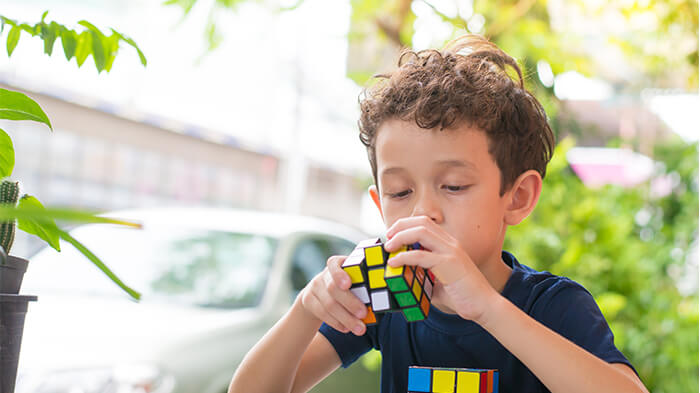
In this blog, we'll share the best problem-solving activities for kids to help you teach them effective problem-solving skills. Let's get started!
Easy & Fun Problem-Solving Activities for Kids
Easy problem-solving activities for kids can be a great way to make learning enjoyable and boost their confidence. Here are some of the most enjoyable critical thinking and problem-solving activities for kids.
1. MentalUP Learning Games
This is the ultimate app, offering hundreds of problem-solving activities for pre-K kids, middle and high school kids, and even adults! MentalUP provides its users with an engaging learning environment where they can test and expand their core cognitive skills.
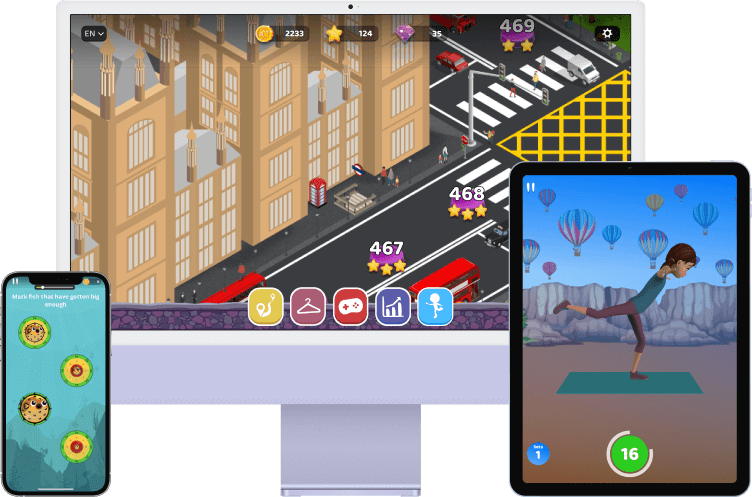
Scientifically designed by academicians, educators, and game developers, the app offers daily personalized brain training and exercise plans for individuals. These plans are filled with effective games, activities, and exercises tailored to their developmental needs.
Moreover, it comes with rich and detailed performance tracking features and modules, enabling users to access comprehensive information about their progress or their children's learning journey.
Take your child's critical thinking and problem-solving skills to the next level with MentalUP ! 👏
Packed with hundreds of problem-solving games for kids of all ages , MentalUP provides the ideal support for your child to enhance their concentration , visual intelligence , memory , critical thinking , and more, all while having fun. 🚀
Start using the app today and join over 10 million users who trust MentalUP for academic success and personal development ! 👪
2. Jigsaw Puzzles
Suitable for kids of all ages, Jigsaw Puzzles are one of the most functional problem-solving activities for kids. It can also enhance spatial reasoning, visual perception, memory , and concentration skills.

Jigsaw puzzles can be completed individually or in groups, and they are available in various levels of difficulty. When selecting a puzzle , be sure to choose the appropriate size and number of pieces based on your child’s age and ability.
3. Treasure Map
This is one of the best problem-solving activities for kids in groups. It can foster kids' creativity, imagination, collaboration, and navigation skills. Treasure maps can be done indoors or outdoors, and they can involve clues, riddles, or challenges.
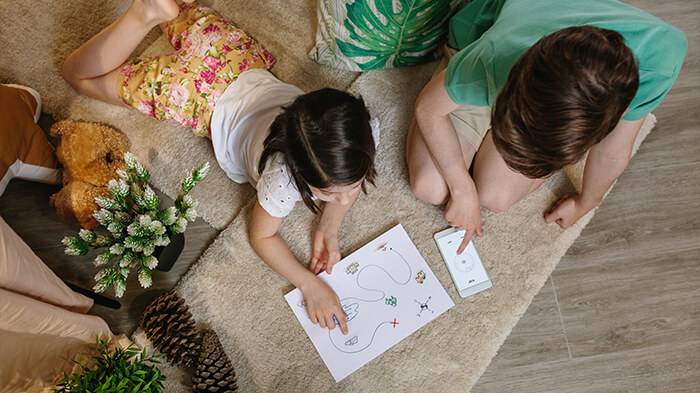
To create a treasure map, create a map of your location and then hide a treasure somewhere. Next, provide your kids with the map along with some hints to help them locate the treasure. For added excitement, consider introducing obstacles or surprises along the way.
4. Tic-Tac-Toe
Tic-Tac-Toe is one of the best puzzle problem-solving activities for kids. It helps children improve their problem-solving skills by developing logic, strategy, and foresight. It also teaches them about patterns, symmetry, and geometry .
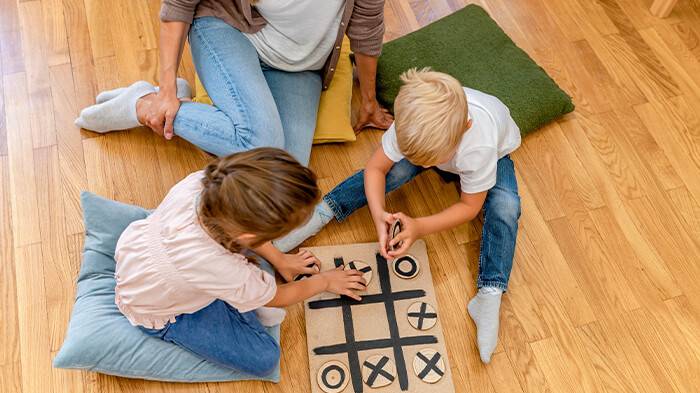
You'll need a 3x3 grid and two players, one using X and the other O. Take turns placing your mark in an empty square on the grid. The goal is to get three of your marks in a row horizontally, vertically, or diagonally. The first player to do so wins.
I Spy is a popular problem-solving activity that enhances observation, communication, vocabulary, and deduction skills, making it one of the best interactive problem-solving activities for kids.

To play I Spy, you need to choose an object that you can see and say, “I spy with my little eye something that…” followed by a clue about the object’s color, shape, size etc. Then you must let your child guess the object by asking yes or no questions. You can use this alternative as one of the best rainy day activities for kids .
Favorite Interactive Problem-Solving Activities for Kids
Interactive problem-solving activities for kids can enhance teamwork and communication skills, preparing children for success in both academic and real-life scenarios. Here are some of the best interactive and quick team-building activities for kids' problem-solving.
6. Monopoly Junior
If you're searching for board games that can be transformed into one of the most fun maths problem-solving activities for kids, you should check Monopoly Junior. It's a simplified version of the Monopoly, specifically designed for young children.
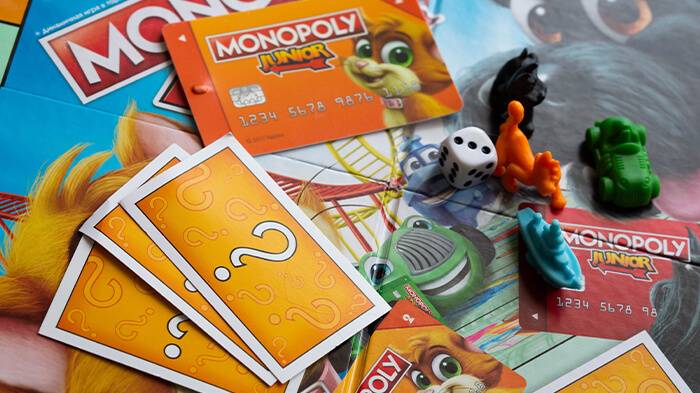
This fun board game can improve problem-solving skills by teaching participants how to manage money, make decisions, and plan ahead. It can also develop mathematical, economic, critical thinking, and social skills.
Need to boost your kids' problem-solving skills along with their math proficiency ? Look no further than MentalUP ! ✅
MentalUP offers not only cognitive development but also math games that enhance kids' numerical, counting, and visual attention skills. Plus, it's accessible anytime , anywhere , on any device . 💻📱
You can uncover your kids' potential and witness their learning journey with rich performance-tracking tools ! 📊
7. Scavenger Hunt
A scavenger hunt can enhance problem-solving skills by encouraging participants to think creatively, logically, and strategically. It can be an excellent choice if you're searching for problem-solving outdoor activities for kids.
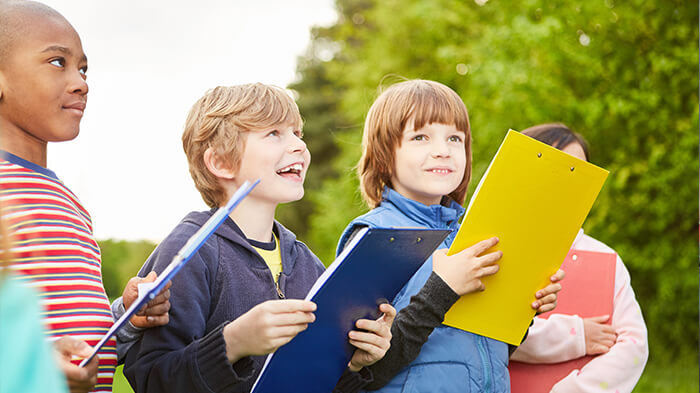
Suitable for kids of all ages, the game requires players to find or collect specific items or complete certain tasks from a list, typically within a specified time limit. You can enjoy playing it with your kids during trips or in your garden.
8. Human Knot
If you're searching for problem-solving games or activities for middle school kids, be sure to explore this game. It not only promotes problem-solving but also encourages communication, cooperation, leadership, and trust among the players.
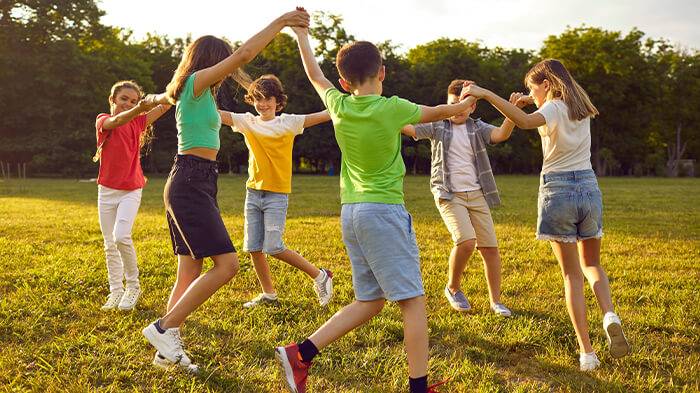
Human Knot is a team-building activity that requires the participants to form a circle, grab two opposite hands of other participants, and then untangle themselves without letting go of the hands. It can be played with 5 to 12 players.
9. Obstacle Courses
Participating in an obstacle course isn't just an excellent exercise for kids; it's also one of the best real-world problem-solving activities for kids. It can enhance their physical fitness , coordination , confidence, and resilience.
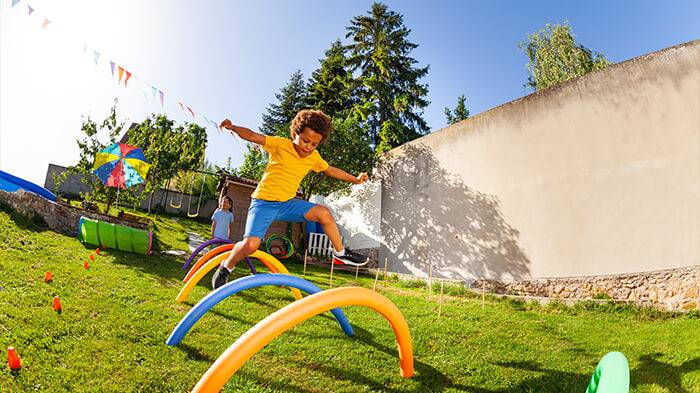
An obstacle course is a series of physical challenges that kids must overcome, typically within a timed context. You can customize it to your liking by incorporating obstacles that involve running, climbing, crawling, or balancing. Additionally, it is suitable for children of all ages.
10. Hedbanz
Hedbanz is a guessing game in which players wear a card on their headband displaying an animal, food, or object. Players must ask yes or no questions to determine what they are before the timer runs out. It is suitable for kids aged 7 and up and can be played with 2 to 6 players.
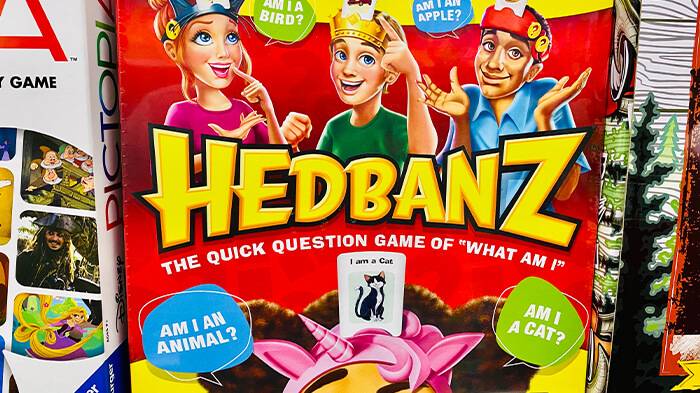
As one of the most entertaining problem-solving social skills activities for kids, this game improves problem-solving skills by stimulating participants' critical thinking, memory, and deduction abilities. It can also enhance vocabulary, language, and communication skills.
Top Creative Problem-Solving Activities for Kids
As we have assessed the most enjoyable and interactive problem-solving activities for kids, let's delve into activities that will encourage children to think outside the box and develop their imagination.
11. Move an Object
Moving an object is one of the most creative problem-solving activities for kids, capable of enhancing their creativity, flexibility, and motor skills. It is suitable for children aged 5 and up and can be played individually or in groups.

All you need to do is to ask your child to move the object from one place to another but with some restrictions on how to move it. For example, you might say, “You can only use your left hand”, or “You have to move it without touching it”.
MentalUP is here to nurture your child’s creativity and imagination with scientifically designed games ! 🎮
Hundreds of visual games , along with a colorful design and an adaptive learning experience , are all integrated into MentalUP to provide your child with personalized support on their educational journey. 🔥
You can discover MentalUP today to keep your child's mind active with an engaging learning platform suitable for kids of all ages . 💪
GET STARTED
12. The Alphabet Game
This is one of the best cooperative problem-solving activities for kids that improve their problem-solving skills by stimulating their vocabulary, memory, and creativity . It also enhances their spelling and writing skills.

To play this game, you will need a piece of paper, a pencil, and a timer. First, choose a category and write it down. Then, set the timer for one minute and try to write down as many words as you can that belong to that category and start with each letter of the alphabet.
13. Balloon Rocket Experiment
This is one of the most entertaining real-life problem-solving activities for kids that helps them improve their problem-solving skills by introducing the basic principles of physics and engineering. It also sparks their curiosity and interest in science.
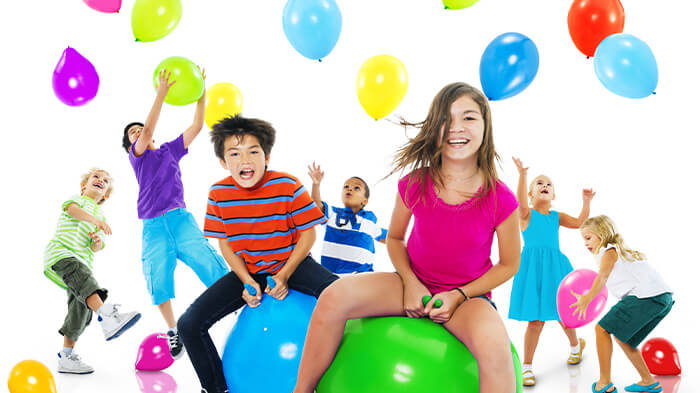
For this experiment, you'll need a balloon, a straw, string, tape, and two objects of the same height. Tie the string between the objects, thread it through the straw, and tape the balloon to the straw's middle. Inflate the balloon, release it, and watch it fly like a rocket!
14. Building Towers
This is one of the most fun problem-solving activities for kids aged 3 and up. Building towers can also enhance fine motor skills, hand-eye coordination , planning, and engineering skills.
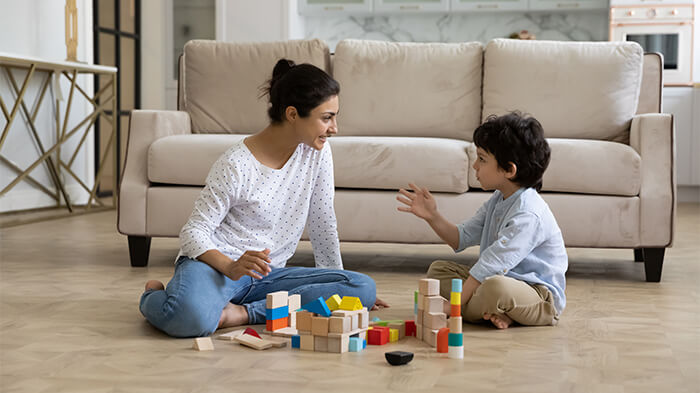
You can use any stackable materials like building blocks or LEGO bricks and challenge your child to build the tallest or most stable tower possible. Enhance the activity by adding constraints or variations to make it more challenging and fun.
How to Teach Kids Problem-Solving Skills: 5 Effective Strategies
From team problem-solving activities for kids to creative ones, we have explored a variety of activities for enhancing children's thinking and problem-solving skills. However, there are still a variety of ways to teach children about problem-solving.

Here are five effective ways to keep your children's minds active and help them use their problem-solving skills effectively.
1. Encourage Critical Thinking
Critical thinking helps children develop the ability to assess situations, consider various options, and make informed choices. To encourage this skill, pose open-ended questions that require them to think deeply and provide opportunities for them to solve problems with minimal guidance.
2. Educational Games
Using educational games from the best problem solving apps is a fun and effective way to teach problem-solving skills. These games present challenges that require players to use their problem-solving abilities, fostering critical thinking, logic, and decision-making in a relaxed, interactive environment.
Do you need a proven method to enhance your kids' thinking skills? Let’s meet MentalUP! 😇
The pedagogically approved educational games app MentalUP provides the most enjoyable and effective learning experience through 150+ brain training games. Additionally, it includes 240+ fitness exercises to keep them engaged and active physically. 🎉
So, why wait? You can explore this multi-awarded learning app and unlock your child's full potential. 🏆
MENTALUP BRAIN GAMES
3. Promote Creativity and Innovation
Creativity and innovation are vital for problem-solving. Encourage children to think outside the box, come up with new ideas, and explore unconventional solutions to problems. Provide them with opportunities to engage in creative activities like art, writing, or building projects.
4. Model Problem Solving
Children often learn by observing and imitating adults. To teach problem-solving skills effectively, demonstrate how to approach and solve problems in various situations. Share your thought process, talk about your decision-making, and show them how to break down complex problems into smaller, manageable steps.
5. Teach the Problem-Solving Process
Problem-solving is a systematic process. Teach children the steps involved in problem-solving, such as identifying the problem, brainstorming solutions, evaluating those solutions, selecting the best one, and implementing it.
The Importance of Critical Thinking and Problem-Solving Activities for Kids
Critical thinking and problem-solving skills are essential abilities that children need to develop from an early age. Here are compelling reasons why nurturing these skills through fun activities is essential:
- Encourages creativity and innovation.
- Enhances decision-making abilities.
- Build resilience in facing challenges.
- Fosters a love for learning.
- Promotes teamwork and collaboration.
- Improves adaptability to new situations.
- Boosts self-confidence and independence.
- Prepares them for real-world problem-solving.
- Develop analytical thinking skills.
- Makes learning enjoyable and engaging.
Frequently Asked Questions
If you still have questions about problem-solving skills in kids, here are the most commonly asked questions about the topic, along with their answers.
What are the 5 problem-solving skills?
The five problem-solving skills include critical thinking, creativity, decision-making, communication, and collaboration.
What are some examples of problem-solving skills in kids?
Examples of problem-solving skills in kids include finding alternative solutions to a conflict with a friend, inventing a new game using available resources, and figuring out how to complete a challenging puzzle.
What is problem-solving learning?
Problem-solving learning is an educational approach that focuses on developing students' abilities to analyze, strategize, and solve complex problems through active and experiential methods.
At what age do children begin problem-solving?
Children typically begin to develop problem-solving skills during early childhood, around the ages of 3 to 4, and continue to refine them throughout their developmental stages.
What are the potential challenges of teaching problem-solving to kids?
Potential challenges of teaching problem-solving to kids may include keeping their engagement and interest, adapting instruction to their developmental stage, and addressing individual learning differences.
What are the most common mistakes children make when solving problems?
Common mistakes children make when solving problems include impulsivity, limited perspective-taking, overlooking details, and struggling with frustration or giving up too quickly.
Whether you support your kids on their learning journey with puzzles or social problem-solving activities for kids, it's best to ensure that the context of the game is tailored to their needs and interests.
There's an effortless way to give your kids access to hundreds of age-appropriate and effective brain-training games – it's MentalUP! 🎵🏀🎨
Compatible with any device, MentalUP can be used both indoors and outdoors. What's more, the app includes no ads and is free from inappropriate content. ✨
You can cater to your child's educational and personal needs with this safe and effective learning app! It is time to use MentalUP now to accelerate your child's learning journey! 🎓
DOWNLOAD NOW
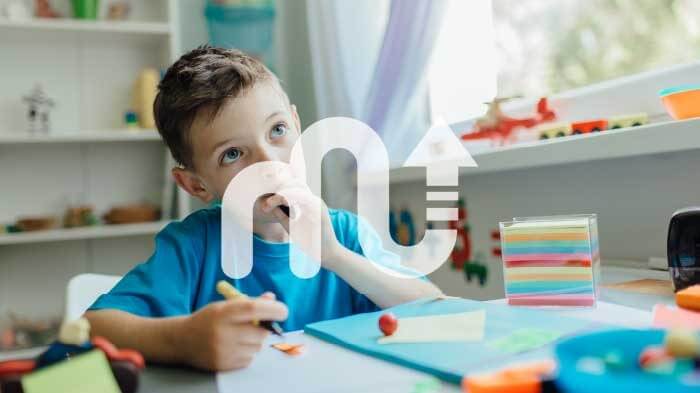
Critical Thinking Games & Activities for Kids
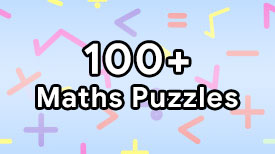
Math Puzzles with Answers to Boost Your Skills

Problem Solving Techniques: Methods with Examples

23 Best Games for Cognitive Development
Problem Solving for Kids: How-To Guide, Activities & Strategies
Children need to be able to solve their own problems. In daily life, kids face a lot of set of social circumstances and challenges. Whether they’re trying to figure out how to make friends, deal with bullies, or solve academic problems, they need strong problem-solving skills to be successful.
Problem-solving is a critical life skill that all kids need to learn. By teaching them how to identify and solve problems on their own, you’ll be setting them up for success in school and in life.
What are Social Problem-Solving Skills?
Social problem-solving skills are a skill set that involves behavioral and cognitive processes which allow an individual to find adaptive and positive ways of handling problematic situations that can arise in the social environment in our daily life. These skills comprise an understanding of emotions, empathy, self-awareness, prosocial behavior, anger management, perspective-taking, establishing positive relationships, and so on.
Why It’s Important for Children to Learn the Skills to Problem-Solve
Social problem-solving skills are important for kids to learn because they allow them to cope with the various challenges they face in their social environments, such as peer pressure, bullying, and exclusion from social groups. In addition, these skills can help them resolve conflicts effectively and build positive relationships with others.
How to teach Problem-Solving skills
There are many ways to develop social problem-solving skills in kids . One way is to provide them with opportunities to practice these skills through different activities and games.
There are a few key things that parents and educators can do to help kids develop strong problem-solving skills:
Teach Children to Identify the Problem
One of the most important steps in solving any problem is being able to accurately identify what the problem is. This can be tricky for kids, especially if they’re feeling emotional about the situation. Help them by teaching them how to take a step back and look at the problem objectively.
Help Kids Brainstorm Solutions
Once kids can identify the problem, it’s time to start brainstorming possible solutions. This is where creativity and out-of-the-box thinking come in handy. Encourage kids to think of as many possible solutions as they can, no matter how far-fetched they might seem.
Help Kids Weigh the Pros and Cons
After Children can come up with a few potential solutions, it’s time to help them figure out which one is the best option. This is where critical thinking comes in. Teach kids how to weigh the pros and cons of each solution and make a decision based on logic, not emotions.
Help Kids Implement the Solution
The final step is helping kids actually implement the solution they’ve chosen. This might involve role-playing different scenarios, practicing what they would say or do, or writing out a plan. Whatever the case, be sure to provide support and guidance every step of the way.
Praise Kids
It’s essential to praise your child when they demonstrate social problem-solving skills. This will help him feel confident in his abilities and encourage him to continue using these skills.
Also, proper guidance and opportunities to practice problem-solving skills should be provided for kids to be efficient enough to solve problems on their own. In addition to providing opportunities for practice, it is also important to model problem-solving skills for your child.
By following these tips, you can help your child develop strong social problem-solving skills that will serve him well throughout his life.
Problem-solving in Child Development
Most children go through similar phases of problem-solving as they develop. However, the timing may vary depending on the child’s individual temperament and circumstances.
Here are some common milestones:
- Ages 2-3: During the age of 2-3 years, kids begin to understand that problems can be solved. They also start to develop a sense of self-control and can begin to use words to express their emotions.
- Ages 3-4: By 3-4 years old, kids are usually better at problem-solving and can use more logical thinking. They’re also beginning to understand other people’s feelings and perspectives.
- Ages 4-5: Around 4-5 years old, kids can usually think of multiple solutions to a problem. They’re also starting to understand the concept of cause and effect.
- Ages 5-6: By 5-6 years old, most kids can apply problem-solving skills in their everyday lives. They’re also able to understand complex emotions and empathize with others.
- Ages 6-7: Around 6-7 years old, kids are usually able to understand even more complex emotions. They’re also starting to see the world from other people’s perspectives and can use this knowledge to solve problems.
- Ages 7-8: By 7-8 years old, kids are often able to solve problems quickly and efficiently. They’re also able to think abstractly and see the world from multiple perspectives.
- Ages 8-9: Around 8-9 years old, kids are usually able to solve problems independently. They’re also beginning to understand the concept of time and how it can be used to solve problems.
- Ages 9-10: By 9-10 years old, kids are often able to solve complex problems. They’re also able to think abstractly and see the world from multiple perspectives.
- Ages 10-11: Around 10-11 years old, kids are usually able to solve problems independently. They’re also beginning to understand the concept of time and how it can be used to solve problems.
- Ages 11-12: By 11-12 years old, kids are often able to solve complex problems. They’re also able to think abstractly and see the world from multiple perspectives.
- Ages 12-13: Around 12-13 years old, kids are usually able to solve problems independently. They’re also beginning to understand the concept of time and how it can be used to solve problems.
As children get older, they should be able to solve more complex problems. If you’re concerned about your child’s problem-solving abilities, talk to their doctor or a child development specialist.
Social Problem-Solving Strategies
There are several strategies that can help children of primary age to solve problems. Some of them are as follows:
- Encouraging children to take turns and share. This strategy helps children to be more patient and to understand that other people have feelings too. It also allows them to share their own feelings and thoughts more openly.
- Helping children to understand and express their emotions. This strategy helps children to identify and understand their own emotions , as well as the emotions of others. It also allows them to express their emotions in a more positive way.
- Teaching children how to compromise. This strategy helps children to understand that sometimes it is necessary to give up something in order to get something else. It also teaches them how to negotiate and how to reach an agreement with others.
- Encouraging children to think about other people’s perspectives. This strategy helps children to understand that other people have different points of view. It also allows them to see the world from another person’s perspective and to empathize with others.
- Helping children to understand and follow rules. This strategy helps children to understand that there are certain rules that must be followed in order to maintain order and peace. It also teaches them how to respect the rules of others.
- Teaching children how to improve their skills to problem-solve. This strategy helps children to understand that there are many ways to solve a problem. It also teaches them how to think creatively and to come up with their own solutions.
These are just a few of the social problem-solving strategies that can help children of primary age to solve problems. For more information, please talk to your child’s doctor or a child development specialist.
Social Problem-Solving Skills Activities
Games and activities for socialization are an excellent way for children for learning how to behave in social surroundings such as school or in the community.
It is essential for children to learn how to take turns, share, cooperate and resolve conflicts.
Here are some activities to improve social problem-solving skills for children of different age groups:
Social Problem-solving Activities for Preschoolers
Preschoolers are very young and need a lot of help to learn social problem-solving skills. The following activities are fun and will help them develop problem-solving skills.
- Circle Time: This is a great activity for kids to learn how to take turns and share. Give each child a turn to be in the center of the circle and share something about themselves such as their favorite color, food , animal, etc.
- Simon Says: This classic game is a great way for kids to listen and follow instructions. It also helps with problem-solving skills as they have to figure out what Simon is saying.
- Role-Playing: This is a great activity for kids to learn how to resolve conflicts. Have kids act out different scenarios such as sharing toys or taking turns. After each scene, discuss what happened and how the conflict could have been resolved.
Social Problem-solving Activities for Kindergarteners
Kindergarteners are still very young. So, they may need assistance when it comes to social problem-solving skills.
The following activities will give them a chance to practice these skills in a safe and fun environment.
- Cooperative Building: Have the kids work together in small groups to build towers or houses out of blocks or Legos. This activity will help them learn to share, take turns, and cooperate with others.
- Role-Playing: Act out different social situations with puppets or toys. For example, one child can be the customer in a store and the other children can take turns being the salesperson. This activity will help kids learn how to handle different social situations.
- Feelings Matching: Cut out pictures of people with different facial expressions from magazines or newspapers. Ask the kids to match the pictures with the corresponding feeling words (e.g., happy, sad, mad, etc.). This activity will help kids learn to identify and understand different emotions.
Social Problem-solving Activities for School-Aged Kids
As kids get older, they become more independent and are able to handle more complex social situations.
The following activities will help them practice their social problem-solving skills.
- Brainstorming: This activity can be done individually or in a group. Give your child a scenario and have them come up with as many solutions as possible. For example, “Your best friend just cancelled your play date. What are three things you could do?”
- Exercising empathy: It’s important for kids to be able to empathize with others and see things from their perspective. When they’re struggling to solve a problem, help them think about how the other person is feeling. For example, “Your friend might be feeling upset too. Maybe you can talk to her about why she cancelled the play date.
- Problem Solving Games: Games are a fun way to teach children the skills of solving problems. Try playing some classic board games like Chutes and Ladders or Candyland, which require players to make decisions and strategize. There are also many great online games, like Mission to Mars and Robot City, that help kids practice problem-solving.
- Discussing Problem-Solving Skills: As a family, discuss different problem-solving strategies. For example, “If you’re ever feeling overwhelmed or don’t know what to do, take a deep breath and think about what would be the best thing to do in that situation.”
- Model Good Problem-Solving Skills: As a parent, you are your child’s biggest role model. So, it’s important to model good problem-solving skills yourself. Whenever you’re faced with a problem, talk aloud about how you’re going to solve it. For example, “I’m having trouble finding my keys. I think I’ll check the couch first and then look in the car.”
- Encourage positive thinking: Help your child look on the bright side by encouraging them to think of the positive outcomes of a situation. For example, “Even though your play date was cancelled, you now have some free time to do something else you enjoy.
- Practice: It’s important to give kids opportunities to use their problem-solving skills in everyday life. When they’re faced with a social challenge, take a step back and let them try to figure it out on their own. Of course, be there to support them if they need help.
Social Problem-solving Activities for High-School Students
High-school students often face a variety of social problems. They may have difficulty making friends, fitting in with classmates, or dealing with bullies.
Some students may also struggle with more serious issues, such as gangs, drugs, or violence.
There are a number of activities that can be used to help high-school students with improving their social problem-solving skills. These are as follows:
- Peer Mediation: This activity involves two or more students who are in conflict with each other. The mediator(s) helps the students to communicate with each other and find a resolution to the problem.
- Role-Playing: This is a great activity for helping high-school students to understand different perspectives. Students can take on the role of the person they are in conflict with, and then discuss how they would feel in that situation.
- Problem-Solving Groups: These groups usually consist of 4-6 students who meet to discuss a particular problem. The group leader(s) helps the students to brainstorm solutions and come up with a plan of action.
- Attending Debates: Debates can be a great way for high-school students to learn about different perspectives on social issues. Students can also practice their own argumentative and problem-solving skills by participating in debates.
- Service Learning: This is a type of community service that helps high-school students to understand and address social problems. Students typically work with organizations that focus on issues such as poverty, homelessness, or hunger.
Cultivating Resilience in Children
Developing resilience in children is a key aspect of nurturing their emotional health and equipping them to face life’s challenges head-on. It involves helping them understand that difficulties and setbacks are a normal part of life, and they can grow stronger from overcoming them.
By fostering a secure and loving environment, and by being role models of resilience ourselves, we can instill in children the ability to adapt to change and cope with stress.
One effective method to cultivate resilience in children is by encouraging them to express their feelings and thoughts openly.
Providing a safe space where they feel heard and understood helps them to understand their emotions better, which is a crucial step in resilience building. It’s important to validate their feelings, not minimize them, as it teaches them that it’s normal to experience different emotions, and it’s okay to discuss them.
Another significant way to build resilience is by teaching problem-solving skills. Guiding children through the process of identifying a problem, brainstorming possible solutions, choosing the best one, and reflecting on the outcome can equip them with valuable life skills.
As they practice, they will become more adept at facing challenges, whether big or small, and this boosts their confidence and self-efficacy. The beauty of resilience is that it isn’t an inherent trait; it’s a skill that can be learned and cultivated, one challenge at a time.
Teaching social problem-solving skills can help high-school students learn how to handle these types of situations. These skills can also help them in other areas of their lives, such as dealing with family conflict or managing their emotions.
Through these activities, high-school students can learn important problem-solving skills that will help them in their everyday lives.
There are many different activities that you can do to help your child develop problem-solving skills. Choose activities that are appropriate for your child’s age and interests.
And, most importantly, have fun!
Tips, D. (2022). Developing Problem-Solving Skills for Kids | Strategies & Tips | Kodable Blog. Retrieved 6 June 2022, from https://www.kodable.com/learn/problem-solving-skills-for-kids/
How to Teach Problem-Solving Skills to Children and Preteens. (2022). Retrieved 6 June 2022, from https://biglifejournal.com/blogs/blog/how-teach-problem-solving-strategies-kids-guide#:~:text=Allow%20your%20child%20to%20choose,the%20process%20of%20problem%2Dsolving .
Teaching Kids How to Solve Their Own Problems and Make Good Decisions. (2022). Retrieved 6 June 2022, from https://www.verywellfamily.com/teach-kids-problem-solving-skills-1095015
(2022). Retrieved 6 June 2022, from https://www.werockthespectrumkidsgym.com/social-skills-activities-that-teach-kids-problem-solving/
srivastava, m., & srivastava, m. (2022). 12 Problem-Solving Activities For Toddlers And Preschoolers. Retrieved 6 June 2022, from https://www.momjunction.com/articles/problem-solving-activities-for-toddlers_00795607/
20 Evidence-Based Social Skills Activities and Games for Kids. (2022). Retrieved 6 June 2022, from https://www.positiveaction.net/blog/social-skills-activities-and-games-for-kids
The ReadyKids App is an innovative platform that makes Occupational Therapy affordable, accessible, and fun.
With daily resource recommendations, this intuitive app combines efficacy and fun in children's therapy.
- Developed By Registered Occupational Therapists
- New Resources Released Weekly
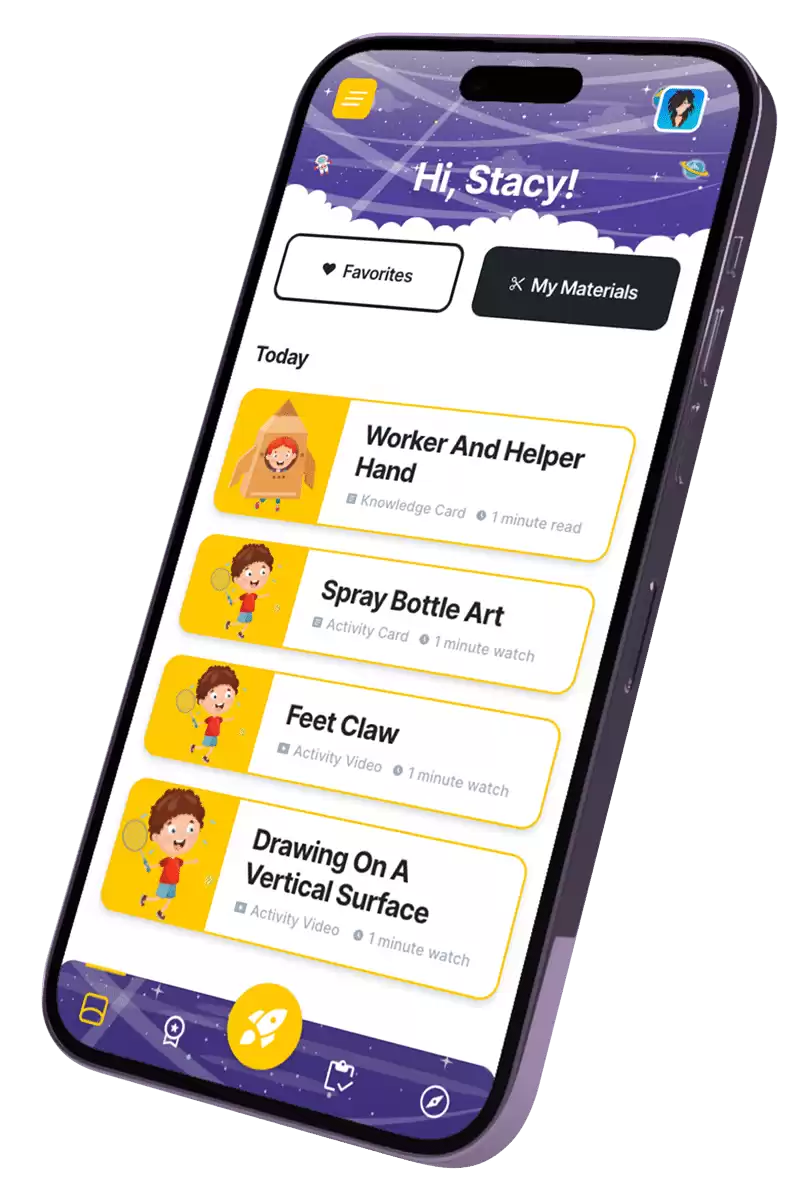
Share This Post
More To Explore

What Are Social Stories? (Benefits for Children with Autism)

Fun & Educational Tongue Twisters for Kids – Improve Speech Skills

Educational Guide: How to Get Slime Out of Clothes – Occupational Therapy Tips

11 Best Visual Timers for Kids With Autism
Sign up to our.
2 Week Parent Support Program
Calling all overwhelmed parents of children with additional needs! Our two-week Parent Support Program is here to provide you with the tools and support you need. Don’t wait, give your child the exceptional care they deserve. Enrol in our program now!
- 1:1 session with a Registered OT (Valued @ $110)
- Interactive Q & A Session (Valued @ $193)
- Access to VIP Community (Can't be valued)
- Customised 2-week plan (Valued @ $110)
Total Value of $413
Today's Price: FREE
Still Need Help?
The readykids app helps kids develop skills at home.
The Importance of Problem Solving and How to Teach it to Kids
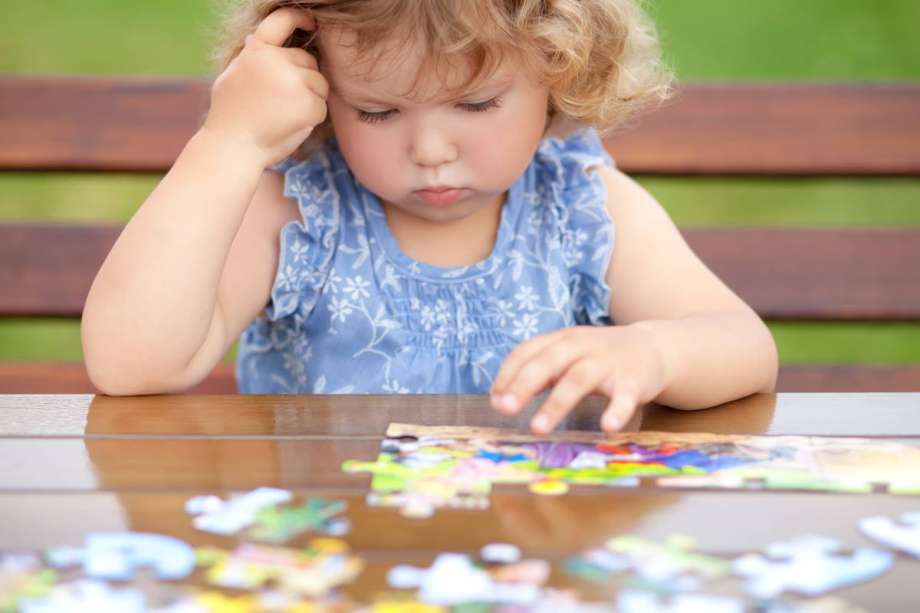
FamilyEducation Editorial Staff
Teach your kids to be brilliant problem solvers so they can shine.
We get so lost as parents with all the demands to do more for our children—get better grades, excel at extracurricular activities, have good relationships—that we may be overlooking one of the essential skills they need: problem-solving.
More: A Parent’s Guide to Conscious Discipline
In a Harvard Business Review study about the skills that influence a leader's success, problem-solving ranked third out of 16.
Whether you want your child to get into an Ivy League school, have great relationships, or to be able to take care of the thousands of frustrating tasks that come with adulting, don't miss this significant super-power that helps them succeed.
Our kids face challenges daily when it comes to navigating sibling conflict, a tough math question, or negative peer pressure. Our job as parents or teachers is not to solve everything for them —it is to teach them how to solve things themselves. Using their brains in this way is the crucial ability needed to become confident, smart, and successful individuals.
And the bonus for you is this: instead of giving up or getting frustrated when they encounter a challenge, kids with problem-solving skills manage their emotions, think creatively and learn persistence.
With my children (I have eight), they often pushed back on me for turning the situation back on them to solve, but with some gentle nudging, the application of many tools, and some intriguing conversations, my kids are unbeatable.
Here are some of the best, research-based practices to help your child learn problem-solving so they can build smarter brains and shine in the world:
Don’t have time to read now? Pin it for later:
1. Model Effective Problem-Solving

When you encounter a challenge, think out loud about your mental processes to solve difficulties. Showing your children how you address issues can be done numerous times a day with the tangible and intangible obstacles we all face.
2. Ask for Advice
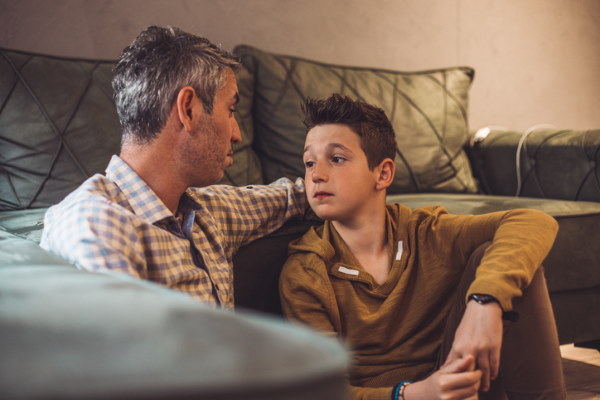
Ask your kids for advice when you are struggling with something. Your authenticity teaches them that it's common to make mistakes and face challenges.
When you let them know that their ideas are valued, they'll gain the confidence to attempt solving problems on their own.
3. Don't Provide The Answer—Ask More Questions
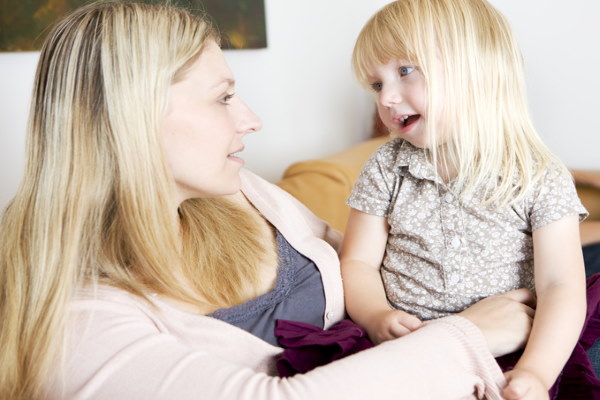
By not providing a solution, you are helping them to strengthen their mental muscles to come up with their ideas.
At the same time, the task may be too big for them to cognitively understand. Break it down into small steps, and either offer multiple solutions from which they can choose, or ask them leading questions that help them reach the answers themselves.
4. Be Open-Minded

This particular point is critical in building healthy relationships. Reliable partners can hold their values and opinions while also seeing the other's perspective. And then integrate disparate views into a solution.
Teach them to continually ask, "What is left out of my understanding here?"
High-performing teams in business strive for diversity—new points of view and fresh perspectives to allow for more creative solutions. Children need to be able to assess a problem outside of immediate, apparent details, and be open to taking risks to find a better, more innovative approach. Be willing to take on a new perspective.
5. Go Out and Play

It may seem counter-intuitive, but problems get solved during play according to research.
See why independent play is vital for raising empowered children here .
Have you ever banged around an idea in your head with no solution? If so, it's time to get out of your mind and out to play.
Tech companies understand this strategy (I know, I worked at one), by supplying refreshing snacks and ping pong tables and napping pods. And while they have deadlines to meet, they don't micromanage the thinking of their employees.
Offer many activities that will take your child’s mind off of the problem so they can refuel and approach things from a fresh perspective.
Let them see you fail, learn, and try again. Show your child a willingness to make mistakes. When they are solving something, as tricky as it may be, allow your child to struggle, sometimes fail and ultimately learn from experiencing consequences.
Problems are a part of life. They grow us to reach our highest potential. Every problem is there not to make your child miserable, but to lead them closer to their dreams.
Tami Green, America’s most respected life coach, has received magical endorsements by experts from Baylor University and the past president of the American Psychiatric Association. She received her coaching certification from Oprah's enchanting life coach, Dr. Martha Beck. She is a brilliant coach who has helped thousands achieve an exhilarated life through her coaching, classes, and conferences. To see more tips like these, visit her website and join her self-help community here .
About FamilyEducation's Editorial Team
Join the family.
Your partner in parenting from baby name inspiration to college planning.
- Health Topics & Resources (current)
- Why Find a Psychologist? (current)
- Finding the Best Fit (current)
- About (current)
8 Steps to Help Your Child Learn Problem Solving Skills
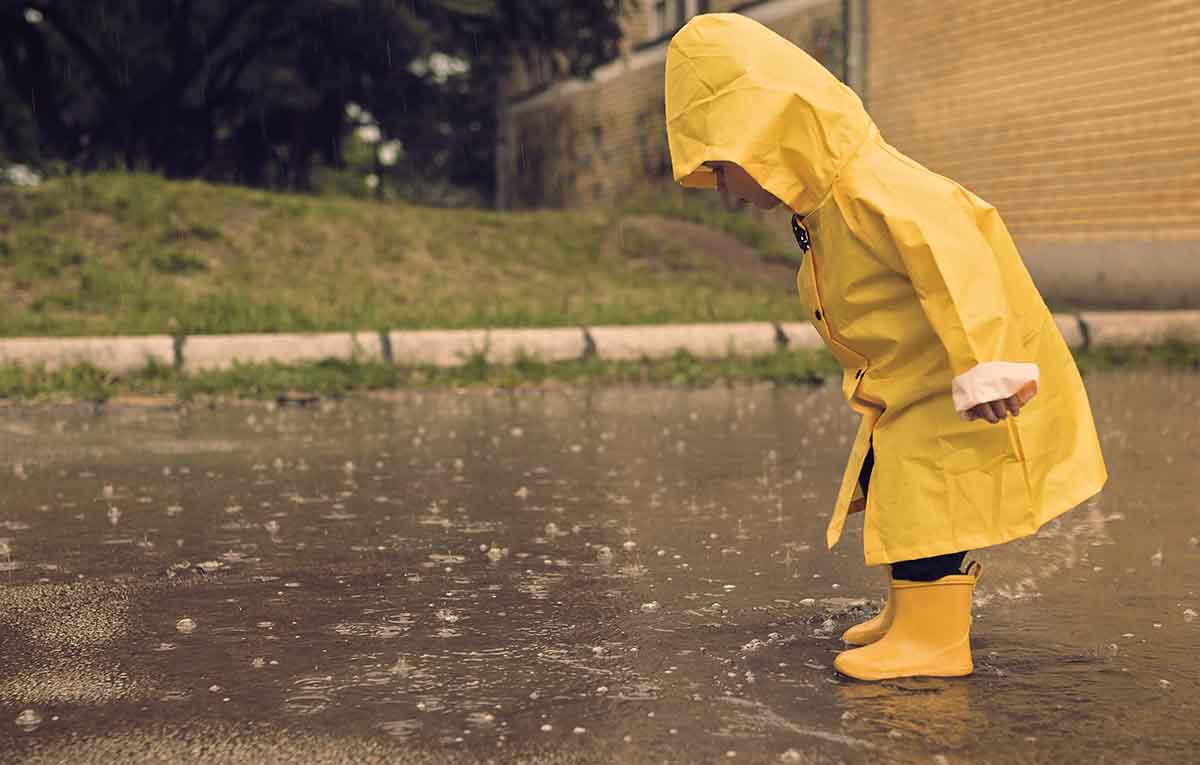
This article, written by Jennifer Wendt, PhD, was originally published on TherapyChanges.com and is being shared on FindaPsychologist.org with permission from Therapy Changes.
As adults we solve problems all throughout the day, from minimal to major problems. We are called upon to make decisions and find solutions to problems occurring in our homes, jobs, relationships, health, etc. The list is endless! Many problems we fix are common and we have learned a variety of solutions to use without much thought. Problems that are novel or larger may require us to pause and actively use our problem solving skills.
One of the most exciting moments is to witness a child learning to solve his or her own problems! The moment when a child spits out a pacifier and instead of crying, she reaches out her hand to search for it and places it back in her mouth. A toddler stands up, notices his feet feel funny and then switches his shoes to be on the correct feet. An 8 year old runs upstairs to grab a jacket because the weather is colder than she thought. A 12 year old realizes he has been unkind to a peer and makes up for it by inviting him to join his friends at lunch. While doing homework, a 15 year old studies for his math test first because he felt terrible after getting a C on his last test. An 18 year old decides to not ride in a car with her friend because she is driving without a license.
Children are faced with decisions and learning opportunities every day during every stage of life. One of the best things we can do is to nurture these opportunities and encourage them to solve problems on their own. As parents, we routinely rise to our responsibilities as provider and protector of our children. It often takes a conscious effort for a parent to step back from their provider instinct and allow the child to find a solution to a problem at hand. For example, it is much easier and faster to help a child turn the sleeves of their jacket right side out then to patiently watch them struggle to figure it out on their own. Another example may be when a parent asks a high school teacher to include him in class emails regarding assignments so he can monitor his 16 year old’s progress. Although the intentions are to protect and help our children, when we solve the problem for them, we deny them the opportunity to figure it out themselves.
Here are 8 steps to help your child learn problem solving skills:
1) Encourage Creativity Allow children and adolescents to think outside of the box and try new ideas. Encourage young children to play creatively with objects they find or plain wooden blocks, while encouraging older children to explore new ideas with their imagination.
2) Have Patience Recognize those moments when you can spend a few extra minutes allowing a child to solve a problem on their own rather than quickly solving it for them.
3) Play Problem Solving Games Games are for all ages and not just for young children: from hide-and-go-seek to capture the flag.
4) Model Think out loud and let your children listen to you solve a problem. Demonstrate how you are working to find a solution.
5) Allow Them to Fail As tough as it is, allowing your child to fail provides an amazing learning opportunity. It also provides the message that it’s ok to make mistakes.
6) Ask for Their Help Ask your children for help making decisions or solving a problem. It’s remarkable to hear the possibilities they can come up with.
7) Propose Multiple Possibilities Offering a variety of possible answers to solve a problem can help to get the ball rolling. It encourages a child to consider multiple options and to project possible outcomes.
8) Praise Their Efforts vs. the Result As humans, we do not magically solve every problem the right way, nor is there one solution to a problem. Praise a child for their efforts & when there is success you can highlight the result!
“I can see how hard you are working to figure this out!”
“You really put a lot of effort into this!”
“I bet you are glad you didn’t give up. You’re determination helped you solve the problem!”
“I knew you could figure it out!”
“I can imagine how good you must feel about completing this.”
Learning to solve problems is an essential life skill. Strengthening these skills not only allows children to gain independence and self-confidence, it also primes them for success in academic learning, leadership, social relationships, athletics, finances, health, leisure skills and all other areas of life.
Articles related to this topic
The 3 (not-so-easy) steps for increasing motivation in your child, setting healthy family boundaries, the decision to be child-free, achieving “parenting flow”, search for a psychologist.
Search our database of licensed psychologists verified by the National Register to meet higher care standards.
Or Try a Guided Search
Go through a step-by-step search experience to access our database and explore your options.
- Skip to main content
- Skip to primary sidebar
- Search this website
Play to Learn Preschool
A delightful preschool experience
This post may contain affiliate links. See Disclosure for more information.
How to Teach Problem Solving
Teachers hear it constantly. Parents hear it every day.
“I’m thirsty.”
“he took my toy.”, “i have to go to the bathroom.”, “my pencil’s broken.”, “i can’t find my socks.”, “she won’t play with me.”.
Children constantly state their problems. From an early age, they are wired to notice things around them.
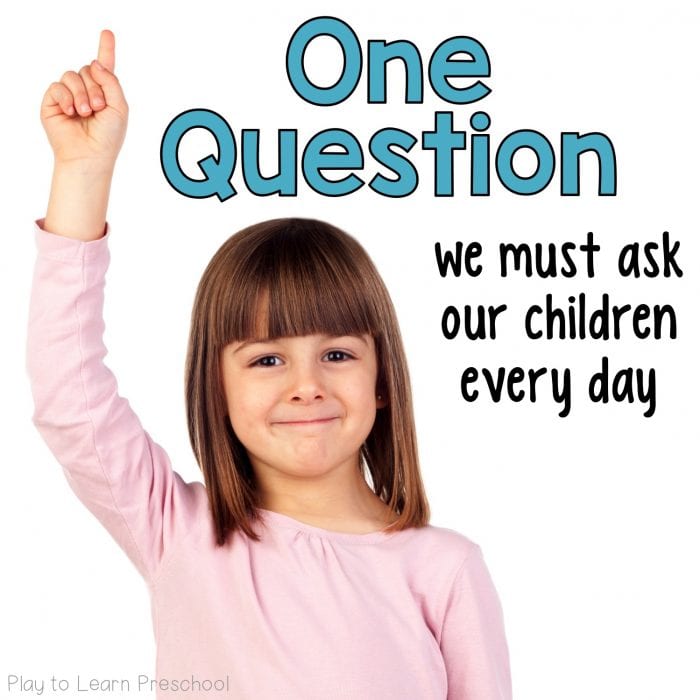
It is SO tempting to respond to their statements with a solution, right? They state the problem; we give a solution.
The child says, “ I’m hungry. ” The adult responds, “ Here’s a snack. ”
The child says, “ he pushed me, ” and the adult responds, “ keep your hands to yourself. ”, the child says, “ i’m cold, ” and the adult hands over a jacket ..
The difficulty with these types of verbal transactions is that we favor solving an immediate need over teaching children to become thinkers , doers , and problem-solvers . We are just trying to get through this day, this class, this minute. We can sometimes forget that these minutes add up. These minutes shape our children and their futures every single day.
Let’s start with the end-game in mind.
Think BIG PICTURE . What do we want for our children?
We hopefully want our young children to grow up to be independent , successful , and productive members of society. We want them to be inventors , innovators , and creators . We need them to be able to solve world problems that haven’t even been created yet.
And so, even though it seems like light years in the future, we have to build the foundation for problem-solving NOW , while they are young. It is our responsibility to develop the pathways for creative thinking and problem-solving in their brains NOW .
When children state a problem as fact, they are not necessarily asking us to solve it for them. (And if they are, it’s our job to guide them through the steps to solving it themselves.)
That is why it is crucial that we ask this most important question every single day:
How are you going to solve that problem?
When a child in our classroom (or in our home) says, “ She knocked down my block tower ,” we have to ask the most important question:
“How are you going to solve that problem?”
When the child says, “ I can’t reach the paper ,” we respond:
“What are you going to do to solve that problem?”
When the child announces, “ My boots are muddy ,” we inquire:
“How did that happen?” or “What can we do about that?”
There are dozens of variations of this question:
What are you going to do next?
How did that happen?
How can we fix this?
What’s the solution to this problem?
Who’s going to take the next step?
The message to the child is the same:
You are capable.
You are a thinker.
You are smart.
You can figure this out.
You are a problem-solver.
You’ve got it!
Problem-Solving Example:
When our children spill their milk at snack time, resist the urge to jump up and grab a towel. Maybe the child exclaims, “I spilled!” Maybe the child just sits there and stares at the puddle. Either way, encourage them to work through it like this:
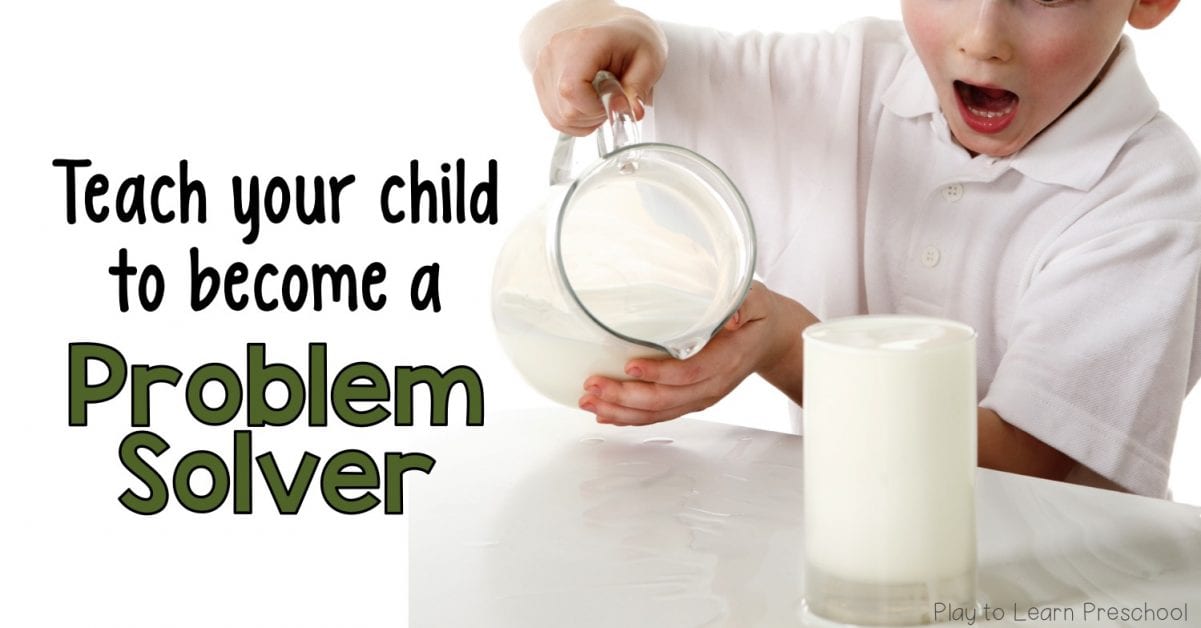
Notice the problem if they don’t say anything: “ Oh! You spilled your milk. ”
And if they still sit and stare, continue: “That’s a mess. What are we going to do to fix it? ”
And if they still stare (especially at the beginning of the year before they’ve learned the routine), guide them through the process:
“What could we use to clean this up?” or
“Where could you go to find a paper towel?”
By “answering” their problems this way, we prompt them to think for themselves and to start solving their own problems. We are fostering independence. We are building the foundation that they need to be successful humans. We are making the future world a better place.
Have you heard the saying:
“ Give a man a fish and he will eat for a day . Teach a man to fish and he will eat for a lifetime ”?
I offer this variation:
“Give a child a solution and he will get through the day.
Teach the child to solve, and he will get through a lifetime.”.
Keep doing amazing things with your children! Our work is so important.
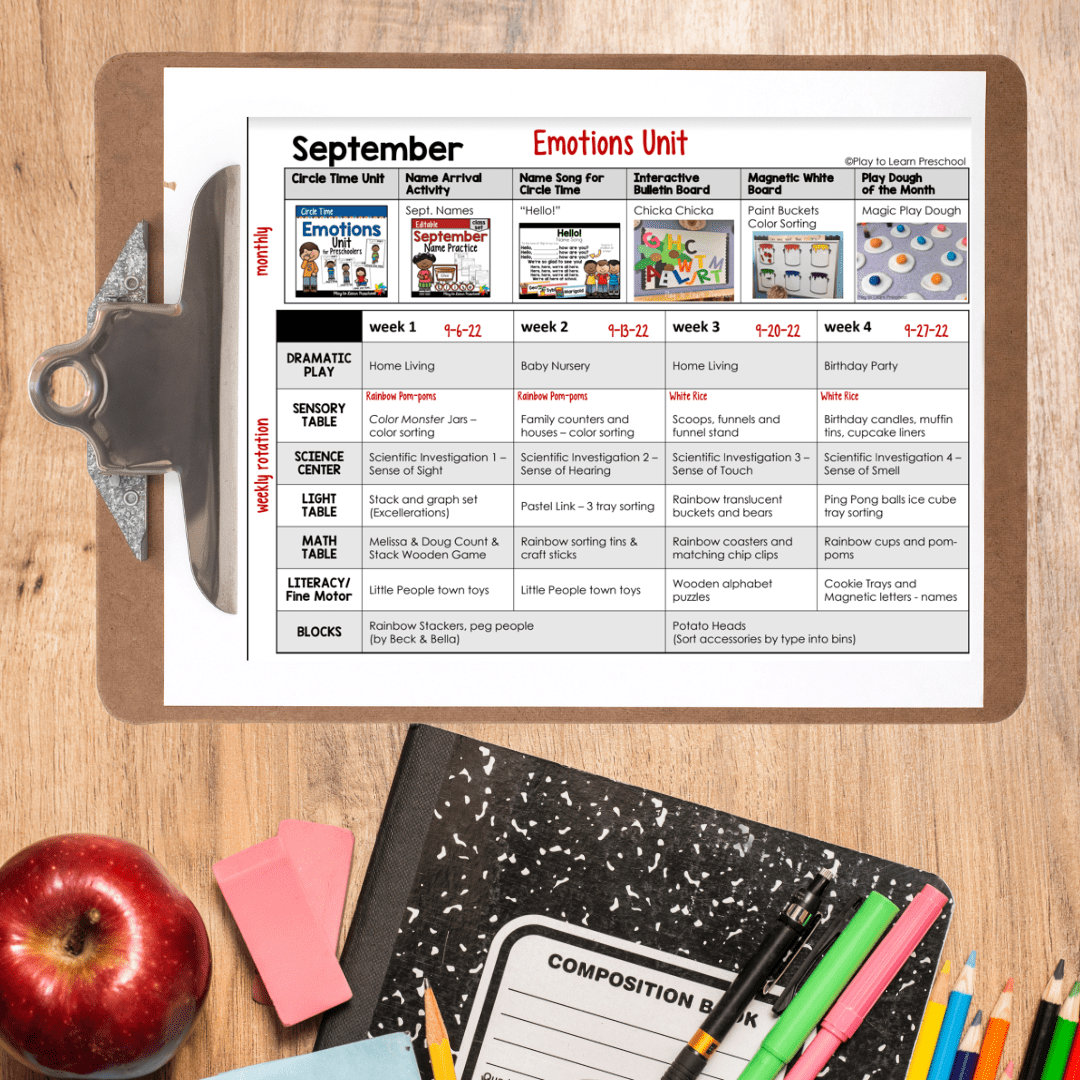
FREE Scope And Sequence!
After you subscribe, you will be redirected to the FREE Scope and Sequence. We respect your privacy. Unsubscribe at any time.
You May Also Enjoy These Posts

Reader Interactions
July 10, 2017 at 3:48 pm
YES! YES! I say these things all the time to my preschooler. Even older kids can benefit from them!!
I think it also helps kids to learn to take responsibility for their actions when we ask, “What can YOU do about it?” This is a skill that’s missing for many adults. 😉
August 1, 2017 at 1:19 am
I couldn’t agree more! I’m also a preschool teacher and I ask my students questions like this as much as possible. Nice article!
- How To Get Pregnant
- Infertility
- Pregnancy Week by Week
- Second Pregnancy
- Giving Birth
- Post Pregnancy
- Breastfeeding
- Development
- Play & Activities
- Coloring Pages
- Food & Nutrition
- Health & Fitness
- Style & Beauty Care
- Collaborations
- New Parents
- Single Parenting
- Relationships
- Baby Eye Color Calculator
- Online Pregnancy Test
- Chinese Gender Predictor
- Implantation Calculator
- hCG Calculator
- Period Calculator
- ovulation calculator
- pregnancy due date calculator
- Child Height Predictor
- Pregnancy Weight Gain Calculator
- Breast Milk Calculator
- Child Growth Percentile Calculator
- Baby Cost Calculator
- BMI Calculator For Kids & Teens
- Contraction Calculator
- Immunization Scheduler and Chart
- C-Section Checklist
- Online Twin Pregnancy Quiz
- Numerology calculator
- Child Blood Type Calculator
- Nakshatra Calculator
- Diaper Bag Checklist
- Baby Name Combiner
Home • Kid • Development
15 Fun Activities To Teach Problem Solving To Kids
Problem-solving skills help children efficiently manage difficult moments in their lives.
Dr. Maymunah Yusuf Kadiri, popularly referred to as ‘The Celebrity Shrink,’ is an award-winning neuro-psychiatrist and mental health advocate with over 15 years experience.She is the medical director and psychiatrist-in-chief at Pinnacle Medical Services. Read full bio of Dr. Maymunah Yusuf Kadiri
Advaitaa is a digital marketing and content writing specialist with around seven years of experience. She’s worked on a variety of genres including travel, fashion, beauty, lifestyle, and health and wellness. For MomJunction, she writes on kids’ activities, learning and development. Read full bio of Advaitaa Ravi
Harshita is a graduate in commerce and holds a PG Diploma in Patent and Copyrights Law from NALSAR University. She has also pursued CA and has more than three years of internship experience in auditing. Her love for travelling has taken her to various parts of the world, and writing the travelogues was what brought out her love for content writing. Read full bio of Harshita Makvana
Nisha Bharatan is a writer with six years of experience. After completing her engineering from Savitribai Phule Pune University, she did content marketing courses to complement her interest in writing. Nisha discovered her passion for writing in 2016 when she started documenting her journey into motherhood. Read full bio of Nisha Bharatan
MomJunction believes in providing reliable, research-backed information to you. As per our strong editorial policy requirements, we base our health articles on references (citations) taken from authority sites, international journals, and research studies. However, if you find any incongruencies, feel free to write to us .
Image: Shutterstock
Children receive numerous opportunities to learn about the world as they get older. However, they also regularly encounter problems, whether it is peer pressure, difficult arithmetic calculations, or disagreements with their peers. The benefits of problem-solving skills for kids are numerous and can help them effectively deal with such situations.
They will learn to find practical solutions independently without relying on an adult. Further, when they encounter difficulties, they will be more confident in their ability to employ their problem-solving skills and develop innovative solutions on their own.
Read this post to know the importance of problem-solving abilities for children, how to inculcate this skill in them, and for some exercises to help them develop this essential skill.
Importance Of Problem-Solving Skills For Kids
Problem-solving benefits children in numerous ways. It helps them
- Cope with challenges in everyday life.
- Make effective decisions.
- Pick up other skills, such as cooperation, critical thinking, and collaboration along the way.
- Resolve problems without breaking them down.
- Think outside the box.
- Become more independent.
How To Inculcate Problem-Solving Skills In Children
Here are a few ways to encourage your child to utilize their problem-solving skills.
1. Test it out
Whenever your child encounters a problem, ask them to acknowledge it and embrace the challenge. It will help hone their analytical and reasoning skills. If the outcome is ineffective, they can try different brainstorming approaches to find a practical and effective solution. It will nudge your child’s creativity and encourage them to look at problems from different angles.
2. Ask for advice
Sometimes, you may struggle to make decisions in your everyday life. For instance, you might struggle to decide what to cook for dinner or what to wear to the movies. Ask your children to help you make these simple decisions. When you ask them for their advice, it teaches them that they’re not the only ones who face problems. When you value their ideas, it will give them the confidence to solve problems independently. Besides, it will churn their thinking and analyzing skills, which will eventually help them in decision making.
3. Take a deep breath
One of the first steps to effective problem solving is remaining calm. Even with youngsters, when their emotions go out of hand, it’s difficult to look at things rationally, and the tendency to make impulsive decisions becomes higher. It’s important to teach your child to take deep breaths every time they feel they’re losing control of their emotions . Once they’re calm, they can assess the situation better.
4. Verbalize the problem
It would help your child if they verbally express how they feel and what they’re struggling with after calming down. It helps them gain perspective and makes it easier for them to come up with potential solutions.
5. Don’t provide “the answer”
While it’s difficult to watch your children struggle with an issue, do not give them the answer outright. Instead, give them hints to help them solve the problem independently. This way, they can learn to come up with creative solutions independently, using their logic and creativity.
6. Lead by example
Children are like sponges and pick up things very quickly. So, when you confront a problem and come up with an effective solution, they’ll notice how you address issues and try to emulate you.
7. Allow natural consequences to unfold
Sometimes, letting the problem run its course is the best way to deal with it. So, when your child is faced with a problem, let them be. Let’s suppose your child spent all their weekly allowance in a day or two; let them go the entire week without allowance. This will set them up to make better choices in the future.
15 Problem-Solving Activities For Kids
There’s no better way to learn than through play. The following activities are quite fun and require children to display their problem-solving skills.
One of the best problem-solving activities for children is puzzles. They come in various difficulty levels. Based on your child’s age, you can pick the appropriate one. Give them a puzzle, and they will learn to analyze the problem/question, find different ways of solving it, and arrive at the solution .
Additionally, the activity will help improve their critical-thinking skills, gross motor skills, and hand-eye coordination.
2. Scavenger hunt
One of the educational activities that every parent should introduce to their children is scavenger hunt. It is an inexpensive, easy, fun activity that can be done both indoors and outdoors and requires nothing more than the items you already have at home. The activity allows children to think outside the box. Without being aware, they’re learning problem-solving in a fun way, using their exploration skills.
Korbalagae, a former preschool through grade one teacher, shares an exciting idea for a problem-solving scavenger hunt. She narrates, “One of my favorite low prep lessons was the gingerbread man. I mostly needed buy-in from my colleagues and some cookie dough. Once we had read the book, I would have my students make gingerbread cookies, but as in the stories, ours would go missing.
“Our head cook, Mr Patrice, came to give us some terrible news that our cookies had disappeared when he went to look in the oven. This started our problem-solving. We had to figure out where our cookies had gone and how to get them back… We then had to come up with a plan of how to find them and where to look… My students had a chance to solve a problem. We had different theories of how our cookies went missing and where they could be, and for each idea, we examined it as a group. What was always wonderful to see was how one student’s idea would be picked up by another student and expanded upon ( i ).”
3. Storybooks
Reading offers a plethora of benefits. One of them is problem-solving. When children read stories, they come across various characters and the roles they play. Most often, children get attached to these characters. So, when they come across a problem, ask them how their favorite character would have solved it. Encourage them to come up with a variety of solutions and discuss the possible outcomes of each.
Engaging them in arts and crafts is another excellent way to teach children problem-solving skills. Give your child a variety of materials lying around the house and let them unleash their imagination. Let them come up with all sorts of exciting creations or repair broken toys or gadgets. Allow them to work independently, and guide them only when they are out of ideas.
5. Open-ended questions
Asking open-ended questions is an excellent way to improve your child’s ability to think creatively and critically and improve their problem-solving skills . With these questions, there’s no right or wrong answer, and the answer goes beyond a simple ‘no’ or ‘yes.’ They have to put some thought into their answers. Here are a few questions you can ask after each session.
- What was difficult? What was easy?
- What did you learn?
- What do you think will happen next?
- How did you arrive at the solution?
- What would you do differently the next time?
Mazes are fun and safe for all age groups. When they work on mazes, it makes them think. The activity also improves their motor skills, observational skills, sense of direction, and problem-solving skills. Think beyond book mazes – you can find many maze games on the web. With practice, they’ll get better at finding their way out. Eventually, you can give them more complex mazes to solve, which help enhance their problem resolution skills.
7. Mini treasure hunt
Treasure hunt is one game that can get the entire family involved. You can keep their minds at work, especially if they know they’re going to win something in the end. Give them clues that encourage them to think outside the box and use their problem analysis skills to find the treasure in the end. Here are a few hints you could use to let them find the treasure:
- My job is to put an end to your sleep. I do so with a beep, buzz, or music. (Ans: alarm clock)
- I don’t have a face or arms, but I have hands that move at a steady pace. (Ans: Clock)
- I’m filled with soft feathers, and it’s quite impossible for you to sleep without me. (Ans: Pillow/blanket)
- Use me to clean your car in a jiffy or to give plants a drink. (Ans: Water hose)
8. Building with toys
Give your children LEGO blocks, wooden blocks, engineering blocks, etc., and make them build whatever they wish. Building with toys provides ample experimentation opportunities that require children to think and develop creative solutions to ensure a functional design. You can once, in a way, ask them to build something challenging, such as a creature with three arms or two towers with a joining bridge. Watch them rack their brains as they try to come up with a structure.
9. Wool web
Give the children a multi-colored yarn and ask them to stand in a circle. One person loops the ball of yarn across a finger and passes it to another person. Once every person gets a chance to hold the ball and loop the yarn across their finger, a web would be created.
Now, blindfold one member and ask them to follow the verbal instructions of the others to unwind the web. This group activity involves teamwork, focus, patience, coordination, concentration, and problem-solving skills to figure a way out.
10. The human knot
It is a simple game that’s extremely fun. In this game, you need a group of children. Make the children form a circle and raise their hands. Start with one player, who has to use their right hand to hold onto a player’s hand from across the circle and their left hand onto someone else’s hand. Check if everyone has held both hands with different players. Now, without breaking the circle, they must untangle themselves. The challenge is complete once everyone’s hands are free and they are back in the circle.
11. Impromptu skits
Divide the players into teams. Write down different scenarios, such as dealing with bullying in school or resolving a fight between siblings, on pieces of paper, fold them, and place them in a bowl. Each team/player picks a chit and acts out the scenario. You can give them a time limit to prepare. Such impromptu activities help children identify a problem, formulate a solution, and execute it.
12. Group drawing
Another excellent team-building activity for sharpening children’s problem-solving and communication skills is group drawing. Divide children into teams of three. Each of the three players in the team has a role to play.
One person is the drawer, who takes directions from the instructor to attempt to create a design. They should stand with their back to the instructor and viewer and must not talk.
Next is the instructor. The instructor is the one who gives out verbal instructions as to how the drawer must draw a particular design.
The viewer looks at the design. But, they’re not allowed to talk and can only communicate with the instructor via gestures.
You have a winner when the viewer is satisfied with the drawer’s picture. You can let the children take turns playing different roles.
13. Clue me in
Clue me in is a fun detective game that encourages cognitive development, critical thinking, and problem-solving. Start by selecting five to six target answers, such as a public figure, animal, historical event, social trend, or profession. Now, collect five to ten items associated with each target answer. They can be pictures from the Internet too. Place them in different bags.
Now decide how many clues a child can pick before making a guess. If it’s two, let the child pick up two clues from a bag and make their first guess. See who’s able to answer the quickest.
14. Survivor scenarios
Here’s another game that doesn’t require any items. In this game, you have to create pretend-play scenarios for children, who have to analyze and think out of the box to solve. For instance, give them this scenario, “You’re stuck on an island, and you know help will not come for two days. So how will you create a shelter for yourself with items around you?” Thinking about solutions to such situations will take a child’s innovation and imagination skills to the next level.
15. Moral dilemma
Children often find themselves in a dilemma. This simple game, without their knowledge, will help them cope with such scenarios. On pieces of paper, write down different dilemmas, such as ‘The cashier gave me $1 extra in change; what should I do?’ or ‘I saw my friend bullying someone at school. Should I stop them or let them be?’ Then fold it up and place it in a bowl. Get each child to pick one piece of paper, read it aloud, and come up with creative solutions on the spot to handle the situation. This fun activity will help children in problem identification and resolution, using contemplation.
16. Tic-Tac-Toe
Tic-Tac-Toe is one of the popular problem-solving activities for kids. It helps children learn patterns and symbols while boosting their problem-solving skills by building strategic and logical thinking. Draw a 3×3 grid and engage two children as players (one player uses X and the other O). Let each child take turns placing X and O in an empty square. The target is to get three consecutive Xs or Os in a horizontal, vertical, or diagonal pattern, and the first player to do so wins.
17. Board games
Board games are a great way to help children learn strategic thinking and foresight. There are several age-appropriate board games to choose from. Popular ones include Ludo, Snakes and Ladders, Monopoly, Chess, Checkers and Scrabble. The number of players will vary based on the instructions in the game.
Frequently Asked Questions
1. At what age do children begin problem-solving?
Children are believed to acquire the basics of problem-solving by age three. But it is not refined since it is intervened by short attention span and difficulty in understanding the problems on their own. Their problem-solving skills develop as they grow up (1) .
2. What are three problem-solving strategies?
The three common problem-solving strategies are (2) :
- Trial and error: Trying different ways to solve a problem until it is resolved
- Algorithm: Following a step-by-step formula to solve the problem
- Heuristic: Following a problem-solving framework such as breaking it into steps
3. What are the most common mistakes children make when solving problems?
One common mistake is children rushing to solve the problem out of excitement without understanding the problem. They may not try to comprehend the wording of a problem, which prevents them from identifying the facts. The urge to complete one question quickly and move to the next also makes them give the wrong answers.
4. What are the potential challenges of teaching problem-solving to kids?
Some of the challenges that educators face when teaching problem-solving is the developing cognitive skills in children that may prevent them from understanding specific concepts. The absence of background knowledge to solve a particular problem also hinders the process. In addition, children tend to have limited attention affecting their focus on solving a complex problem. Finally, a lack of appropriate materials and resources can also challenge teaching problem-solving.
Problems are a part of life, and the sooner children learn to tackle them, the better. Problem-solving for kids is an important skill because it helps them cope with everyday difficulties, challenges them to think differently, and learn more critical thinking skills. You may teach problem-solving skills to your children by encouraging them to share their problems, driving them to find their answers, or setting a good example. You can also involve them in problem-solving activities, such as puzzles, scavenger hunts, and mazes. Your focused efforts will help your children grow independent and confident in their problem structuring skills.
Infographic: “IDEALS” – A Method Of Problem Solving
Illustration: Momjunction Design Team
Key Pointers
- Problem-solving skills teach kids to think out of the box and independently cope with life’s challenges.
- Guiding them to acknowledge the problem and letting them solve the problem themselves could teach problem-solving skills in children.
- Puzzles, scavenger hunts, mazes, and many more fun and engaging activities to hone your child’s problem-solving skills as you scroll down.
Image: Stable Diffusion/MomJunction Design Team
Personal Experience: Source
MomJunction articles include first-hand experiences to provide you with better insights through real-life narratives. Here are the sources of personal accounts referenced in this article.
- ACADEMIC AND FUNCTIONAL LITERACY Outcome Component 2: Demonstrates Competence in Problem Solving; https://cales.arizona.edu/sfcs/cyfernet/nowg/academic_component2.html
- Problem Solving; https://opentext.wsu.edu/psych105/chapter/7-4-problem-solving/

Or search by topic
Number and algebra.
- Place value and the number system
- Fractions, decimals, percentages, ratio and proportion
- Calculations and numerical methods
- Algebraic expressions, equations and formulae
- Coordinates, functions and graphs
- Patterns, sequences and structure
- Properties of numbers
Geometry and measure
- 3D geometry, shape and space
- Transformations and constructions
- Vectors and matrices
- Measuring and calculating with units
- Pythagoras and trigonometry
- Angles, polygons, and geometrical proof
Probability and statistics
- Handling, processing and representing data
- Probability (spec_group)
Working mathematically
- Thinking mathematically
- Mathematical mindsets
Advanced mathematics
- Decision mathematics and combinatorics
- Advanced probability and statistics
For younger learners
- Early years foundation stage
Problem Solving
Problem solving and the new curriculum
Developing a classroom culture that supports a problem-solving approach to mathematics
Developing excellence in problem solving with young learners
Using NRICH Tasks to Develop Key Problem-solving Skills
Trial and Improvement at KS1
Trial and Improvement at KS2
Working Systematically - Primary teachers
Number Patterns
Working Backwards at KS1
Working Backwards at KS2
Visualising at KS1 - Primary teachers
Visualising at KS2 - Primary teachers
Conjecturing and Generalising at KS1 - Primary teachers
Conjecturing and Generalising at KS2 - Primary teachers
Mathematical Problem Solving in the Early Years
Low threshold high ceiling - an introduction.
What's all the talking about?
Group-worthy tasks and their potential to support children to develop independent problem-solving skills
Developing the classroom culture: using the Dotty Six Activity as a springboard for investigation
Keren Hirschhorn
Blog categories.
- About CodeMonkey (12)
- Coding Concepts Explained (4)
- Coding For Kids (33)
- Coding Languages (14)
- Coding Platforms and Programs (12)
- Competitions (22)
- Computer Science & Math (5)
- Computer Science and Beyond (19)
- Conferences (7)
- Digital Literacy & Citizenship (17)
- EdTech (53)
- Home Schooling (13)
- Hour of Code (5)
- In the Classroom (12)
- Leena's Journey (5)
- Meet the Game Builder (10)
- Meet the Teacher (43)
- New Features (29)
- Offline Coding Activities & Tools (16)
- Online Learning Tools (10)
- Question Corner (15)
- Remote Learning (9)
- STEAM Education (16)
- Tips & Hints (36)
- Why Learn Coding (10)
Building Strong Problem-Solving Skills in Kids: A Comprehensive Guide
- June 30, 2024
Problem-solving is a critical skill that helps individuals navigate challenges and make informed decisions. For kids, developing strong problem-solving abilities can lead to academic success, better social interactions, and a greater sense of independence. This article explores the importance of problem-solving skills for children and provides practical strategies for parents and educators to help kids enhance these essential abilities.
The Importance of Problem-Solving Skills
Problem-solving skills are crucial for several reasons:
- Academic Success : Problem-solving is at the core of many academic subjects, especially mathematics and science. Children who can think critically and solve problems are better equipped to understand complex concepts and perform well in school.
- Social Interactions : Effective problem-solving skills help children navigate social situations, resolve conflicts, and build strong relationships with peers.
- Independence : Kids who can solve problems independently are more confident and capable of handling various life situations, from everyday challenges to more significant decisions.
- Future Preparedness : As children grow, they will face numerous challenges in their personal and professional lives. Strong problem-solving skills prepare them to tackle these challenges effectively, making them resilient and adaptable adults.
Key Components of Problem-Solving
Before diving into strategies for improving problem-solving skills, it’s essential to understand the key components of problem-solving:
- Identification : Recognizing that there is a problem that needs to be solved.
- Understanding : Comprehending the nature of the problem and its context.
- Ideation : Generating potential solutions or approaches to the problem.
- Evaluation : Assessing the feasibility and potential outcomes of each solution.
- Implementation : Choosing and executing the best solution.
- Reflection : Reviewing the results and learning from the experience to improve future problem-solving efforts.
Strategies to Improve Problem-Solving Skills in Kids
1. encourage curiosity and exploration.
Fostering Curiosity : Encourage children to ask questions about the world around them. Answer their questions thoughtfully and encourage them to explore further. This helps them develop a natural curiosity, which is the foundation of problem-solving.
Explorative Play : Provide opportunities for explorative play, such as building with blocks, playing with puzzles, or engaging in science experiments. These activities stimulate critical thinking and creativity.
2. Teach Critical Thinking
Ask Open-Ended Questions : When discussing problems or situations with children, ask open-ended questions that require more than a yes or no answer. For example, “What do you think would happen if…?” or “How could we solve this problem?”
Encourage Reflection : After completing a task or solving a problem, ask children to reflect on their process. What worked well? What could they do differently next time? Reflection helps solidify learning and improve future problem-solving efforts.
3. Promote Collaborative Problem-Solving
Group Activities : Engage kids in group activities and projects that require teamwork. Collaborative problem-solving helps children learn from others, share ideas, and develop social skills.
Role-Playing : Use role-playing exercises to simulate real-life situations that require problem-solving. This can be particularly effective in teaching social problem-solving skills and conflict resolution.

4. Provide Opportunities for Independent Problem-Solving
Allow Mistakes : Let children make mistakes and learn from them. Resist the urge to step in immediately and solve problems for them. Instead, guide them through the process of finding solutions on their own.
Set Challenges : Give children age-appropriate challenges that require problem-solving. These could be puzzles, brainteasers, or simple tasks like organizing their room. Gradually increase the complexity of the challenges as their skills improve.
5. Integrate Problem-Solving into Everyday Activities
Daily Routines : Incorporate problem-solving into daily routines. For example, ask children to help plan a family outing, solve a household issue, or figure out how to complete a chore more efficiently.
Cooking and Baking : Cooking and baking are excellent ways to teach problem-solving. Following a recipe, measuring ingredients, and adjusting for mistakes all involve critical thinking and decision-making.
6. Use Technology and Games
Educational Apps and Games : There are many educational apps and games designed to improve problem-solving skills. Look for apps that challenge kids to think critically, solve puzzles, and develop strategies.
Coding for Kids : Introducing children to coding can significantly enhance their problem-solving abilities. Coding requires logical thinking, pattern recognition, and persistence—all essential components of problem-solving.
Role of Parents and Educators
Model Problem-Solving : Children learn by observing adults. Model effective problem-solving by verbalizing your thought process when facing a challenge. For example, “I see that this isn’t working. Let’s think of another way to solve it.”
Encourage Persistence : Praise effort and persistence rather than just the outcome. Let children know that it’s okay to struggle and that perseverance is a valuable part of problem-solving.
Create a Supportive Environment : Foster an environment where children feel safe to take risks and make mistakes. Encourage them to view challenges as opportunities to learn and grow.
Incorporate Problem-Solving into Curriculum : Integrate problem-solving activities into the curriculum across subjects. Encourage students to work on projects that require critical thinking and creativity.
Use Inquiry-Based Learning : Implement inquiry-based learning where students are encouraged to ask questions, conduct research, and develop solutions to real-world problems. This approach promotes active engagement and deeper understanding.
Provide Feedback : Offer constructive feedback on students’ problem-solving efforts. Highlight their strengths and provide suggestions for improvement. Positive reinforcement and guidance help students build confidence in their problem-solving abilities.
Practical Activities to Enhance Problem-Solving Skills
- Puzzle Games : Jigsaw puzzles, Sudoku, and logic puzzles are excellent tools for developing problem-solving skills. These games require children to think critically and strategically.
- STEM Projects : Engage kids in science, technology, engineering, and math ( STEM ) projects. Building models, conducting experiments, and programming robots encourage analytical thinking and innovation.
- Storytelling and Creative Writing : Encourage children to create stories or write about how they would solve a particular problem. This activity enhances creativity and helps them think through different scenarios and solutions.
- Escape Rooms : Set up a mini escape room at home or in the classroom. Create a series of puzzles and challenges that kids must solve to “escape.” This activity promotes teamwork, critical thinking, and persistence.
- Board Games : Board games like chess, Scrabble, and Settlers of Catan require strategic thinking and problem-solving. These games are fun and educational, making them great tools for skill development.
Developing strong problem-solving skills in children is essential for their overall growth and future success. By encouraging curiosity, teaching critical thinking, promoting collaboration, and providing opportunities for independent problem-solving, parents and educators can help kids build these vital skills. Integrating problem-solving into everyday activities and using technology and games can make learning fun and effective. With the right support and guidance, children can become confident problem solvers, ready to tackle any challenge that comes their way.
Incorporating problem-solving skills into the upbringing of children not only prepares them for academic success but also equips them with the tools needed to navigate life’s challenges effectively. By fostering these skills early on, we can help children grow into capable, resilient, and innovative adults.
Try CodeMonkey at home or at school!
for your school / district
More to explore:

How to Nurture Logical Thinking for Modern Learning
Education is way more than simply preparing children for the world of work, which is why we expose learners to a broad

The Importance of Knowing Computer Coding in Different Careers, Not Just in Tech
In today’s rapidly evolving digital landscape, computer coding has emerged as a fundamental skill with relevance far beyond the traditional tech sector.

Problem-solving is a critical skill that helps individuals navigate challenges and make informed decisions. For kids, developing strong problem-solving abilities can lead
Leave a Reply Cancel reply
Your email address will not be published. Required fields are marked *
Save my name, email, and website in this browser for the next time I comment.
This site uses Akismet to reduce spam. Learn how your comment data is processed .

Subscribe to CodeMonkey's blog
Stay up to date on the latest news and learn more about coding for kids..

no thanks, next time.
Privacy overview.
| Cookie | Type | Duration | Description |
|---|---|---|---|
| _codemonkey_session_rails_4 | 1 | 1 year | |
| _ga | persistent | 2 years | This cookie is installed by Google Analytics. The cookie is used to calculate visitor, session, campaign data and keep track of site usage for the site's analytics report. The cookies store information anonymously and assign a randomly generated number to identify unique visitors. |
| cookielawinfo-checkbox-advertisement | persistent | 11 months | The cookie is set by GDPR cookie consent to record the user consent for the cookies in the category "Advertisement". |
| cookielawinfo-checkbox-analytics | persistent | 11 months | This cookies is set by GDPR Cookie Consent WordPress Plugin. The cookie is used to remember the user consent for the cookies under the category "Analytics". |
| cookielawinfo-checkbox-functional | persistent | 11 months | |
| cookielawinfo-checkbox-necessary | persistent | 11 months | This cookie is set by GDPR Cookie Consent plugin. The cookies is used to store the user consent for the cookies in the category "Necessary". |
| cookielawinfo-checkbox-non-necessary | 0 | 11 months | This cookie is set by GDPR Cookie Consent plugin. The cookies is used to store the user consent for the cookies in the category "Non Necessary". |
| cookielawinfo-checkbox-other | persistent | 11 months | |
| cookielawinfo-checkbox-performance | persistent | 11 months | This cookie is used to keep track of which cookies the user have approved for this site. |
| JSESSIONID | 1 | 1 year | Used by sites written in JSP. General purpose platform session cookies that are used to maintain users' state across page requests. |
| viewed_cookie_policy | persistent | 1 hour | The cookie is set by the GDPR Cookie Consent plugin and is used to store whether or not user has consented to the use of cookies. It does not store any personal data. |
| XSRF-TOKEN | persistent | 1 year | The cookie is set by Wix website building platform on Wix website. The cookie is used for security purposes. |
| Cookie | Type | Duration | Description |
|---|---|---|---|
| rlas3 | persistent | 11 months | The cookie is set by rlcdn.com. The cookie is used to serve relevant ads to the visitor as well as limit the time the visitor sees an and also measure the effectiveness of the campaign. |
| UserMatchHistory | persistent | 1 month | Linkedin - Used to track visitors on multiple websites, in order to present relevant advertisement based on the visitor's preferences. |
| Cookie | Type | Duration | Description |
|---|---|---|---|
| __utma | persistent | 2 years | This cookie is set by Google Analytics and is used to distinguish users and sessions. The cookie is created when the JavaScript library executes and there are no existing __utma cookies. The cookie is updated every time data is sent to Google Analytics. |
| __utmb | persistent | 30 minutes | The cookie is set by Google Analytics. The cookie is used to determine new sessions/visits. The cookie is created when the JavaScript library executes and there are no existing __utma cookies. The cookie is updated every time data is sent to Google Analytics. |
| __utmc | persistent | 1 year | The cookie is set by Google Analytics and is deleted when the user closes the browser. The cookie is not used by ga.js. The cookie is used to enable interoperability with urchin.js which is an older version of Google analytics and used in conjunction with the __utmb cookie to determine new sessions/visits. |
| __utmt | persistent | 10 minutes | The cookie is set by Google Analytics and is used to throttle request rate. |
| __utmz | persistent | 6 months | This cookie is set by Google analytics and is used to store the traffic source or campaign through which the visitor reached your site. |
| _gat | persistent | 1 minute | This cookies is installed by Google Universal Analytics to throttle the request rate to limit the colllection of data on high traffic sites. |
| YSC | 1 | 1 year | This cookies is set by Youtube and is used to track the views of embedded videos. |
| Cookie | Type | Duration | Description |
|---|---|---|---|
| _gcl_au | persistent | 3 months | This cookie is used by Google Analytics to understand user interaction with the website. |
| _gid | persistent | 1 day | This cookie is installed by Google Analytics. The cookie is used to store information of how visitors use a website and helps in creating an analytics report of how the wbsite is doing. The data collected including the number visitors, the source where they have come from, and the pages viisted in an anonymous form. |
| GPS | persistent | 30 minutes | This cookie is set by Youtube and registers a unique ID for tracking users based on their geographical location |
| MR | persistent | 5 months | This cookie is used to measure the use of the website for analytics purposes. |
| MUIDB | 1 | 1 year | This cookie is used by MicroSoft and collects data about users of visits on multiple website. This data is used to analyze the efficiency of advertisements on websites. |
| Cookie | Type | Duration | Description |
|---|---|---|---|
| _fbp | persistent | 3 months | This cookie is set by Facebook to deliver advertisement when they are on Facebook or a digital platform powered by Facebook advertising after visiting this website. |
| bscookie | 1 | 2 years | This cookie is a browser ID cookie set by Linked share Buttons and ad tags. |
| fr | 1 | 3 months | The cookie is set by Facebook to show relevant advertisments to the users and measure and improve the advertisements. The cookie also tracks the behavior of the user across the web on sites that have Facebook pixel or Facebook social plugin. |
| IDE | 1 | 2 years | Used by Google DoubleClick and stores information about how the user uses the website and any other advertisement before visiting the website. This is used to present users with ads that are relevant to them according to the user profile. |
| MUID | persistent | 1 year | Used by Microsoft as a unique identifier. The cookie is set by embedded Microsoft scripts. The purpose of this cookie is to synchronize the ID across many different Microsoft domains to enable user tracking. |
| pxrc | persistent | 2 months | The purpose of the cookie is to identify a visitor to serve relevant advertisement. |
| rlas3 | persistent | 11 months | The cookie is set by rlcdn.com. The cookie is used to serve relevant ads to the visitor as well as limit the time the visitor sees an and also measure the effectiveness of the campaign. |
| skimCSP | persistent | 11 months | This cookie is set by SkimResources. The cookie is used to record data on the visitor to optimize the relevance of the advretisements served to the users. |
| TapAd_DID | persistent | 2 months | The cookie is set by tapad.com. The purpose of the cookie is to track users across devices to enable targeted advertising |
| TapAd_TS | persistent | 2 months | The cookie is set by Tapad.com. The purpose of the cookie is to track users across devices to enable targeted advertising. |
| TDCPM | persistent | 1 year | The cookie is set by CloudFare service to store a unique ID to identify a returning users device which then is used for targeted advertising. |
| TDID | persistent | 1 year | The cookie is set by CloudFare service to store a unique ID to identify a returning users device which then is used for targeted advertising. |
| test_cookie | persistent | 15 minutes | This cookie is set by doubleclick.net. The purpose of the cookie is to determine if the users' browser supports cookies. |
| VISITOR_INFO1_LIVE | 1 | 5 months | This cookie is set by Youtube. Used to track the information of the embedded YouTube videos on a website. |
| Cookie | Type | Duration | Description |
|---|---|---|---|
| _scid | persistent | 1 year | |
| _sctr | persistent | 1 year | |
| li_sugr | persistent | 3 months | |
| lissc | persistent | 11 months | |
| sc_at | persistent | 1 year | |
| TapAd_3WAY_SYNCS | persistent | 2 months | |
| TapAd_TTD_SYNC | persistent | 2 months | |
| u | persistent | 3 months |
| Cookie | Type | Duration | Description |
|---|---|---|---|
| bcookie | persistent | 2 years | This cookie is set by linkedIn. The purpose of the cookie is to enable LinkedIn functionalities on the page. |
| lang | persistent | 1 year | This cookie is used to store the language preferences of a user to serve up content in that stored language the next time user visit the website. |
| lidc | persistent | 1 day | This cookie is set by LinkedIn and used for routing. |

17 Easy & Fun Team Building Games for Kids
Categories Team Building
Team building isn’t just for adults. These game can become crucial for children’s development. It helps them develop essential social skills like communication, cooperation, and problem-solving.
These activities also promote a sense of community, which is vital for their overall growth. Not to mention, they are a lot of fun. Once the kids realize these are “games” they are 100% in.
We’ll explore 17 team-building games perfect for kids, whether you’re a teacher, group leader, parent, or church leader.
Each game is designed to be engaging, fun, and educational, ensuring your kids learn valuable skills while having a blast.
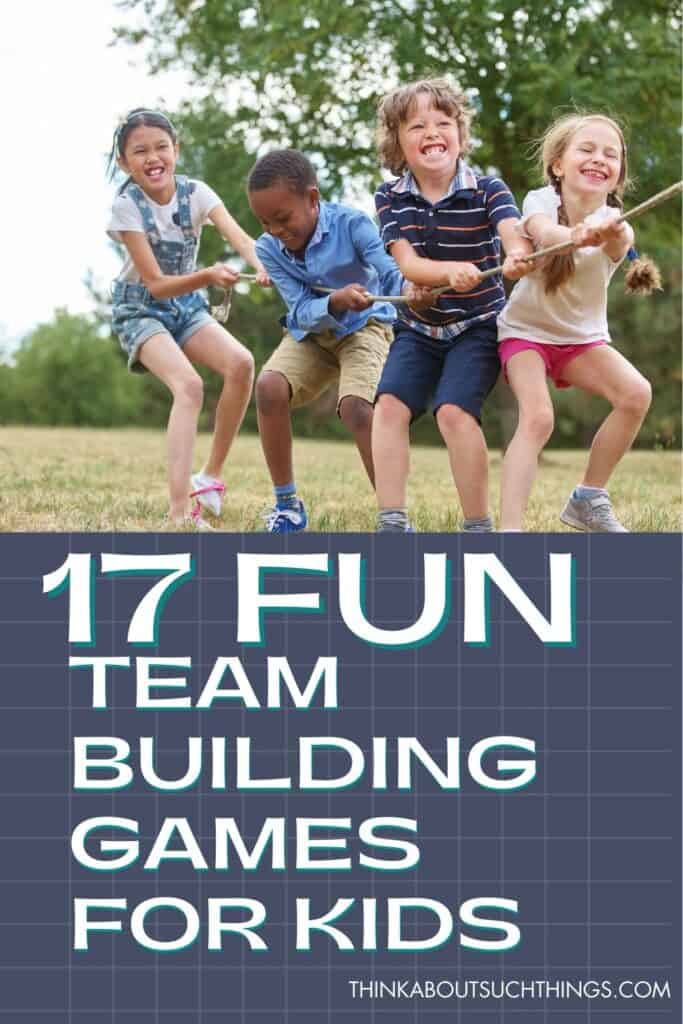
Criteria for Choosing the Best Team-Building Games for Kids
Choosing the right team-building games can make all the difference. Here are some criteria to consider:
- Age Appropriateness : Ensure the game is suitable for the age group you’re working with. What will work for 12 year olds might not work for 6 year olds.
- Engagement Level : The game should be fun and engaging to keep the kids interested.
- Learning Outcomes : Pick games that promote essential skills like teamwork, communication, and problem-solving.
- Safety : Ensure the game is safe and doesn’t pose any risks to the children.
Top 17 Team-Building Games for Kids
If you are looking for team-building games you can play in a classroom, please check 9 Team Building Activities for the Classroom
1. Silent Line Up
This game is perfect for honing non-verbal communication skills. Kids must line up based on criteria like height or birthday without speaking.
- How to Play : Divide the kids into groups and give them the challenge on how they should line up. They must use gestures and body language to communicate.
- Tip : This game works well as an icebreaker.
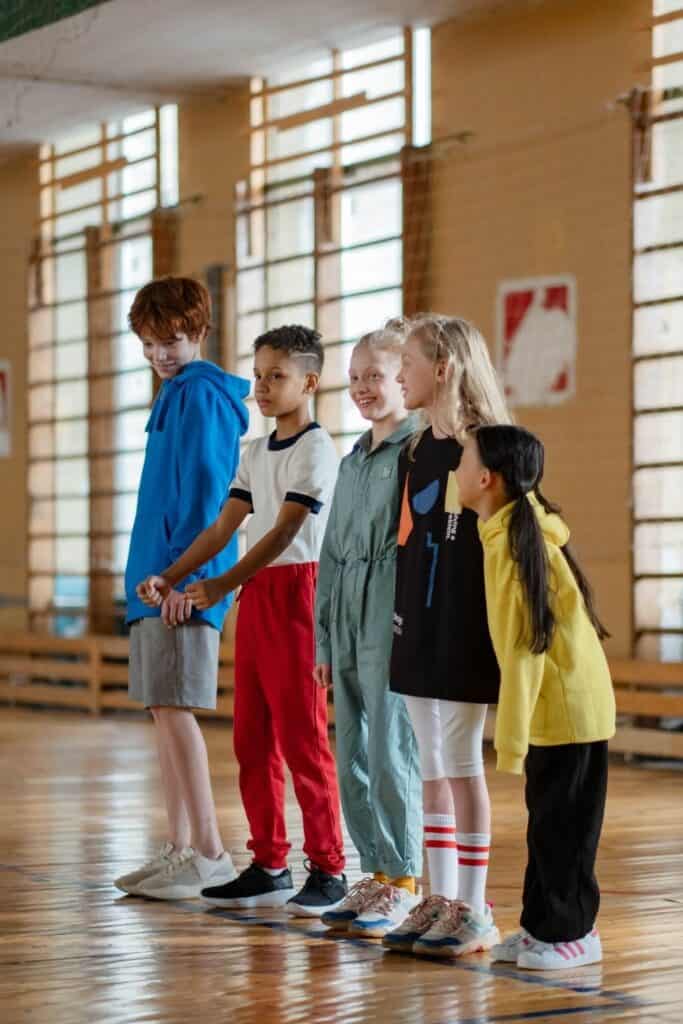
2. Newspaper Fashion Show
Encourage creativity and teamwork by having kids design outfits using newspapers.
- How to Play : Provide newspapers, tape, and scissors. Each team has 20 minutes to create an outfit and present it.
- Tip : You can also use other materials like scrap paper, streamers, toilet paper, or magazines.
3. Sharks and Minnows
This classic game is great for physical activity and quick thinking.
- How to Play : One child (the shark) tries to tag others (the minnows) as they run across a designated area to the safe zone. The shark stands in the middle while other children are at the starting point. When you start, the shark says, “Fishy, fishy, come out and play!”
- Tip : Rotate the shark role to keep everyone involved.
4. Marshmallow-and-Toothpick Challenge
A fantastic way to teach engineering concepts and teamwork.
- How to Play : Teams use marshmallows and toothpicks to build the tallest freestanding structure.
- Tip : Encourage kids to brainstorm and plan before they start building.

5. Balloon Walking
This game is hilarious and teaches balance and coordination.
- How to Play : Teams must walk a certain distance with a balloon between their legs without dropping it.
- Tip : Make it a relay race for added excitement.
6. Human Knot
A great icebreaker that promotes problem-solving and cooperation.
- How to Play : Kids stand in a circle, reach across to hold hands with two different people, and then work together to untangle themselves.
- Tip : Encourage them to communicate clearly and listen to each other.
7. Scavenger Hunt
Encourages teamwork and critical thinking.
- How to Play : Create a list of items for kids to find around the area. Teams race to collect all items first.
- Tip : Include riddles or clues to make it more challenging. This can be done indoor or outdoor.
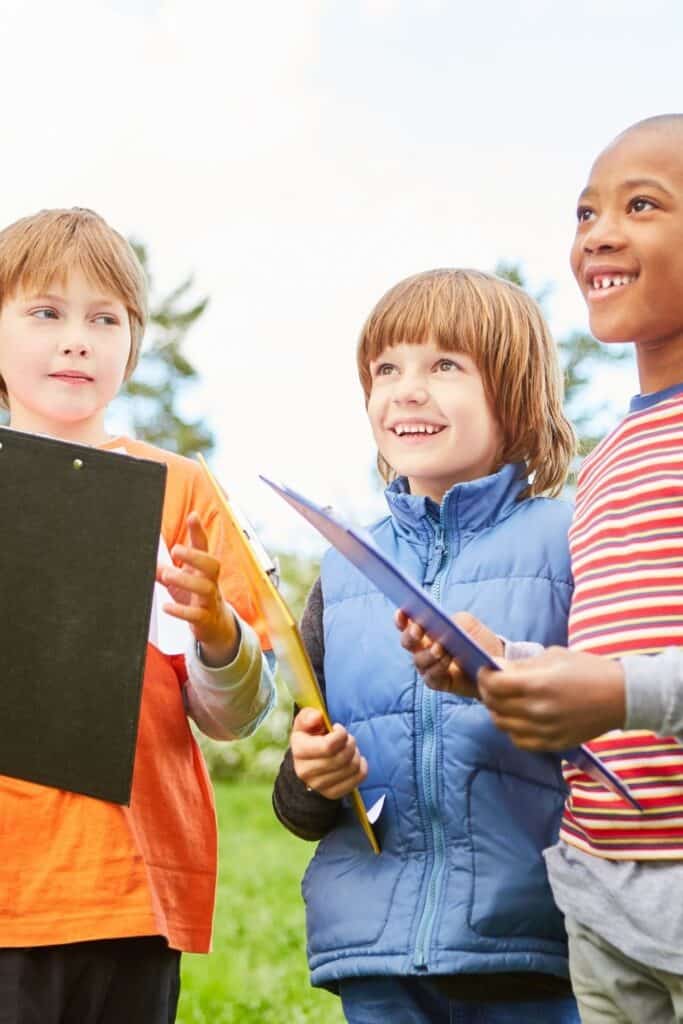
8. Group Jump Rope
This seems like a recess activity, but this can actually be a great way to encourage growth in coordination and teamwork.
- How to Play : Kids must jump a long rope simultaneously without messing up. Break them up in teams and let them see how many jumps they can go to.
- Tip : Start slow and gradually speed up the rope.
9. Rock, Paper, Scissors Tag
A fun twist on the classic game that gets kids moving.
- How to Play : Each team stands on their respective outside lines, facing each other. When the leader gives the signal, both teams walk to the center line and pair up with someone from the opposite team. On the next signal, each pair plays Rock Paper Scissors. The player who loses quickly turns and runs back to their outside line, while the winner chases after them, trying to tag them before they reach safety. After the round, everyone returns to their original lines. One team shifts down one spot so that each player faces a new opponent for the next round. Repeat the process, and let the fun continue!
- Tip : Define clear boundaries to keep the game organized.
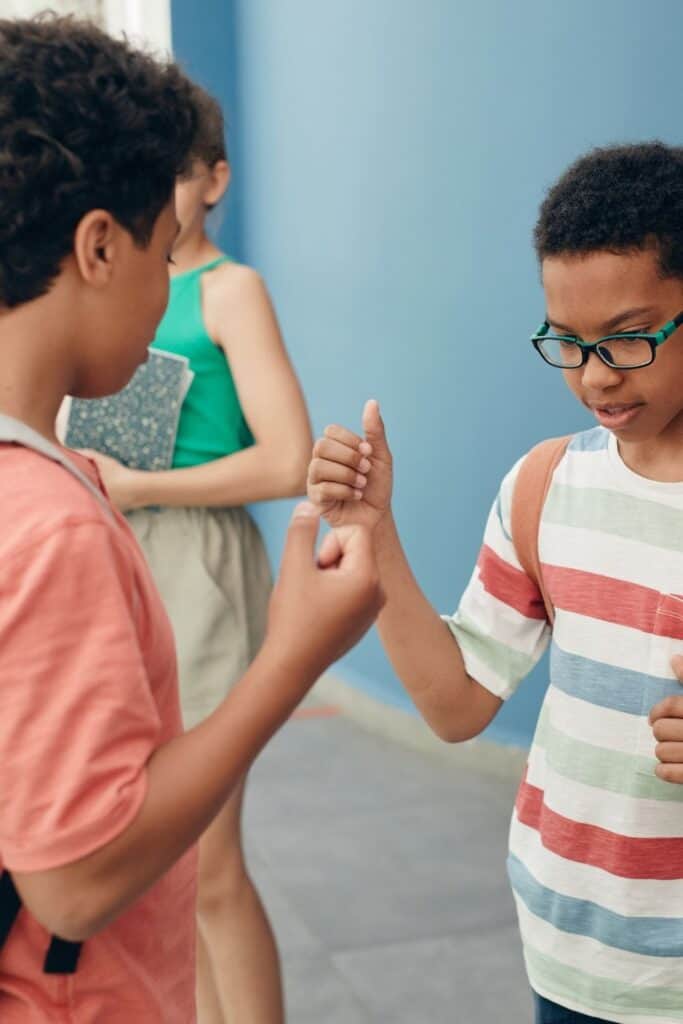
10. Blind Minefield
Great for building trust and communication.
- How to Play : Set up a “minefield” with objects. One blindfolded child must cross it guided only by their partner’s verbal instructions. Make each minefield have points so at the end of the minefield that can see how well they did.
- Tip : Rotate roles so each child experiences both guiding and being guided.
11. Trust Walk
Another excellent game for building trust and communication.
- How to Play : Pairs of kids take turns being blindfolded and led around an obstacle course by their partner.
- Tip : Use simple obstacles like chairs or cones.
12. Art Reproduction Puzzle
Encourages attention to detail and teamwork.
- How to Play : Divide students into groups of 5 or 7 Give each team an image and blank pieces of card stock, one per member. Each team cuts the image into the same number of pieces as their members. Players then reproduce their piece of the image onto their blank card stock using pencils, colored pencils, or markers. If the image is cut into irregular shapes, they should cut their blank paper to match. Once all teams have created their puzzle pieces, they swap pieces with another team and work together to solve the new puzzle.
- Tip : Use complex images to increase difficulty.
13. Hey, Me Too!
This game highlights common traits among students. and promotes bonding.
- How to Play : First, have students create auction paddles using plain paper plates attached to large Popsicle sticks. Everyone sits at their desks. The teacher calls out a trait like curly hair or freckles, and students with that trait raise their paddles. Give students a moment to observe and note similarities. Repeat with different traits.
- Tip : Use this game as a warm-up or icebreaker and pick a specific topic like “favorite desserts”
14. Fingertip Hula-Hoop
A fun way to encourage coordination and communication
- How to Play : Kids stand in a circle, arms raised, index fingers extended. Place a Hula-Hoop on their fingertips. The goal is to lower the Hula-Hoop to the ground without dropping it and without hooking or holding it. For an added challenge, restrict or limit talking.
- Tip : Time the teams to add a competitive element.
15. Team Tic-Tac-Toe
Combines strategy with physical activity.
- How to Play : Set up a tic-tac-toe grid on the ground. Teams use different colored bean bags to play.
- Tip : Use this game to teach strategic thinking.
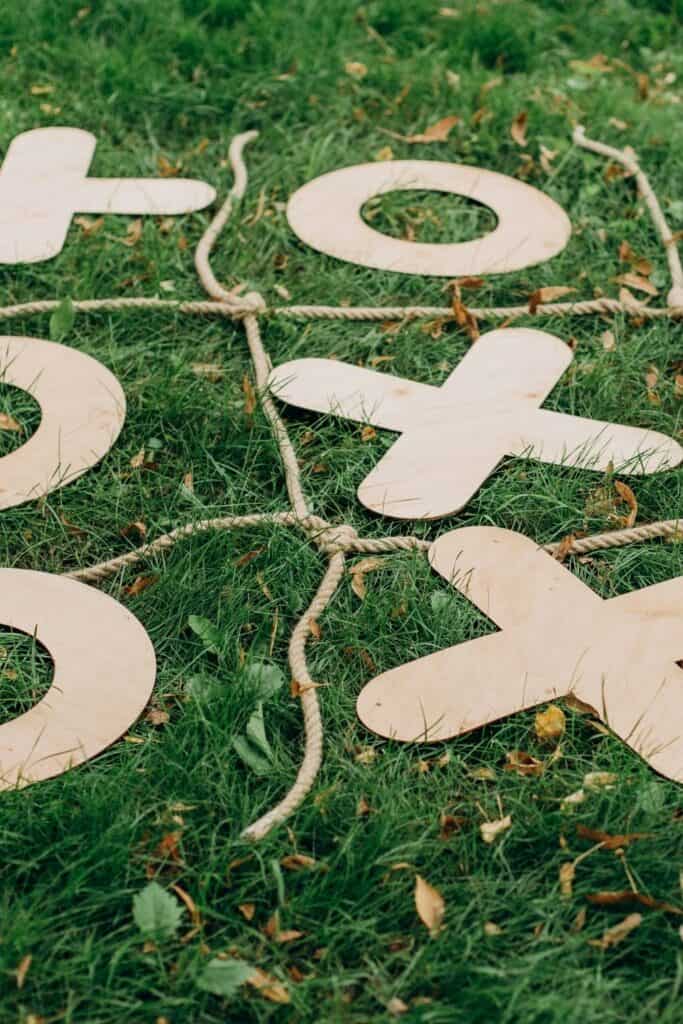
16. Four-Way Tug-of-War
A fun variation of the classic game that promotes teamwork and physical strength.
- How to Play : Set up a cross-shaped rope with four teams pulling in different directions.
- Tip : Ensure safety by having a soft landing area.
17. Flip-the-Tarp Challenge
This game teaches problem-solving and cooperation.
- How to Play : Teams stand on a tarp and must flip it over without stepping off.
- Tip : Challenge teams to find creative solutions.
Playing team-building games is a fantastic way to teach kids the importance of cooperation, communication, and problem-solving. Incorporating these activities into your routine will help foster a sense of community and teamwork that will benefit them throughout their lives. I hope you got inspired by these ideas for your group.
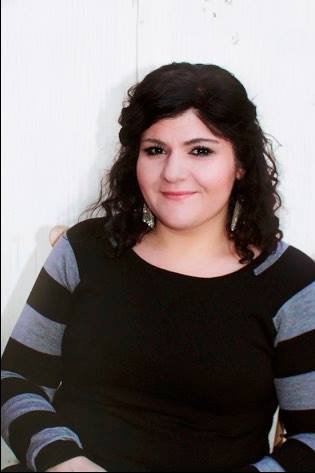
Melissa is a passionate minister, speaker and an ongoing learner of the Bible. She has been involved in church and vocational ministry for over 18 years. And is the founder of Think About Such Things. She has the heart to equip the saints by helping them get into the Word of God and fall more in love with Jesus. She also enjoys family, cooking, and reading.
She has spoken in churches in California, Oregon, Texas, and Mexico and has been featured in Guidepost Magazine and All Recipes Magazine. Read More…
I accept the Privacy Policy
A .gov website belongs to an official government organization in the United States.
A lock ( ) or https:// means you've safely connected to the .gov website. Share sensitive information only on official, secure websites.
- Communicating With Your Child
- Creating Structure and Rules
- Giving Directions
- Using Discipline and Consequences
- Using Time-Out
Related Topics:
- Essentials for Parenting Teens
Practice Parenting Skills: Using Time-Out
- Toddlers and preschoolers will sometimes resist going into time-out.
- Parents and caregivers can use time-out to help their children understand which behaviors are acceptable.
- Watch the videos and read the time-out scenarios to learn helpful time-out techniques.
Watch: learn about using time-out
See how time-out works and what steps you need to follow in order for it to be effective for your child.
Watch: using time-out: she knows
Time-out never seems to be effective for one mother, until she learns that her daughter is sneaking out during time-out. Journey with her as she sets out to effectively use time-out.
Scenario 1: Leaving time-out to get a toy
Scenario, what would you do, choice a: you raise your voice and yell at them to stop getting up and to put down the toy..
Staying calm can be hard. When you yell, you teach your child yelling is how to solve a problem. Try a different choice.
Choice B: After taking them back to their chair a couple of times and taking away the toy, you just give up. You can't make your child take a time-out if they won't stay in the chair.
If you give up, you may teach your child they can get out of time-out if they make it difficult for you. Try a different choice.
Choice C: You take away the toy. Calmly tell them they will lose a privilege like watching tv or going to the playground if they get up again.
This is a good choice! Make sure you follow through with taking away the privilege if they don't stay in time-out.
Scenario 2: Managing a bad attitude
Choice a: you tell your child that they have to be quiet if they want to get out of time-out..
If you talk to your child, they learn whining and yelling will get your attention during time-out. As long as they are safe, ignore them. Try a different choice.
Choice B: You tell them that they will get a treat if they stop whining.
If you say you will give them a treat, you teach your child whining and yelling during time-out gets your attention and rewards. When your child is in time-out, you should not talk to them. Try a different choice.
Choice C: You ignore the whining and yelling.
Yes! Your child is trying to get your attention. Let them blow off some steam. When they are quiet for at least 5 seconds, ask if they are ready to come out.
Scenario 3: Playing in time-out
Choice a: you take them out of time-out. there no point keeping your child there if they are just having fun.
If you take your child out of time-out, they learn playing gets your attention and makes time-out end early. Try a different choice.
Choice B: You calmly take the toy away and start the time over. You keep a closer eye on your child to make sure they don't try to get another toy.
Good idea. Make sure you don’t look at or talk to them. You could also try standing nearby to make sure they stay where you put them.
Choice C: You decide you need to distract your child to keep them from getting other toys, so you start singing along with them.
Although you are keeping your child from getting out of the chair, they are getting your attention. Try a different choice.
Scenario 4: Refuses to go to time-out
Choice a: you drag them by their arms to the time-out spot..
Dragging or pulling your child to time-out teaches that aggression is the right response to being hit. This option could also hurt you or your child. Try a different choice.
Choice B: You don't give the time-out because it's impossible to deal with your child when they get like this!
If you don’t follow through with a time-out, your child learns hitting you is okay. You may need to first cool down and think about how to respond before following through with a time-out. Try a different choice.
Choice C: You gently, but physically, take them to the time-out chair.
Good choice! If your child resists more, you can also carry them to time-out with their face turned away from you, holding them under the arms and around the chest. The “barrel carry” is an efficient and safe way to get your child to the time-out spot.
Essentials for Parenting Toddlers
Essentials for Parenting Toddlers and Preschoolers is a free resource for parents of 2 to 4-year-olds, providing information to build positive relationships.
No disponible en español
How to help kids make friends
A pediatric psychologist shares 6 tips on how to support your child in developing skills to build healthy friendships..

Friendships are crucial to human development. Research shows that people thrive in social settings, by in-person interaction and by having high-quality friendships. Friendships are one of the best ways to protect kids from loneliness and isolation – and boost their self-esteem and mental health .
Helping your child develop good social skills early on helps set them up for having successful relationships later on – both professionally and personally.
Ranya Alnatour, PsyD , Pediatric Psychologist at Children's Health℠, shares common challenges that children face when making friends and gives tips on how parents can support them.
What can hinder or prevent children from making friends?
There are many factors that can make it challenging for kids to make friends, including:
- Electronics and social media. Much of kids' communication is done via text or through online games or social media. That means there's less playing outside with friends, which is where kids learn relationship-building skills.
- ADHD and autism. Conditions like ADHD and autism add a layer of challenge to making friends. Kids who have these conditions often need extra practice and focus on developing social skills.
- The pandemic. The COVID‑19 pandemic posed a huge obstacle to the development of good social skills because it was isolating for many children.
- Lack of modeling. Many parents also communicate more through devices instead of calling friends or interacting with them in person.
6 tips on how to help your child make friends
1. plan in-person activities.
A great way to give a child more in-person interaction time is to encourage them to sign up for a sport or a club at school, a local community group, center, church or library.
"It gives kids a big social advantage to be surrounded by kids who have similar interests. Sports and clubs give children time to get to know each other. Plus, friendships that are interest-based may last longer because they're not dependent on being in the same school or class," says Dr. Alnatour.
2. Teach emotional regulation
Teaching kids good emotional regulation is one of the building blocks to communicating well and developing healthy relationships.
Helping a child identify their emotions and cope with big emotions is a really important skill needed to maintain a healthy friendship. Dr. Ranya Alnatour
Emotions are not just in our mind, but also in our body. That's why it can be effective to first calm the body through deep breathing , which then allows the mind to become calmer.
3. Help them build conflict-resolution and communication skills
A helpful communication tool you can teach your child are "I" messages (messages that start with "I"). If they're feeling upset with a friend, using an "I" message can help them express what they are feeling without placing blame.
Practicing using “I” messages can be transformative for kids – and parents too. They don't put people on the defensive, which helps resolve conflict, hurt feelings and misunderstandings.
Here are a few examples of "I" messages:
Instead of: You ignored me at recess today. Try: I felt sad when you didn't play with me at recess today. I'd like it if we could play together.
Instead of: You are rushing me. Try: I feel overwhelmed because I don't have enough time. I'd like it if you could give more time, please.
4. Limit screen time
Limiting screen time has many benefits, including the healthy development of your child's social skills. By not having your child in front of a screen for too many hours of the day, you're providing them with more time to practice in-person communication skills at home, which many kids need. And home is often the safest place for kids to practice.
5. Teach your child how to be a good friend
Dr. Alnatour often asks kids to reflect on what makes a good friend. She does this to help kids understand that a good friend is not just about wanting a kid to like them, it's also about making sure that they like the other person too.
Often, a child will share that a good friend is someone who shares toys, who listens, who is kind, who makes them laugh or who invites them to play.
"After a kid identifies what they think is important in a good friend, I tell them to model those qualities in themselves. When they do that, they're more likely to attract people who have those qualities. So if they want a friend to share more, they should be willing to share with them. If they want somebody to be kind, they need to be kind first," Dr. Alnatour says.
Learn tips for how to raise kind kids .
6. Establish a routine of checking in
Not all families can sit down and have a family dinner every night. But try to establish a few times a week where you ask about their day and model taking an interest in others and asking questions. This will give your child the opportunities they need to practice those important skills.
Here are a few conversation starters and questions to ask your kids:
- How are you feeling today?
- What was the best thing that happened to you today?
- What was the most challenging thing about your day?
- Did anyone get in trouble today?
- What was your favorite thing you learned today?
- Did you do anything brave or kind today?
- What are you most grateful for today?
"These can seem like simple questions. But they help build the basic social skills every kid needs to build friendships and feel successful," Dr. Alnatour says.
When should parents step in if a child is having a problem with a friend?
Step in if you witness or hear about bullying or bullying behavior.
"If there's something unsafe like bullying is going on, I always recommend parents have a conversation with the teacher or the other parent to put a stop to it as soon as possible," Dr. Alnatour says.
Read more about how to spot and stop bullying .
You can also remind your child that it's OK to ask for help from adults when they're not able to solve a problem with a friend or need time to cool down.
But when it's a typical conflict among kids, it can be an opportunity to work on building perspective and empathy with your child, which will help strengthen their problem-solving and negotiation skills.
Here's an example:
- Say a younger child at the playground is not sharing a toy with your child. You can try helping your child build perspective by asking them, "Why do you think they're not sharing their toy with you?"
- Together, you might come up with a possibility like: Maybe they just got the toy two minutes ago and they haven't had enough time with it to be ready to share.
- Then, you might have your child ask the other child if they might be willing to share the toy after having another 5 minutes with it.
By practicing this type of perspective building with your child, they'll start to do it on their own.
Get support for a child who's struggling to make friends
If you need extra support building your child's social skills and helping them make friends, check in with your pediatrician. They can talk to you about your child's behavior and development and provide recommendations. They may also help you identify early warning signs of behavioral health conditions that can impact a child's social skills.
If your child has ADHD or autism, seek support from a behavioral therapist or the school counselor who may be able to help with appropriate accommodations at school .
Children's Health offers one of the most comprehensive specialty programs available for children and teens who need mental health services, staffed by experts with access to the latest research and treatments. Learn more about our Pediatric Psychiatry and Psychology services or Virtual Visit Behavioral Health program .

You are now subscribed to the Children's Health Family Newsletter.
Children's Health will not sell, share or rent your information to third parties. Please read our privacy policy.
Children's Health Family Newsletter
Get health tips and parenting advice from Children's Health experts sent straight to your inbox twice a month.
social skills, communication, culture, development, behavior, anxiety, mental health

IMAGES
COMMENTS
If we take a look at the steps involved in solving a problem, we can see that there are many layers involved and different types of skills. Here are the problem-solving steps according to the University of Ken. Step 1: Identify the problem. Step 2: Define the problem. Step 3: Examine the options.
5. Take advantage of natural curiosities and interests. One approach to helping young children practice problem-solving skills is in the discovery of something they are authentically interested in learning about. Adam Cole, music director at -inspired philosophy where a teacher gives students "provocations.".
Puzzles. Puzzles are fun and a great way to encourage cognitive development in children. They are great for spacial reasoning and strengthening problem-solving skills. They also develop memory skills, critical thinking, and the ability to plan and execute the plan. Toddlers will enjoy the simple puzzles, and preschoolers will do great with ...
Here are 3 Simple Ways to Teach Preschoolers to Solve Problems. 1.Teaching executive functioning and problem solving skills in everyday situations will support the growth of a child's prefrontal cortex. For example, these activities that teach executive functioning at the beach show how much thought and preparation goes into building a simple ...
Cheer on the students for solving the problem and stay close just in case they need more support. Throughout the day, try to make EVERYTHING a problem to solve. Then model, talk through your thinking out loud, and use visuals to support students as they try to solve a problem. For example, I may put out a big ball of playdough in the center of ...
When teaching your preschool-aged child how to problem solve, consider these four steps that are used in early-childhood classrooms : Identify the problem. Brainstorm solutions to the problem. Choose and implement one of the solutions. Evaluate how that solution resolved the problem. Following this four-step guideline can help the adults in a ...
1. Model Effective Problem-Solving When YOU encounter a challenge, do a "think-aloud" for the benefit of your child. MODEL how to apply the same problem-solving skills you've been working on together, giving the real-world examples that she can implement in her own life.. At the same time, show your child a willingness to make mistakes.Everyone encounters problems, and that's okay.
By honing their problem-solving abilities, we're preparing kids to face the unforeseen challenges of the world outside. Enhances Cognitive Growth: Otherwise known as cognitive development. Problem-solving isn't just about finding solutions. It's about thinking critically, analyzing situations, and making decisions.
Here's a list of activities designed to enhance their math problem-solving skills: Sorting and Categorizing: Children sort objects by color, size, shape, or type, which develops their ability to recognize patterns and categories. Counting Games: Using toys, beads, or blocks to count aloud helps preschoolers understand numbers and quantity.
Play allows for many naturally occurring problem solving opportunities. Here's a list of activities that will help build problem solving skills in preschoolers. Puzzles. Memory games. Construction toys. Pattern blocks. Sort by color, shape, or size. Working with patterns. Trains & train tracks.
Here are four strategies for teaching problem-solving skills to children: Set a good example. Children learn by watching us; let them see how you deal with problems. Involve your child in family problem-solving meetings. Encourage your child to participate in solving a small family problem. They'll learn while building confidence. Teach your ...
Children will have to follow the clues and solve puzzles to find the ultimate prize. This activity encourages problem-solving, critical thinking, and teamwork. 7. Scavenger Hunt. Playing Scavenger Hunt can be a fun way for our kids to put their creative problem-solving skills to good use.
As we saw, Dr. Fettig outlines four important steps to go through with preschool children to help teach problem-solving skills. First of all, helping children identify what the problem is in the first place. Next, inviting children to generate and evaluate multiple solutions through brainstorming, as you were sharing, Gail, and then evaluate ...
Problem-Solving Skills for Kids: Student Strategies. These are strategies your students can use during independent work time to become creative problem solvers. 1. Go Step-By-Step Through The Problem-Solving Sequence. Post problem-solving anchor charts and references on your classroom wall or pin them to your Google Classroom - anything to make ...
Modeling Positivity: Show a positive attitude when facing challenges, demonstrating that problems are opportunities for growth and learning. Celebrating Solutions: Whenever a problem is solved, whether it's big or small, celebrate the achievement. This reinforces problem-solving as a positive and rewarding experience.
3. Treasure hunt. Divide the children into groups and give them clues to find hidden objects. Activities such as treasure hunt evidently improve their problem-solving skills and induce the idea of competition. 4. Puzzles. Puzzles can make a child think out of the box. They can develop a child's logical reasoning.
Lesson Plan: Solving Problems Peacefully Background & Learning Outcomes: This activity [2] is written for children ages 4-6 for a child care setting, preschool, kindergarten or in the home. It can be adapted, however for other ages. By teaching children basic problem solving steps and providing opportunities for them to practice this skill, children can become competent problem solvers.
12. The Alphabet Game. This is one of the best cooperative problem-solving activities for kids that improve their problem-solving skills by stimulating their vocabulary, memory, and creativity. It also enhances their spelling and writing skills. To play this game, you will need a piece of paper, a pencil, and a timer.
The following activities are fun and will help them develop problem-solving skills. Circle Time: This is a great activity for kids to learn how to take turns and share. Give each child a turn to be in the center of the circle and share something about themselves such as their favorite color, food, animal, etc.
2. Ask for Advice. Ask your kids for advice when you are struggling with something. Your authenticity teaches them that it's common to make mistakes and face challenges. When you let them know that their ideas are valued, they'll gain the confidence to attempt solving problems on their own. 3.
2) Have Patience. Recognize those moments when you can spend a few extra minutes allowing a child to solve a problem on their own rather than quickly solving it for them. 3) Play Problem Solving Games. Games are for all ages and not just for young children: from hide-and-go-seek to capture the flag. 4) Model.
Problem-Solving Example: When our children spill their milk at snack time, resist the urge to jump up and grab a towel. Maybe the child exclaims, "I spilled!". Maybe the child just sits there and stares at the puddle. Either way, encourage them to work through it like this:
Such impromptu activities help children identify a problem, formulate a solution, and execute it. 12. Group drawing. Another excellent team-building activity for sharpening children's problem-solving and communication skills is group drawing. Divide children into teams of three.
In this article for teachers, Jennie Pennant outlines how group-worthy tasks support the development of children's problem-solving skills. article Developing the classroom culture: using the Dotty Six Activity as a springboard for investigation.
Collaborative problem-solving helps children learn from others, share ideas, and develop social skills. Role-Playing: Use role-playing exercises to simulate real-life situations that require problem-solving. This can be particularly effective in teaching social problem-solving skills and conflict resolution.
These game can become crucial for children's development. It helps them develop essential social skills like communication, cooperation, and problem-solving. These activities also promote a sense of community, which is vital for their overall growth. Not to mention, they are a lot of fun. Once the kids realize these are "games" they are ...
527 likes, 3 comments. " Enhancing Problem-Solving Skills in Preschool! Check out our follow-up lesson on problem-solving, where we reinforce the skills taught in our initial sessions. After exploring problem-solving techniques, we delve into the engaging book "Problem Solved" by Jan Thomas. In this video, I'll guide you through how we use a specially designed resource that presents various ...
Social problem-solving is an important skill. Children must learn how to analyze, understand, and choose an appropriate response to social problems or conflict. How To Teach Social Skills to Kids.
If you say you will give them a treat, you teach your child whining and yelling during time-out gets your attention and rewards. When your child is in time-out, you should not talk to them. Try a different choice. Choice C: You ignore the whining and yelling. Yes! Your child is trying to get your attention. Let them blow off some steam.
And home is often the safest place for kids to practice. 5. Teach your child how to be a good friend. Dr. Alnatour often asks kids to reflect on what makes a good friend. She does this to help kids understand that a good friend is not just about wanting a kid to like them, it's also about making sure that they like the other person too.